Raluca Berchiu





















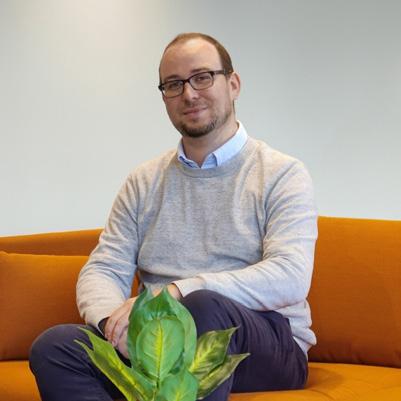

being urged to ‘not believe the hype’ surrounding AI may be a surprising headline, but how AI data strategies are introduced is crucial to ensure success.
It’s important to be realistic. Overlyambitious expectations have led to disappointment among stakeholders, or even outright failure.
And human employees shouldn’t be overlooked either. A combined effort, from human and machine, will play a crucial role in developing a successful AI-data strategy. This month we also look into the importance of agile in digital transformations. With economic pressures and a need for organisations to adapt, an agile approach can make digital transformations faster and more effective.
By pairing digital and agile transformation, companies can get the best of both worlds, benefitting from a system that enables continuous improvement. Rather than having a finite end, it’s important for organisations to adapt quickly.
As I was told this month: “there is always another step forward in the digital journey.”
MARCUS
Businesses understand that artificial intelligence and machine learning will transform the way they work with data, but some executives appear to be confused about the best course of action to take. It’s critical that stakeholders get the foundations right.
“A combined effort, from human and machine, will play a crucial role in developing a successful AI-data strategy.”
















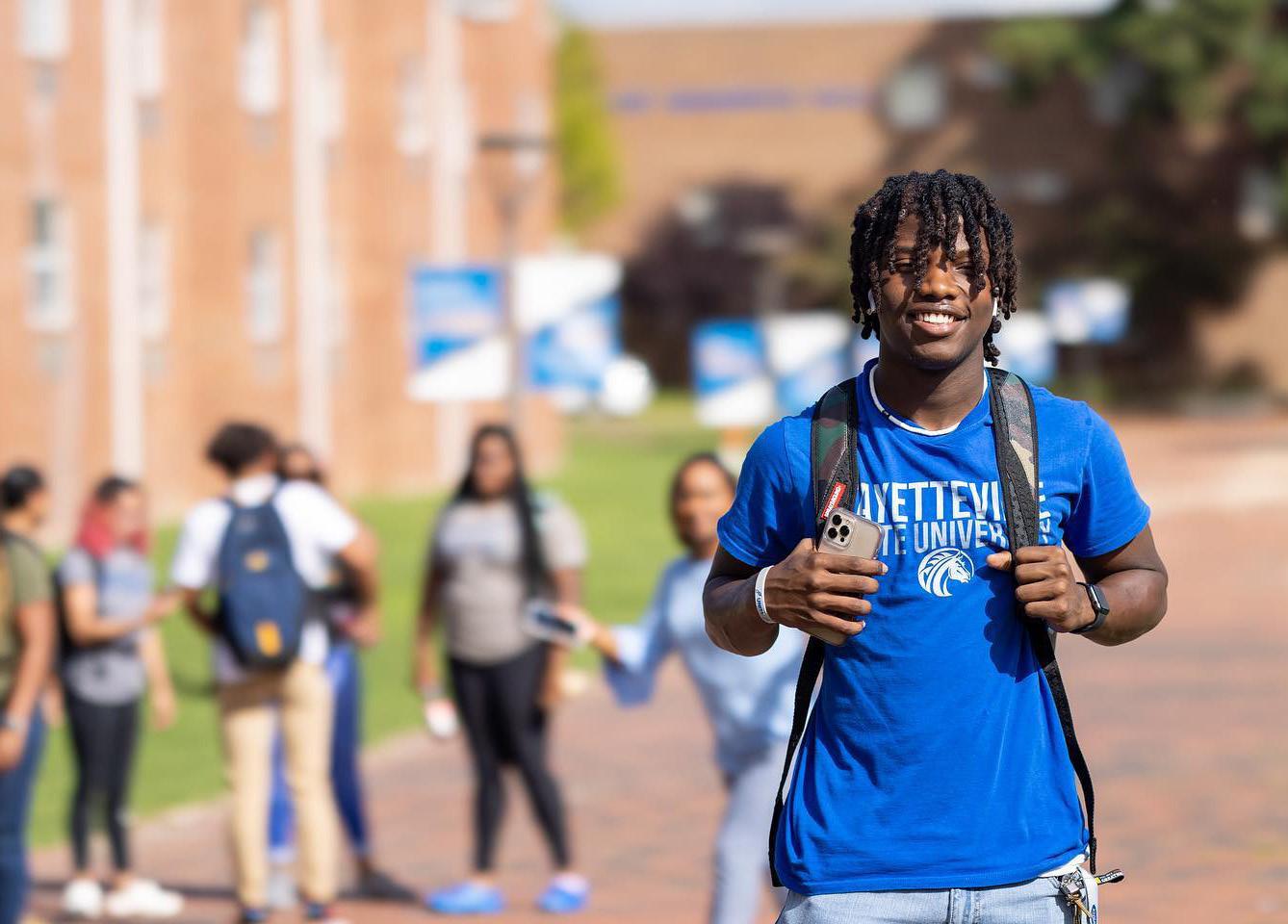



Executives from Appian, AWS, and Xebia share their collaborative efforts and excitement about their partnership in low-code, cloud, and sustainability.
Technology is instrumental to achieving next-level capabilities across industries. But organizations that want to operate sustainably must choose technology that lets them adhere to strong environmental, social, and governance principles.


Appian Corporation, a process automation leader, is a critical piece of the digital transformation and sustainability puzzle. The enterprise-grade Appian Low-Code Platform is built to simplify today’s complex business processes, with process mining, workflow, and automation capabilities.
“By quickly building apps that streamline and automate workflows, organizations are using Appian to make their processes for monitoring and reporting on ESG initiatives faster, simpler, and more effective,” says Meryl Gibbs, Emerging Industries Leader at Appian.
“Both AWS and Appcino are amazing partners of ours,” says Michael Heffner, VP Solutions and Industry Go To Market at Appian. “We have an extremely long legacy engagement with AWS as our trusted, go-to-market partner and Appcino builds “meaningful, business-focused applications on the Appian platform and is amazing in all things ESG.”
Digital transformation in ESG.
As an AWS leader enabling sustainability solutions built on the cloud, Mary Wilson, Global Sustainability Lead at AWS, talks about the partnership with Appian.
“Our objective is to help our customers achieve sustainability goals across their business operations,” says Wilson. “[This means] looking at data availability, meaning access to more data, and enabling actionable insights. “Lowcode, cloud-enabled, technologies will allow organizations to build fast, learn fast, iterate, and continue to improve these insights to drive their sustainability outcomes.”
Tarun Khatri, Co-Founder & Executive Director of Appcino (product part of Xebia), explains just how critical ESG is in the face of digital transformation. “The investment community now considers ESG reporting as a major factor for measuring performance,” says Khatri The collaboration will continually uncover new insights and provides customers the opportunity to accelerate their ESG goals with speed and security.

Girls’ Tech Day, organised by AWS, is aiming to eliminate the gender gap by inspiring and empowering young girls and women to pursue a career in technology.
Now in its fourth year, Girls’ Tech Day has already impacted more than 7,000 young women in 12 countries across the world. The free learning days focus on each of the science, technology, engineering, arts, and maths (STEAM) areas, with activities designed to educate, inspire, and, above all, to be enjoyed.
This year’s events kicked off in Virginia in October, with in-person events taking place in locations across the US, India, and Australia until the end of December.

During this rapid period of digital transformation enterprises are racing to the cloud. However development teams are struggling with certain challenges.

A recent global survey by Couchbase found that these teams are under pressure and under-supported.
It was found that 88% of respondents are aware of challenges faced by development teams, with the top issues including that deadlines and agility requirements were difficult to meet (42%); that they were being asked to do too much in too little time (40%); or that they did not have the skills (24%) or technology (23%) they needed.
A key element of solving these issues will be improving the developer experience by providing developers the tools they need to be more creative and productive.
Cloud security provider Zscaler has announced it has achieved carbon neutral status for 2022, while setting plans to reach net zero emissions by 2025.
There are signs that the ongoing automotive manufacturing crisis could be easing, as Tesla reduced waiting times in China on its two best-sellers - the entry-level Model 3 and Model Y SUV.
Digital bank Revolut suffered a breach exposing the data of over 50,000 customers. The firm, which has more than 20 million customers, said the number accounts for 0.16% of its customers.
A post-pandemic decline has hit the global wearables segment, with sales falling 6.9% YoY in Q2 2022. According to IDC, demand declined due to inflation, fears of a recession, and consumer austerity.
First formulated in the 1980s by physicists including Richard Feynman, quantum computing and its related technologies are developing at pace. We explore the evolution of a computing revolution.


Scientist proposes computer under quantum principles Scientist Paul Benioff is the first to propose a computer operating under the principles of quantum mechanics, based on Alan Turing’s paper tape computer described in a 1936 paper. Thirteen years later, in 1994, MIT mathematician Peter Shor would present an algorithm that could outperform the best classical computing approach.
Scientists create the world’s first functioning quantum computer In the first experiment to successfully provide concrete proof of quantum computing’s potential, researchers from Oxford University, IBM, UC Berkeley, Stanford University and MIT use nuclear magnetic resonance to create an array of two qubits in a working quantum computer. Two years later, scientists create a seven-qubit quantum computer.
First commercially available quantum annealer

D-Wave Systems announce D-Wave One, described as "the world's first commercially available quantum computer", operating on a 128-qubit chipset using quantum annealing (a general method for finding the global minimum of a function by a process using quantum fluctuations) to solve optimisation problems.
Quantum computing made available through the cloud

IBM Research announces that it is making quantum computing available to members of the public via the cloud for the first time. In late 2017 and early 2018, IBM, Intel, and Google each report testing quantum processors containing 50, 49, and 72 qubits respectively.
Google declares it’s attained quantum supremacy
Google claims it has achieved quantum supremacy, saying its experimental quantum computer, Sycamore, performed a series of operations in 200 seconds that would take a supercomputer about 10,000 years to complete. IBM responds, suggesting it could take 2.5 days instead of 10,000 years.
‘Super fridge’ to cool tomorrow’s quantum data centres
IBM reveals the world’s largest cryogenic dilution fridge, able to cool to 25 milli-Kelvin (mK), just thousandths of a degree above absolute zero. Large-scale cryogenic systems will be required to meet the cooling needs of tomorrow’s quantum data centres, as researchers aim for machines with one million qubits.
From the music industry to machine learning.
Secondmind CEO Gary Brotman speaks to Technology Magazine about parallels between the music industry and AI, and being inspired by machine learning.
Music and technology have been constants in the life of Secondmind CEO Gary Brotman. Having held product and marketing leadership positions at successful startups and established enterprises including Musicmatch and Yahoo, he served as the Head of AI Strategy and Product Planning at Qualcomm, where he spearheaded the development and commercialisation of the company’s AI Engine across the Snapdragon Mobile Platform portfolio, before joining Secondmind in October 2019 and being made CEO in 2021.
You used to work in the music industry – what was that like and what did you learn?
“Music and technology have been constants in my life and I’ve been fortunate to weave them together throughout my career,” he says. “At the centre of it all has been an almost unquenchable thirst for knowledge and a desire to create and evangelise new stuff that improves peoples’ lives.
“There are many parallels between the music industry and the AI and machine learning domain,” he adds. “The dawn of MP3s, expanded reach of the Internet, and access to a ‘celestial jukebox’ let consumers gorge on more music than they could listen to over multiple lifetimes. This transformed the business of music and resulted in new ways for music fans to engage with artists and their music. Similarly, the proliferation of AI and machine learning (ML) technology has catalysed business and cultural transformation globally.”
How did using ML inspire you? Brotman was first inspired by ML at Musicmatch, when developing a popular desktop software app called Musicmatch Jukebox.
“At the core of all Musicmatch products was a unique music recommendation engine powered by early ML algorithms focused on collaborative filtering,” says Brotman. “While other recommendation engines relied on explicit input from users, the Musicmatch engine observed what people actually listened to and how they interacted with the music. Musicmatch generated the most eclectic and often unexpectedly appealing listening experiences of any music services that have existed to date.
Career in digital music:
years
“This experience motivated me to focus my career on digital music over the next 15 years, which included the first half of my nearly decade-long tenure at Qualcomm. It was there
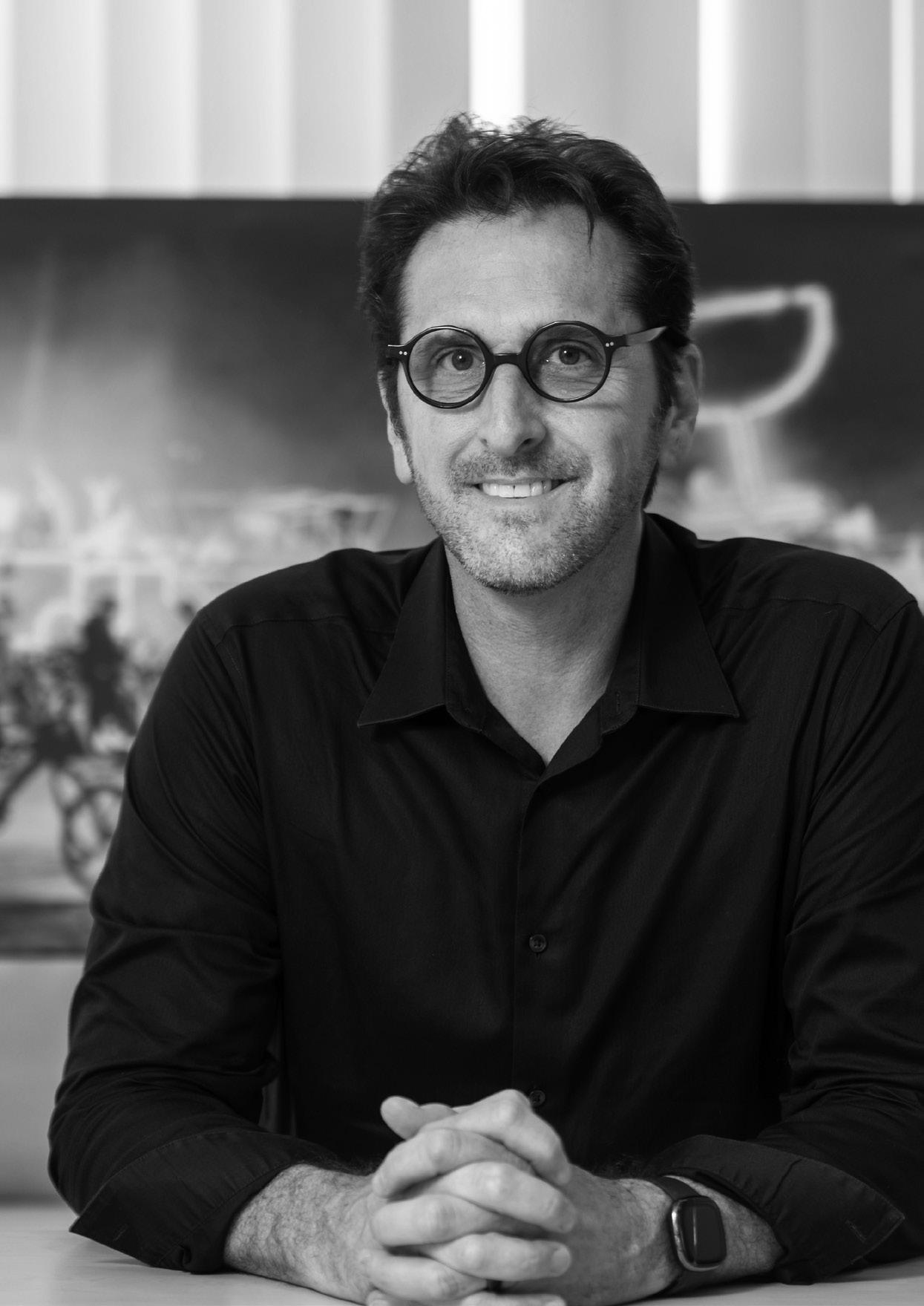
“Music and technology have been constants in my life and I’ve been fortunate to weave them together throughout my career”
that I completed my transition from marketing to product management, but the biggest shift was from music tech to ML and AI.
“I suffered from imposter syndrome the first few months on the Snapdragon product management team, where I was surrounded by ace electrical engineers and computer scientists,” says Brotman. “What I soon realised was that I had developed a deeper understanding of AI and ML than some of my peers. I didn’t know how to train a neural network or design a chip, but I understood the potential for this ‘new software’ to improve and create new user experiences at the edge.
“It was also at Qualcomm that I recognised the importance of AI and ML in making autonomous, connected and ultimately more sustainable driving a reality. Deep learning is key to ensuring selfdriving cars are safe and enabling new personalised experiences in the car. “
What kinds of products do you produce at Secondmind?
“Secondmind helps automotive engineers design better cars, faster,” Brotman says. “To achieve this, we’re developing cloud-based software for automotive engineers to optimise the design and calibration of complex systems in half the time with less data.
“Our Active Learning platform tackles the most complex engineering challenges facing car makers today and accelerates the transition to electrification and green mobility. The platform is also evolving to address the staggering complexity
of the future software defined vehicle - complexity that is already outpacing software development productivity by 400%.
What is the virtualisation story behind the AI the company deploys now?

“A key to achieving efficiency in design and development is virtualising the process and relying less on fabricating and validating physical prototypes,” Brotman says.
“Our Active Learning platform was
originally designed to optimise the performance of physical systems, like eMotors and engines, and it can do the same for a virtual system produced by a simulator.
“We’re now using the same approach to virtually optimise the design of complex systems earlier in the development process, with the end goal of giving engineers more design flexibility and compressing the development cycle from years to months to meet market demands faster.”

“I suffered from imposter syndrome the first few months on the Snapdragon product management team, where I was surrounded by ace electrical engineers and computer scientists”


Dubai-based Customer Experience Expert Raluca Berchiu supports some of MENA’s largest organisations and visionary leaders with their CX journeys and digital transformations. Here she shares her expert insights on why CX matters, especially in tough economic times
» Customer Experience shouldn’t be considered a luxury – CX is the whole ballgame!
We are wrestling with a global recession that impacts every industry. In the interest of simply surviving, companies are understandably inclined to prioritise short-term savings at the expense of long-term growth.
There is a temptation to reduce the CX spend. The temptation is amplified by the fact that most companies don’t have a proper measurement process in place to conduct a yield analysis and understand the ROI of their CX spending.If costs have to be cut, cutting them here is a recipe for disaster.
» Recession is the time to double down on CX. When faced with forces beyond our control, the answer is to focus on what is within our control. For example, the way our customers experience our brand is fully within our control. We can keep our customers close, uncover what matters to them, and serve them better. This approach will not only make them feel cared for and valued, but it will also set us up to thrive in the years ahead – a time when this recession is in the rearview mirror.
“Organisations need to supercharge their CX strategy to break out of the “sea of sameness””
Economic downturns do not last forever. With a long enough time horizon, you should be able to benefit from the market recovery. Having a robust customer experience strategy is one of the most effective ways to survive an economic recession.
The global economy has weathered many recessions. History clearly shows the value of investing in customer experience during an economic downturn. For example, in the last economic recession, companies that prioritised customer experience saw three times the shareholder returns compared to the companies that did not.
» As customers feel the pressure of rising inflation, they become more price-sensitive and more selective in their purchasing decision. They weigh more strictly on what’s essential and what’s not. They are more willing to try new companies that might offer them a more cost-effective option.
To keep these customers, you have to show them the value that only you can provide with your products and services. Organisations that make decisions based on what matters most to their customers consistently outperform competitors who put their focus elsewhere.
Steve Jobs recognised this back in 1997. When confronted during an Apple developer conference, he said: "You’ve got to start with the customer experience and work backward for the technology”. Fast forward 25 years and Apple is the most valuable company in the world.
Across every industry, digitalisation, globalisation, and the pandemic have increased today’s customers' expectations. Before you know it, customers start leaving without even complaining.
Just like the expectations of our customers, a company’s strategy should also adjust to meet the demands of the Experience Economy.
» CX can help companies in many ways:
• For companies to not just survive but thrive in the recession, they must invest in truly understanding the customer’s behaviour and anticipate their needs. This will provide the knowledge they need to design a CX architecture to deliver the most impact with maximum efficiency, rapidly accelerating them out of the downturn.

“CX is the powerhouse for revenue and growth”

• As most companies are lost in a “sea of sameness”, CX can help them to differentiate their businesses from competitors, even to the point of charging a premium price.
• CX drives loyalty and maximises customer retention. According to Harvard Business School, 74% customers feel loyal to a particular company.Their research shows that a 5% increase in customer retention can grow profit by as much as 75%. Following this, it’s also important to note that it is 6 to 7 times more expensive to acquire a customer than retaining a new one.
• CX drives recommendations and employee engagement. According to Harvard Business School, 95% of customers tell others about a bad experience, while 87% of customers share their good experiences with others. Additionally, by implementing initiatives to improve CX, companies saw employee engagement increase by 20% on average, resulting in 1.5x more engaged employees compared to their competitors.
In our work of helping companies define and implement CX programs, we have seen astonishing results — increase in sales conversion rates, decline in service costs, increase in customer loyalty, and readiness of the customer to pay more for convenience or better experience.
“Just like the expectations of our customers, a company’s strategy should also adjust to meet the demands of the Experience Economy.”

 WRITTEN BY: GEORGE HOPKIN
PRODUCED BY: JOE PALLISER
WRITTEN BY: GEORGE HOPKIN
PRODUCED BY: JOE PALLISER
Anew bank arrived in the Philippines this year. But don’t expect to see brick-andmortar branches appear on the streets of Manila, because the new brand, GoTyme Bank, has a unique approach for a new kind of consumer.
Instead of opening the doors of physical branches, GoTyme Bank’s launch was marked by the appearance of special digital kiosks that will be deployed throughout the retail ecosystem of the Gokongwei Group. From supermarkets, department stores and even convenience stores, this approach will help Filipinos make the move to mobile banking and financial services offered by the new venture.
A partnership between the Gokongwei Group and Singapore-based digital banking group Tyme – which operates across Asia and South Africa – GoTyme Bank is to be led by Nate Clarke, President and CEO, and one of the founding members of the Tyme Group.
Prior to joining the business in 2012 to start its first operations in South Africa, Clarke worked in senior management consulting roles with high-profile names including Deloitte.

Together, President and CEO Nate Clarke along with co-CEO and Chief Commercial Officer
Albert Tinio explain how GoTyme Bank is bringing digital banking to the Philippines

Nate Clarke is a founding member of Singapore-based digital banking group Tyme where he dedicated the last ten years to designing, building, and operating digital banks in emerging markets. Now, Nate is looking to make high quality banking accessible to all Filipinos as President and CEO of GoTyme Bank, a joint venture between the Gokongwei group and Tyme.
Nate’s experience spans general management, product, and strategy to include leading the rollout of Tyme’s digital proposition in Indonesia, growing the MTN Mobile Money in South Africa to a customer base of 4 million, and most recently heading product and strategy for Tyme in the creation of Africa’s fastest growing bank.
Before Tyme, Nate spent six years in Deloitte Consulting US’s Strategy & Operations practice where he fostered a passion for financial inclusion while on a project in Tanzania. Nate holds a BA in Political Science with a minor in Economics from James Madison University.
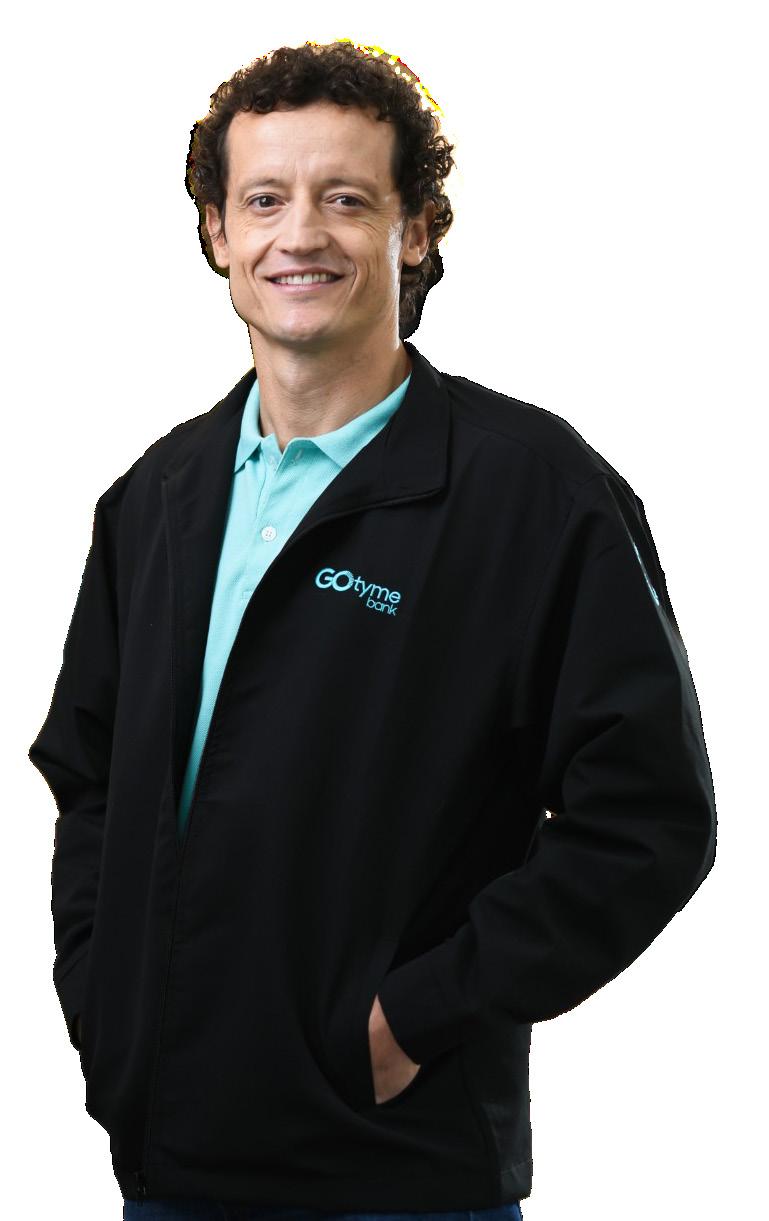
Albert has several years' experience in the fields of fintech, banking, telecommunications, and logistics. He started his career in logistics having worked for American President Lines and Federal Express. He broadened his knowledge and experience by then moving into telecommunications with two major Philippine telco players, Globe Telecom and Smart Communications. While at Globe, Albert earned Globe’s Leadership Award for significant gains made in growing and expanding broadband services nationwide. He transitioned from telco to fintech after being chosen to lead GCash as President and CEO. During this period, Albert became the founding president of the Philippine E-Money Association.
Immediately prior to joining GoTyme, he was SVP, Digital Payments and Agency Banking for Robinsons Bank. Albert has a Bachelor of Science degree in Hotel and Restaurant Administration from the University of the Philippines and completed the Oxford FinTech Program of the University of Oxford Saïd Business School. He is also a certified coach from the International Coaching Federation.

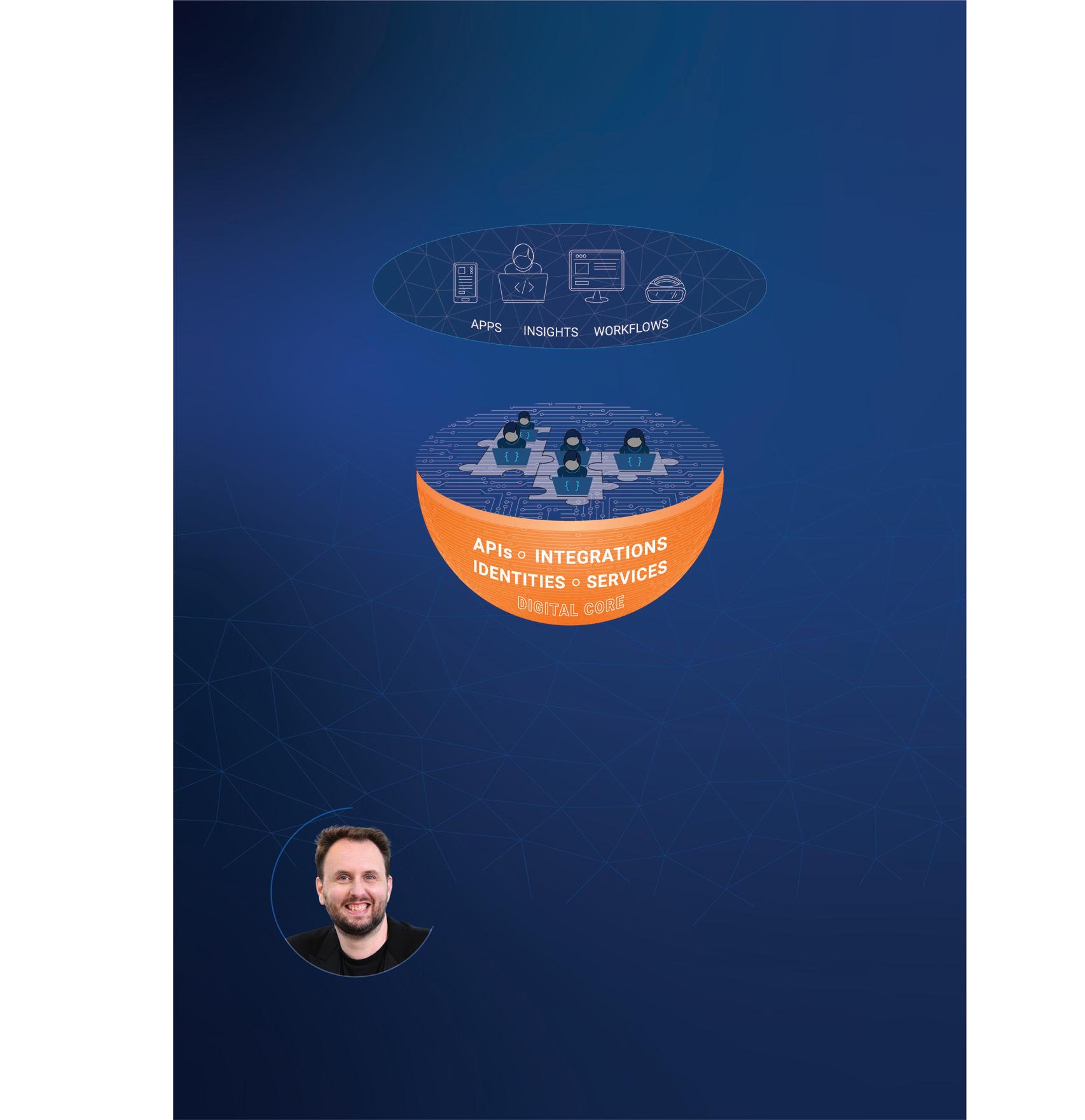

Clarke says he was compelled to join the fintech industry when he found himself ready for new career and life challenges.
“I was at a conference in Washington, DC, where I was based more than 10 years ago, and saw a presentation about a very successful digital wallet in Kenya,” says Clarke. “I heard about this phenomenon in East Africa where digital wallets and digital banking were transforming a country. And I said, ‘This is what I want to do with my life’.”
Before the pandemic, Filipinos had already become used to the convenience of conducting business and social tasks on mobile phones, explains Albert Tinio, co-CEO, and Chief Commercial Officer at GoTyme Bank, who also points out that Filipinos make up the largest percentage of Facebook users in 2022.
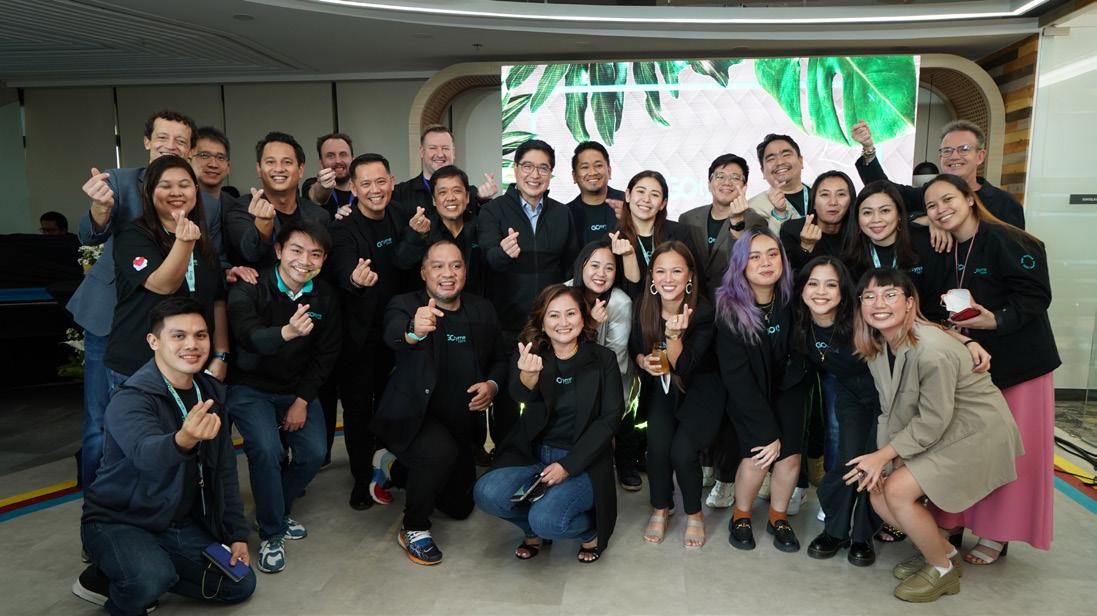
“After they became comfortable with mobile phones, they started looking for things that are more practical, more every day and meaningful,” says Tinio. “And from there, they saw more financial services being offered. At the same time, banks and regulators in the Philippines now have a mandate to increase financial inclusion, so those two elements are driving the industry right now.”
When the new GoTyme Bank brand went live in October it immediately appealed to consumers with an awareness of, and appetite for, world-class banking products, according to Clarke. “This will start with payments and savings, but there will be a
move to investments and credit. The second phase that follows is actually more about serving all Filipinos, including those outside the cities.
“The main reason people are going to join the first phase is for the customer service and experience, as this is quite different from what we call the ‘traditional digital banks’,” says Clarke. “GoTyme Bank is a twist on digital banks, through a combination of a human and digital touch.”
Combining Gokongwei Group brand and reputation with Tyme’s trusted technology The Gokongwei Group represents one of the largest and most diversified collections of
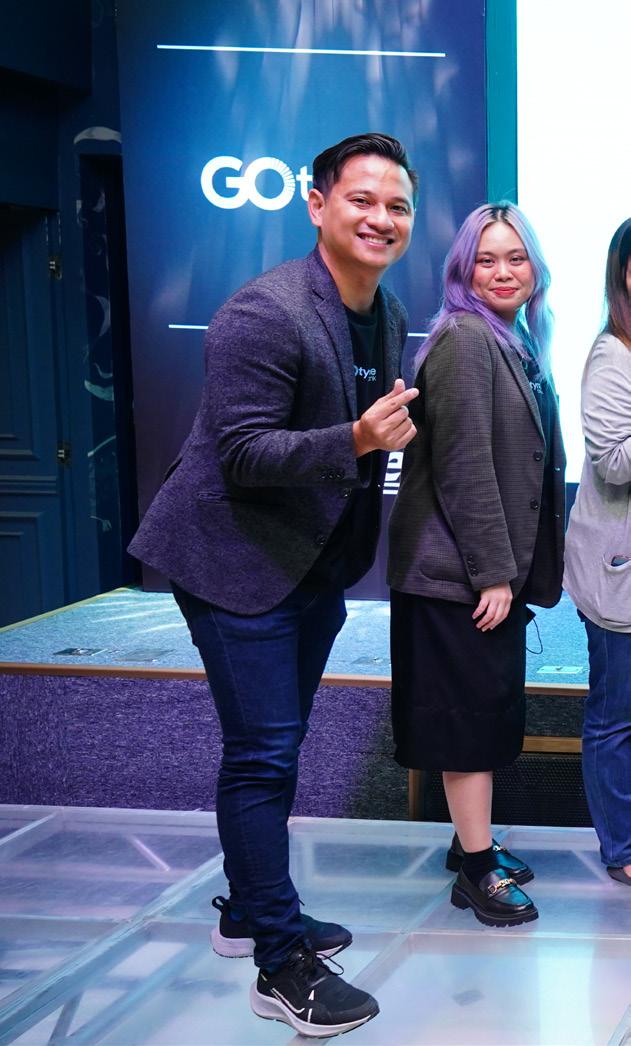
ALBERT TINIO CO-CEO, CO-FOUNDER AND CHIEF COMMERCIAL OFFICER, GOTYME BANK CORPORATION
“
It's very different recruiting people for something you're building from scratch, compared to recruiting for something that is already running”
Filipino companies. The group is composed of JG Summit Holdings Inc., which has business interests in food manufacturing, air transport, real estate and property development, banking, and petrochemicals; Robinsons Retail Holdings Inc.(RRHI), which includes supermarket, department store, and speciality retail brand operations; the Summit Media Group; and other privately held companies.
Working from headquarters in Singapore as well as offices in Hong Kong and Vietnam, Tyme designs, builds, and commercialises digital banks for the mass market, with particular expertise in serving underserved and underbanked populations.
The new GoTyme Bank venture combines the trusted Gokongwei Group brand, along with its reputation and multi-industry operations, with Tyme’s globally proven digital banking technology and hands-on experience to add an exciting new player to the Philippines’ banking community.
GoTyme Bank will leverage the Gokongwei Group’s extensive ecosystem, which is highly integrated into the daily lives of Filipinos – where they already shop, eat and spend family time. This distribution strategy will assist in the democratisation of financial services, addressing the needs of all Filipinos regardless of age, income, or geography.
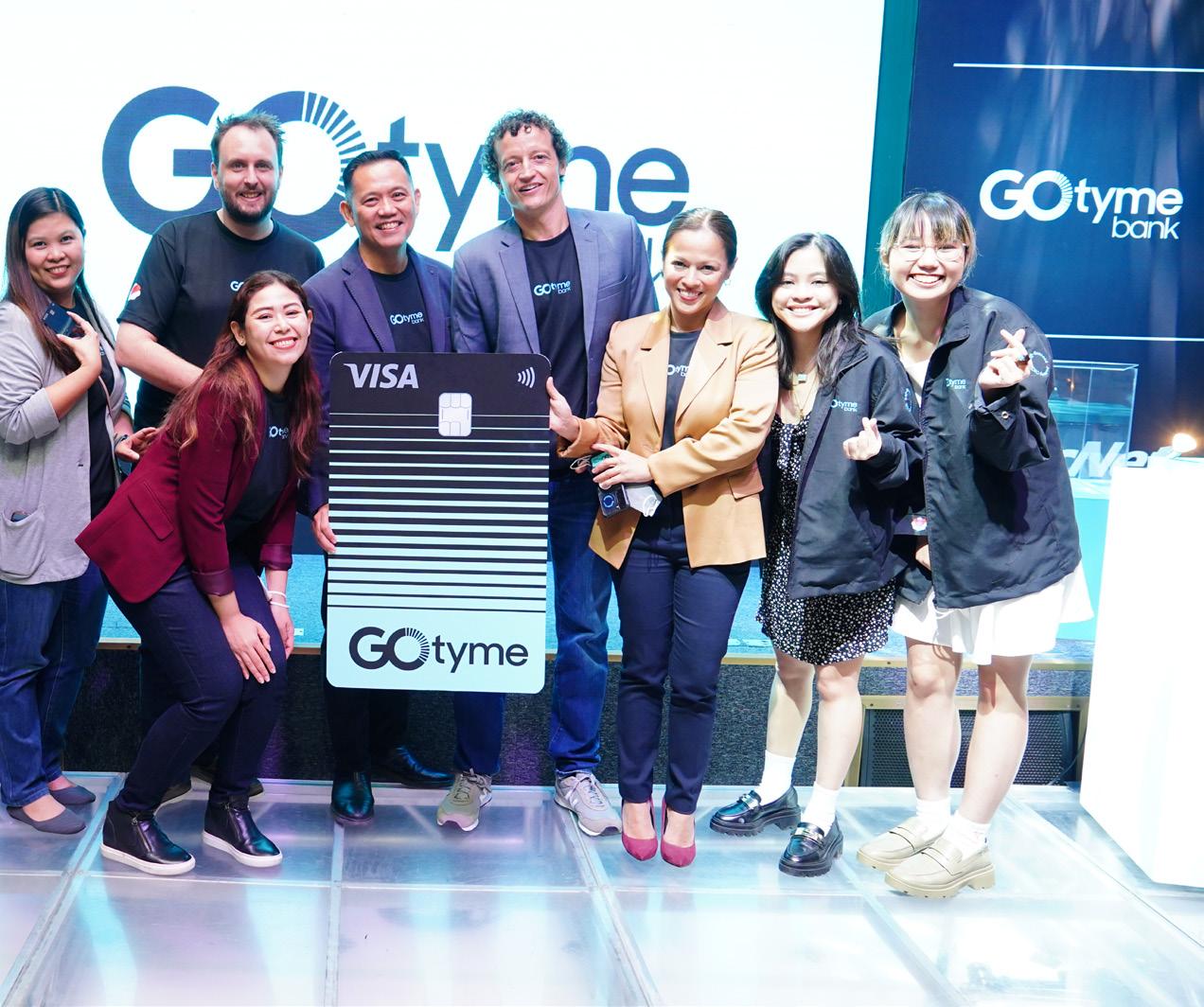
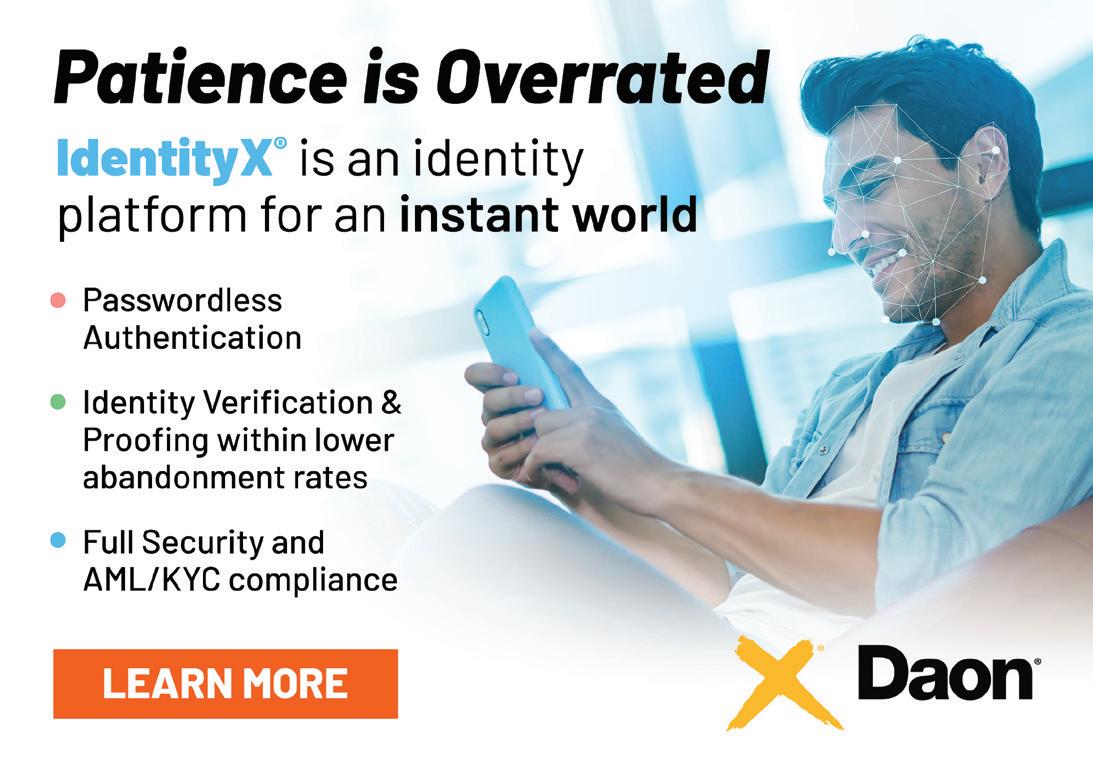
The kiosks are to be deployed in Robinsons Retails’ network across the country. New customers will have the opportunity to meet with human bank ambassadors who will handle the entire onboarding process there and then.
“Our kiosks are capable of capturing personal data and identification documents, including biometrics, fingerprints, and other data,” explains Clarke. “It can then print and release a debit card there in the store – and this entire process happens in five minutes or less.”
Another example of the GoTyme Bank human touch includes the opportunity for customers to call, chat or email the company 24 hours a day, seven days a week. Customers can also benefit from the new digital bank’s unique rewards programme that turns ‘points into pesos’, which can instantly be credited to an account.
GoTyme Bank will provide secure and easy onboarding through both an app and digital kiosks that are conveniently located throughout the mall and retail footprint of the Gokongwei Group.
“In South Africa, 3 million of our 3.5 million customers joined TymeBank through our digital kiosks deployed in retail environments,” explains Clarke. “We believe the combination of this technology and the Gokongwei Group’s nationwide retail footprint provides GoTyme a clear path to rapid growth.”
As well as utilising the existing partner ecosystems of Gokongwei Group and Tyme, GoTyme Bank is creating its own ecosystem of partners and service providers.
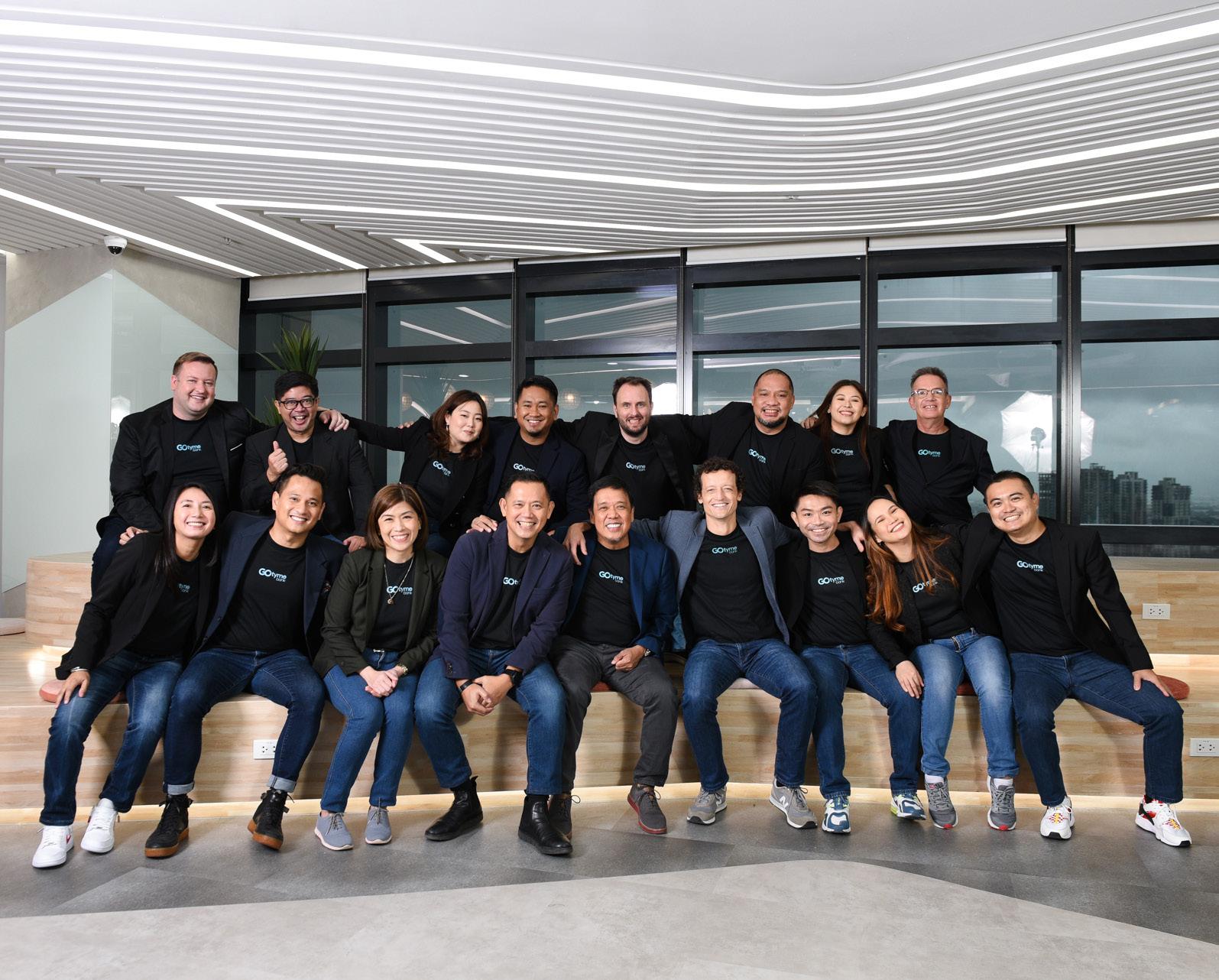
“
We come from a wide range of industries, and I think that what brought us together is a genuine desire to build something – to build and leave a legacy”
NATE CLARKE PRESIDENT AND CEO, GOTYME BANK AND CO-FOUNDER OF TYME GROUP, GOTYME BANK CORPORATION
These include Daon, the Digital Identity Trust company that helps businesses mitigate fraud, reduce friction, ensure regulatory compliance, and deliver a seamless customer experience. Daon enables clients to easily and accurately proof, verify, authenticate and secure customer identities at every trust point across the entire customer lifecycle. With industry-leading biometric authentication technologies at its core, Daon’s technology ensures customer identities are accurately verified, easily asserted and safely recovered.
Also working with GoTyme Bank is GDS Link and WSO2, the former being a global leader in credit data and analytics, combining powerful artificial intelligence technology with credit and fraud risk management software and data. WSO2, meanwhile, provides GoTyme Bank with API management, integration, and customer identity and access management (CIAM) services playing a key role in enabling the bank to deliver its multichannel offering and seamless customer experience across those channels.
“As we grew from a startup, using WSO2 frameworks allowed us to focus more on building new customer experiences and less on integration and digital identity challenges. This is certainly something that could benefit many companies,” says GoTyme Bank CTO Chris Bennett.

WSO2 handles more than 60 trillion transactions and manages over a billion identities each year through its services, provided by over 900 employees worldwide working from offices in Australia, Brazil, Germany, India, Sri Lanka, the UAE, the UK, and the US.
“Both WSO2 and GoTyme Bank want our teams to focus on what they are best at,” says Bennett. “We share this in our cultures. Over time, we’ve moved to use more of WSO2’s managed services so we can each concentrate on our best work for clients.”
People powering the process of financial inclusion in the Philippines
GoTyme Bank will employ 362 bank ambassadors at 226 kiosk locations by year-end. Both Clarke and Tinio say that the eclectic mix of professionals will play a crucial role in bringing new financial services to an increasingly sophisticated customer base in the Philippines.
“We come from a wide range of industries, and I think what brought us together is a genuine desire to build something – to build and leave a legacy,” says Tinio. “We come from banking, and there are also fintech people, there are FMCG people, there are telco people, there are logistics people, and all of these people are freely, organically sharing their experience and contributing to building a new service.”
Clarke agrees with this, emphasising that the new team is having fun working on the
venture – and this has a lot to do with the approach taken to recruit the new team.
“We were quite deliberate regarding recruitment,” says Clarke. “Because it's very different recruiting people for something you're building from scratch compared to recruiting for something that is already running.
“We wanted to build a diverse group, as Abet has said, but on top of that, we wanted to attract people with a few scars and some unfinished business,” explains Clarke with a smile. “We’re looking for people who have had success in our careers, but who have also had some near big misses where we felt
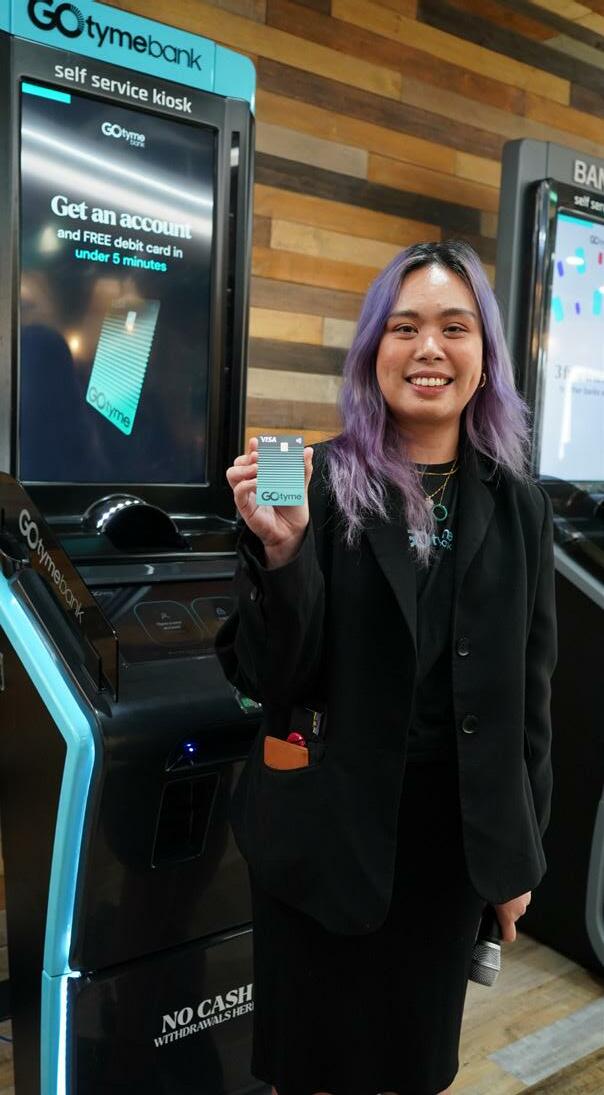
like we didn't quite make it, but know now that we can do it better.”
This approach has led to a shared belief within the new team, emerging from the combination of rock-solid experience and “scar tissue” from previous projects.
“We want people who are used to being in the trenches, doing the hands-on work, but we believe that personal growth and stretching yourself is good for the culture and good for motivation,” says Clarke.
“ The main reason people are going to join the first phase is the customer service, which is quite different from traditional digital banks”
ALBERT TINIO CO-CEO, CO-FOUNDER AND CHIEF COMMERCIAL OFFICER, GOTYME BANK CORPORATION

Businesses that adopt an Agile approach are more responsive and better organised – crucial attributes when it comes to a successful digital transformation
WRITTEN BY: MARCUS LAWBusiness leaders have arguably never been under more pressure to adapt quickly and efficiently, with the need to properly utilise technology a requirement and no longer a choice.
With economic pressures and a need for organisations to adapt in a digital age, an Agile approach can make digital transformations faster, more effective and more adaptable.
Already adopted by a number of organisations – including Apple, IBM and Microsoft – Agile relies on a wide-reaching set of principles, including early and continuous delivery, cooperation and embracing change.









By pairing digital and Agile transformation together to create Agile digital transformation, companies can get the best of both worlds, benefitting from a system that enables continuous improvement.

An ecosystem that is always learning and adjusting
“The biggest benefit for businesses is the flexibility it brings,” says Simon Morris, VP of Solution Consulting UK&I, ServiceNow. “When it comes to digital transformation, adopting an Agile strategy offers business leaders more choice, with the opportunity to meet challenges faster, or identify and exploit competitive advantages more efficiently.
“Our research shows that Agile organisations score higher on just about every metric compared to non-Agile organisations, with customer loyalty ahead by as much as 20% and market share up by 11%. Businesses that adopt this approach are more responsive, better organised and
“An agile organisation ultimately empowers its units to be able to adapt to rapidly changing needs, ensuring goals are met while retaining the ability to digitally innovate”
quick to recover – all crucial attributes when it comes to delivering a successful digital transformation.”
“I would argue that the word transformation implies a clear and finite ending, when really a company’s digital journey never ends,” says Helena Nimmo, CIO at Endava. “The key to successfully implementing an agile strategy for
continued innovation isn’t in digital transformation. A more nuanced and bespoke approach, which I call ‘digital acceleration’, provides such agility and allows leaders to protect their businesses while simultaneously allowing them to innovate with more flexibility and understanding of their internal and external stakeholders.
“There is always another step forward in the digital journey. Remaining agile and being able to re-examine, update, and improve the use of digital technologies as an ongoing, continuous process is a much more helpful way to implement any digital strategy.”

Agile approach a low-risk solution for digital transformation With many businesses needing to change quickly and efficiently, a continuous incremental delivery approach can get features into product teams and end users’ hands more quickly than a waterfall
It's time to be in your element with IRIS Elements
“Agile isn't just throwing caution to the wind. There is lots of planning and design around a scrum team so they can make the agile approach a reality”
BEN HOUGHTON CTO, IRIS SOFTWARE GROUP
approach, according to Ben Houghton, CTO at IRIS Software Group.
“This creates a feedback loop that quickly identifies issues or unintended consequences, enabling the approach being taken to be adjusted as required in flight,” he adds. “An agile approach provides a low-risk solution as it splinters digital transformation into short, manageable phases where the team learns from their results before moving on. This leads to fewer mistakes, and projects usually end up delivering more value in less time.”
“Research by IDC has shown that an Agile approach makes digital transformation faster, more effective and more adaptable,” adds Morris. “For business leaders under pressure to transform rapidly to remain economically viable in troubled economic times, Agile is vital to ensuring digital transformation is effective within the right timescale.”
Company culture among biggest obstacles Agile transformation is a serious undertaking that requires a lot of effort, thus many teams
Since the creation of the Agile Manifesto in 2001, teams across the globe have welcomed the Agile approach into their project management processes. According to the 14th annual State of Agile report, 95% of 40,000 respondents said that their organisations practise Agile development methods, with 61% having used Agile for at least three years.
struggle with the process of enterprise Agile transformation. The biggest obstacle facing organisations is company culture, which can be deeply ingrained in the way organisations work, Morris says.
“Achieving this shift in mindset isn’t simply a matter of deciding to be Agile,” he adds. “Rather, managers need to be prepared to move from yearly cycles of leadership with annual budgeting processes, to fast-moving decision cycles. This means that leaders have to decide to ramp up or sunset initiatives in the space of weeks, days or hours.
“Digital acceleration allows for more agile delivery versus digital transformation, without undermining longer-term strategic thinking,” says Nimmo. “That said, with

When Deloitte and Fortune surveyed CEOs about their leadership through the COVID-19 pandemic, 85% indicated that their organisations had significantly accelerated digital transformation. The report found that cloud spending has accelerated significantly since the pandemic, as companies found themselves forced to reassess not only their operations but their mindsets. According to Deloitte, the challenge for business leaders is how best to plan – and accelerate – digital transformation.
either, there will always be inherent risks that shape decision-making in technology. In order to combat these risks, we need to understand what the core objectives of both the business and the technology are, as well as their wider context.
“Our recent research found that the top three risk factors most affecting digital adoption over the next five years are remote and hybrid work; changing market context; and keeping pace with growth.

“This shows that businesses need to keep building and improving on existing capabilities, rather than overhauling entire systems that could potentially open them up to further risk.”
Part of taking an Agile approach involves taking risks, so how organisations balance risk versus reward is crucial. With regular, consistent reporting and

improved transparency, teams using Agile methodology are better equipped to deal with issues, but it’s also important to not change for the sake of change.

“If companies are looking expand into unchartered territory – be that big data platforms, cloud optimisation, or even the metaverse – balancing the risk versus rewards comes down to any decisions being
made and implemented when the timing is right, as part of an ongoing journey rather than for the sake of it,” Nimmo says.
“When considering a digital acceleration roadmap, companies need to look closer at solutions that offer the most value. Adopting technologies purely because they’re new is counterintuitive and companies should be sure that their plans will bring significant value to existing processes.”
“Agile management is all about controlled risk,” says Morris. “However, most organisations will actually see large-scale, unexpected problems diminish as a result.”
Agile isn’t just throwing caution to the wind, Houghton adds. “It's important to de-risk the risks as much as possible,” he says. “There’s lots of planning and design
“For business leaders under pressure to transform rapidly to remain economically viable in troubled economic times, Agile is vital to ensuring digital transformation is effective within the right timescale”

around a scrum team so they can make the agile approach a reality. Constant review and iterative correction are crucial, as this keeps delivery closely aligned to the goal.”
Along with taking controlled risks, good communication is key in order for an Agile approach to succeed. It’s important to highlight the benefits of the Agile approach with team members.
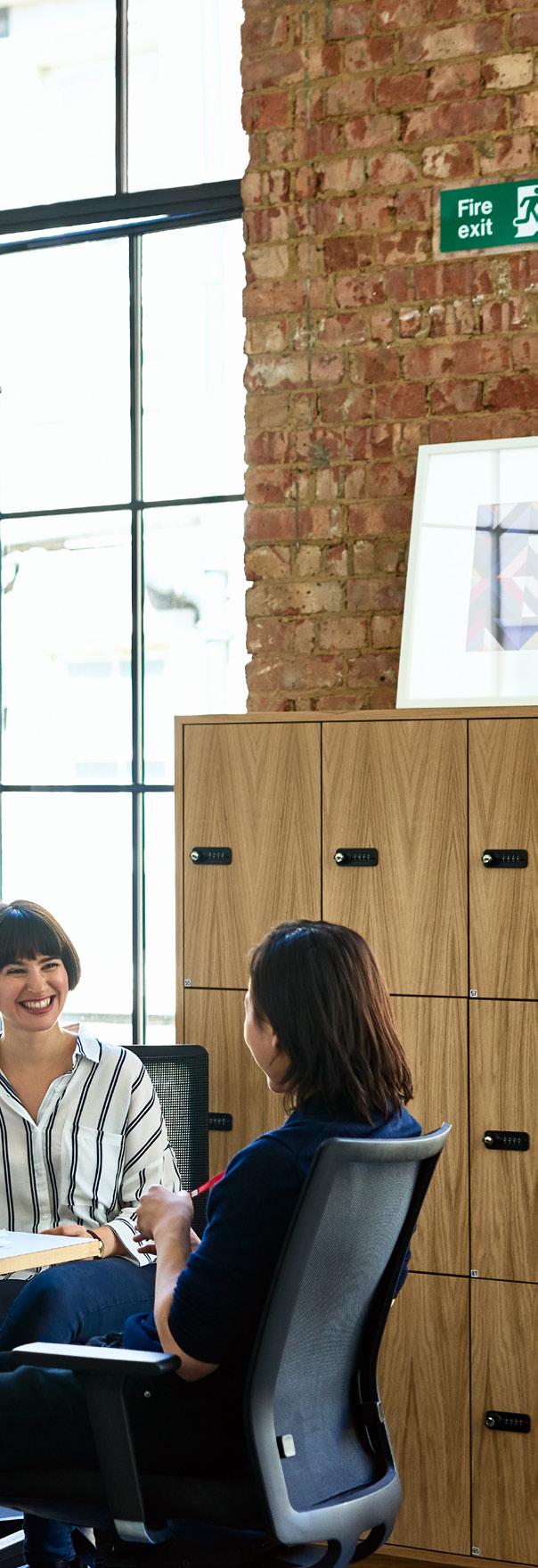
“Communication is central to Agile because it is a team sport,” Morris concludes. “Leaders should ensure that employees at all levels understand its benefits and why the business is adopting the approach.
“Having a clear roadmap is also crucial. Agile businesses need to ensure that all departments and teams are united behind common goals, whether that is delivering new products and services, or something else. Each department brings their own specialist skills – but leaders need to ensure that every team understands the end goal and supports the Agile approach.”
“When considering a digital acceleration roadmap, companies need to look closer at solutions that offer the most value. Adopting technologies purely because they’re new is counterintuitive”
 PRODUCED BY: MICHAEL BANYARD
PRODUCED BY: MICHAEL BANYARD

When Mark Foulsham joined Kensington Mortgages nearly three-and-a-half years ago, it wasn’t just a new employer – it was a completely new industry. Although he has nearly 20 years of experience in financial services, he had not worked directly in the mortgage sector before, but says the appeal was there from the very beginning. “As an outsider, I thought it was a great opportunity to come in and work with an organisation that was pioneering innovation in the industry,” he recalls.
Foulsham has a superb track record of over 25 years of driving digital transformation within senior operations, IT and project delivery roles primarily within financial services. He spent 12 years as CIO at insurance provider Esure Group, including Gocompare, where his remit was broadly similar to his current position, and enjoyed a nearly three-year tenure as Chief Digital Officer for the disability charity Scope. In parallel with that role, he also worked with fintechs on their digital transformation journeys. The cross-fertilisation between sectors provides valuable opportunities for challenge and innovation, he says.
“I've worked across a broad range of industries and that's intentional,” he explains. “I think a variety in your career adds a lot of value for comparing opportunities and looking at how things are done differently.

At the heart of Kensington Mortgages' digital transformation strategy is the customer – in particular, understanding their unique circumstances and needs
“Sometimes automation is seen as a panacea. We see it as one of a number of solutions, not a silver bullet”
MARK FOULSHAM CHIEF OPERATING OFFICER, KENSINGTON MORTGAGES

So, my background is quite varied – but deliberately so.”
At Kensington Mortgages, he oversees a full spectrum of operational, digital, data and technology-related functions that make up about two-thirds of the organisation’s headcount and budget. It’s a sizeable undertaking that also includes partnerships and business change – but a role that actually didn’t exist until Foulsham took it up in June 2019. He wasn’t the only new face in the business, either. When Foulsham joined, Chief Executive Mark Arnold was little more than a year into the job. Together with the wider executive team, they have “turbocharged” Kensington’s strategy, reinforcing its position as the UK’s leading specialist provider of mortgages that operates where big-bank lenders struggle to reach.
“The company has been going for 27 years but we’ve changed quite a
lot over that period,” Foulsham says. “We are essentially providing mortgages for people who don't necessarily have the right fit of products provided to them by high-street lenders.
“We are actively pioneering in our approach within an industry that continues to be ripe for transformation and disruption; society and customers’ needs continue to evolve to demand more tailored solutions and we are constantly adapting to meet this growing demand. We've led a number of firsttime initiatives, including a real focus on ESG – Kensington were the first to complete a green bond securitisation in the UK mortgage market, for instance.
At the heart of Kensington’s strategy of specialism is tailoring
products to their customers’ individual circumstances. The company prides itself on offering mortgages for those on variable incomes, like sole traders or the selfemployed, who have specific lending needs. In particular, it offers a ‘Flexi Fixed For Term mortgage’ that provides certainty of rates to customers in an increasing interest rate environment.
Kensington understands that mortgages are not the sort of product that fit everybody equally. Instead of a one-size-fits-all approach, it invests a great deal of time, analysis and engagement to understand its customers. It’s something that requires empathy – but thankfully, Foulsham can rely on his three adult children, who are of an age to be taking their first steps onto the property ladder. “They provide a great source for challenging my thinking about a generation that’s our future customer base,” he says.
“The large banks are not as nuanced when it comes to connecting the needs of customers with the services and products that they provide,” Foulsham continues. “At Kensington, we have a ‘head-and-heart lending’ mentality, where we use data to provide insight and information but we still make sure that customers’ payment arrangements are at the right level of affordability, or that the right products are tailored for customers. It’s
LOCATION: UNITED KINGDOM

Mark has more than 30 years’ experience in driving transformative change and digital innovation within various sectors, most recently Financial Services. He has primarily worked with Fintechs, start-ups and digitally led organisations, in particular those aiming to pioneer market-leading initiatives. He joined Kensington in 2019 taking on the role of Chief Operation Officer, responsible for Lending Operations, Servicing, Technology, Change and Procurement. His prior roles have included leading similar functions for esure, GoCompare, Macquarie Bank and Bouygues. Mark sits on advisory Boards for Winmark and CIONET, has authored books on data protection and has been a Non-Executive Director for cloud-solutions business, Cobweb.
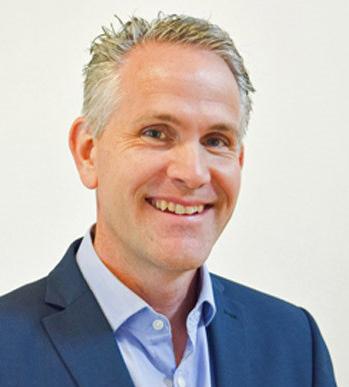
not just about whether the computer says yes or no. It's about really understanding the background and the circumstances of those customers.

“I think if you overplay technology and digital too much in your strategy, you can end up being perceived as a faceless organisation. By combining both tech and the human touch, we try to be highly informed, apply strong diligence and deliver market-leading customer service and solutions. You can only
do that by having a real blend of expertise in an organisation. Over the last three years, we've grown significantly year on year. Clearly within that time, we've also had the pandemic to navigate. Despite the challenges COVID19 brought, it really allowed us to focus on customers’ needs (such as managing payment holidays) and how our colleagues work (replatforming our infrastructure) – and very much acted as a catalyst to what we were doing.
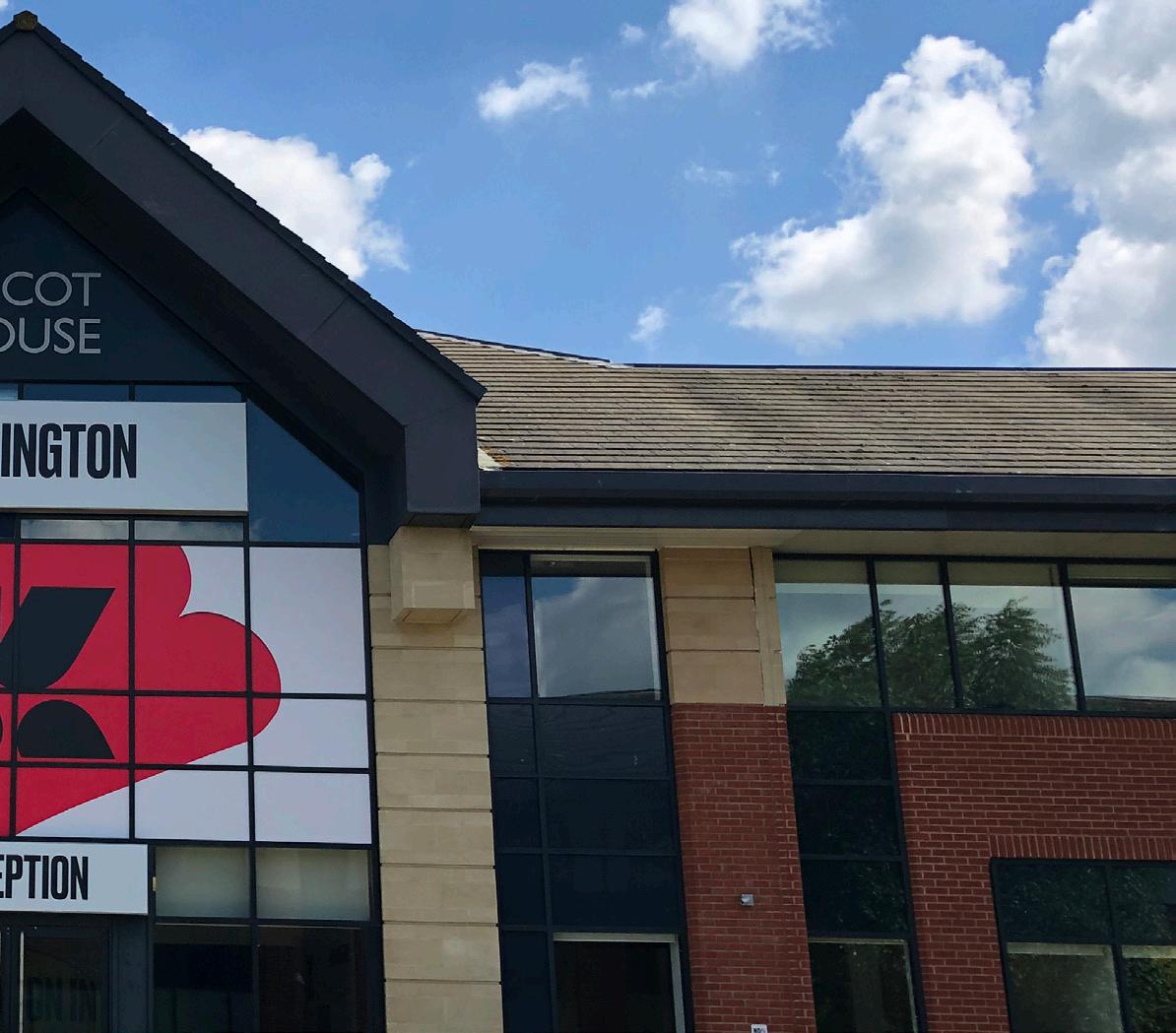
“We essentially provide mortgages for people who don't necessarily have the right fit of products provided to them by high-street lenders”
MARK FOULSHAM CHIEF OPERATING OFFICER, KENSINGTON MORTGAGES

Many businesses and organisations are going through a period of digital transforma tion. Supporting such initiatives is Sopra Banking Software (SBS), which is working with Kensington Mortgages (KMC) to digitally overhaul its services.


“SBS is a global software and services or ganisation,” explains Richard Broadbent, Managing Director.
“We cover everything from origination pro ducts to the operation and maintenance of those, as well as savings, lending and transactional banking. From a customer perspective, we again support a very bro ad range of organisations, including high -street banks, specialist lenders, and buil ding societies.”
SBS’s rich variety of solutions mean it’s able to support organisations throughout the journey of onboarding customers to the closure of accounts or collection of funds. “KMC specialise in certain segments of the mortgage market in the UK; the software and services that we provide effectively un derpin their business operations right the way through the full engagement cycle that they have with their customers.
When SBS started working in partnership with KMC, the process followed two core strands: digital product innovation and customer experience. “On the digital side, we’ve helped KMC automate the origina
tion of mortgage products, as well as fo cusing quite heavily with them on how to integrate other third parties into that origi nation process.
“We’ve also spent quite a lot of time working with them around the optimisation of the broker journey, making sure that the service is fine-tuned to meet the very spe cific needs of the brokers that are helping originate mortgages on customers’ behalf,” Broadbent says.
In terms of core banking, SBS has also supported much of KMC’s innovation around the new products it has launched in the mortgage market. One that KMC has focused quite heavily on is its green mortgage – essential in a more socially and environmentally-aware age – which brings together financial services and so cial responsibility under a single product type.
“It’s a really exciting time for Kensing ton Mortgages at the moment, and we’re looking forward to the continuation of our partnership optimisation programme, su pporting KMC with its aspirational growth.”
 MARK FOULSHAM CHIEF OPERATING OFFICER, KENSINGTON MORTGAGES
MARK FOULSHAM CHIEF OPERATING OFFICER, KENSINGTON MORTGAGES

“We are actively pioneering in our approach within an industry that continues to be ripe for transformation and disruption”
“We put a number of digital solutions in place during the pandemic that we've now continued to use, grown and scaled – but also ways of working as well, whether that comes down to automating some of our activities, greater sophistication around affordability checks or providing a new portal for customers. These are things that not only helped address the specific demands brought by the pandemic, but have now been extended to provide benefits to our customers, brokers and colleagues as we continue to develop further and grow.”
This human touch has built a tangible rapport between Kensington, its broker community and its customers. It will prove enduringly vital as the world faces up to some of its gravest economic realities: consumers are facing a cost-of-living crisis and many homeowners will struggle to pay for everything during the next few months. Foulsham points out that Kensington is well-placed and has proven adaptable in helping them respond to these looming cost pressures.
“People want to have the right service and the right product provided to them,


but they also need flexibility and optionality as well. One of the things that we've done is put in a solution that allows customers at the end of their fixed term to choose another product. And we've created that in a digital form, so that when customers move off their fixed rate, we've got clarity on how that can happen and how that can be achieved in the most affordable way for their circumstances.”
Of course, accepting customers that other lenders turn away means a careful understanding of risk is needed – something which Kensington mitigates by utilising the data and technology it has to hand. “Risk is our business,” Foulsham explains wryly. “That's what we manage. Obviously it's the

Current value of mortgage book
same for high-street lenders. What I would say is, rather than taking a fairly heavyhanded approach, we take a more precise and tailored approach. It's our job to really understand risk, both for our customers and how we underwrite.

“We have a model called VECTOR, which contains mortgage loan level performance data over a period of 30 years and includes 32 million data points through several macroeconomic cycles. The wealth of data allows us to deploy a broad variety of model uses. That ranges from assessing our underwriting accuracy to the effectiveness of pricing for new products.
“Individually, we look at customer circumstances, and I think it's a different type of risk management and risk assessment when customers come to us rather than larger high-street lenders. Because we have the data and the human touch, we can blend those into a better understanding of what risk means to the customer in terms of payment plans, for example, but also risk to us in terms of making sure the loan period is appropriate. In many respects, being more tailored and more personalised in our product set allows us to have greater insight not only into the customer's needs, but also the risks around that.”
Providing a tailored approach also has the potential to create extra work across all areas of business activity. Like many lenders, Kensington has turned to automation to help ease the pain points that this would usually create – but Mark Foulsham is keen to stress
that automation needs to be targeted, rather than being a cure-all that can be thrown at any problem.
“I think sometimes automation is seen as a panacea,” he says. “We see it as one of a number of solutions, not a silver bullet.”
“The first question when one deals with automation is ‘are we automating something that is inefficient that needs fixing first?’ So, is the process correct? Is it optimised? Is it effective in terms of providing the right information to customers or the right information back into the organisation? Only when we feel that the process and procedures are correct do we look to automate it to make it slicker. Particularly in areas where there’s no value-add, where you're passing information from one place to another, or when there’s a procedure that you can improve timeliness or accuracy… that's when we look to put in automation.
When you have a mortgage book that’s worth £5bn, as Kensington does, it becomes much more complex for a lender to achieve complexity at scale. New technology and new platforms become mammoth undertakings. Part of the reason that incumbent banks and lenders struggle so much with legacy technology is that, as an organisation scales, it becomes much easier for those at the top of the hierarchy to dismiss large digital transformation projects as too costly, too complex, too time-consuming and too risky.
But, of course, the success that you derive from digital transformation projects relies on the approach you take from the outset, and the partners with whom you choose to align yourself.
“I've always been very keen that you don't continue to just bolt on new things after new,”
MARK FOULSHAM CHIEF OPERATING OFFICER, KENSINGTON MORTGAGESFoulsham says. “That way, you're just building up technical debt and building up complexity.
“I'm a big believer in reusing your previous investments as well as modularisation of solutions and technology. So, trying to make sure that platforms and systems are coupled in a way that are effective in terms of data transfer and functional cohesion, but aren't too tightly bound in a monolithic sense. That means that every time you make a change, it has a ripple effect and takes a long time to deploy. I think, when we look at scalability and complexity, it comes down to making sure the solutions are as elegant as possible, as simple as possible and no more complicated than they have to be. The market is changing so quickly that if you over-engineer something, you'll find that by the time you've deployed it, the solution isn't actually fit for purpose in the way it was originally.”
Kensington has turned to Paris-based Sopra as its long-time primary technology partner. In recent times, Sopra has deployed a new frontend platform that has allowed Kensington to realise better and more agile working. For example, before that platform came in, it would
“Being more tailored and more personalised in our product set allows us to have greater insight into the customer's needs and the risks around that”
take many days if not weeks for the lender to effect a pricing change – but Kensington can now do that in minutes or hours.

“We have a very strong relationship with Sopra,” Foulsham says. “We share business strategies, we have good engagement at an executive level, and we deal with making sure that there's a good alignment between their product evolution and our business strategy. So, if we are looking to go into new segments or we're looking to release a new product, the functionality behind that and the way in which their product is going to operate is very much a conversation we have at an early stage with Sopra, so if appropriate they can build that into their core platform.
“In particular, one of the big differences from a few years ago when we were introducing these new platforms is the level of
configuration. We are able to configure over 90% of some of the changes that we've put into place, where some of our competitors using other systems have nowhere near that sort of flexibility. Again, it gives us a real advantage in the market using this type of system, a more contemporary system than others. In a dynamic market that requires a quick response to changing circumstances, such as rapidly rising interest rates, having slick and adaptable technology is a real competitive differentiator.”
It’s this steadfast determination to keep pace with change and move with their customers that underlines much of Kensington’s thinking. Data and technology have taken on renewed

importance, allowing the company to tailor products to customers’ individual needs and rapidly transform its technology stack.
“We know that customer circumstances are going to continue to change over the next 12-18 months,” Foulsham says, looking ahead to the next couple of years. “In particular, when it comes to the cost of living, we know that customers are going to want flexibility in the products and services that we provide, so it's really important that we continue to understand what those needs are and be dynamic in the choices we offer.
“As an organisation, it's really important that we continue to look at the changing picture when it comes to our customers’ needs and how we can make sure, as an organisation, we adapt to that evolving position and ultimately provide customers with the value and service that they demand.”

“Large banks are not as nuanced when it comes to connecting the needs of customers with the products they provide”



are
to ransom.
stakeholders think they have them outsmarted. They’re wrong, say experts.
WRITTEN BY: GEORGE HOPKINIt’s been five years since the WannaCry worm made headlines across the globe

when, within a matter of days in May 2017, it had infected hundreds of thousands of computers in well over half the world’s nations.

Users of infected machines found they were locked out of their data and would have to meet a ransomware demand of US$300 if they wanted to regain access. Some paid, some didn’t. Those who met the demand didn’t necessarily get their data back, though, it was later revealed. Cyber criminals are not compelled to actually deliver what they promise, it appears, and global industries discovered this the hard way.
Today, cyber attacks continue to present an ongoing, ever-changing threat to businesses across all sectors, says Mark Atwood, Global Research and Advisory leader with Gartner. He points to research from NCC Group’s Annual Threat Monitor report, which indicated ransomware attacks almost doubled in 2021, rising 92.7% on the previous year.
“Ransomware attacks and other types of cyberthreats can have, and have had, crippling effects on supply chains,” says Atwood. “But, as important and ubiquitous as this topic is, it is fraught with complexity and confusion.”



Cybersecurity spending increases, but new tactics are required In the Gartner report Combating Enterprise and Ecosystem Cybersecurity Threats, released in September, it was discovered 63% of the respondents expected to see a rise in spending on supply chain cybersecurity by at least 5%, and that the most popular technique for fighting supply chain cyber attacks is a straightforward audit of suppliers, manufacturers and logistics partners. But this is not enough.
“As encouraging as it is to see the positive steps the profession has taken over the last five years, our research shows that organisations have an inflated sense of their supply chain’s cybersecurity,” says Atwood. Respondents were asked how secure they thought their supply chains were on a scale of 1 to 7 – with

“OUR RECENT RESEARCH SHOWS THAT 40% OF ORGANISATIONS HAVE BEEN VICTIM TO A CYBERATTACK THAT IMPACTED THEIR SMART FACTORIES IN THE PAST YEAR, AND THIS IS ONLY GOING TO BECOME MORE COMMON IF ORGANISATIONS DON’T REACT”
GEERT VAN DER LINDEN EXECUTIVE VICE PRESIDENT CYBER SECURITY,
 MARC ROGERS OKTA
MARC ROGERS OKTA
1 being not at all and 7 being completely protected – and 83% of respondents rated themselves a four or higher.
This false sense of security is dangerous given the state of global industry; last year saw manufacturing outpace financial services for the dubious honour of the sector
most targeted by cyber criminals, according to Geert van der Linden, Cybersecurity Business Lead at Capgemini.
Legacy technology dating back to the days when cybersecurity wasn’t even a consideration has created opportunities for attackers to exploit. The sector’s transition to smart factories has also prompted complex cybersecurity questions that organisations need to address, explains van der Linden.
“Our recent research shows that 40% of organisations have been victim to a cyberattack that impacted their smart factories in the past year, and this is only going to become more common if organisations don’t react,” he says.
Improved visibility of networked devices is essential to detect when they have been compromised and regular system-risk assessments are useful in helping to prevent attacks, but a great deal more needs to be done if global business is to face down the threats of rampant ransomware and cyber attacks.
“STAFF NEED TO BE EMPOWERED TO UNDERSTAND ALL SECURITY THREATS AND BE AWARE OF THE RISKS CREATED BY REMOTE AND HYBRID WORKING”
Zero Trust has reached “critical mass” for identity verification
Elsewhere, there are encouraging signs – Marc Rogers, Senior Director of Cybersecurity Strategy, Okta, says identityfirst security has reached “critical mass” in the past year. “The trend is not going away,” he says. “Increasingly, identity-centric Zero Trust frameworks will be the best choice for any security-conscious organisation.”
The principle of Zero Trust architecture is straightforward enough, explains Rogers: all network traffic should be considered untrusted until validated. Using this “don’t trust, always verify” approach helps with the management of remote and hybrid workforces as the threat of ransomware continues to grow.
Okta’s recent State of Zero Trust report indicated that all financial services organisations, without exception, planned to have a Zero Trust initiative in development within the next 18 months. This comes after the sector has faced a 35% increase in ransomware attacks –more so than any other industry, according to the latest report by the Anti-Phishing Working Group (APWG).
But heightened awareness does not necessarily translate into action and preparation; C-suite executives must prioritise Zero Trust and other cybersecurity measures, explains Capgemini’s van der Linden. Today, there appears to be a lack of collaboration between cybersecurity teams and boardroom stakeholders, which has a knock-on effect for budget allocation and the speed with which organisations respond to a ransomware attack.
“Governance is a particular concern –this area demonstrates the lowest level of preparedness across multiple parameters,”
A study by Cybereason revealed that more than half of organisations had been the victim of a ransomware attack, with 80% of businesses that chose to pay a ransom demand suffering a second ransomware attack, often at the hands of the same threat actor group.
The report, Ransomware: The True Cost to Business, also revealed that 46% of organisations who opted to pay a ransom demand reported that some or all of the data was corrupted during the recovery process.
says van der Linden, “Our research shows that response preparedness is just as low, with 54% of executives saying that they don’t have – or don’t know if they have – a team dedicated to preparing for and responding to cyberattacks at their organisations' smart factories.”
People are the first, but also the weakest, line of defence, claims van der Linden, so employees must be trained to spot early warning signs of a potential attack so that companies can mount a rapid response.
“Training experts who can oversee the implementation of comprehensive security measures are vital – and investment in this area will not be wasted,” he says. “Those that cannot get this off the ground quickly should consider partnering with an organisation equipped with expertise and end-to-end services to manage it.”
This is echoed by Okta’s research and Rogers, both of which agree that
The cost of recovery and the resulting downtime in the aftermath of a ransomware attack – as well as the reputational damage – can be 10 to 15 times more than the ransom, according to Gartner.
sake of convenience, he explains. “However, it's equally important that security is designed in such a way that it complements user behaviour and empowers them to do their jobs rather than just add additional, often unnecessary friction.”
employee education is key. “Staff need to be empowered to understand all security threats and be aware of the risks created by remote and hybrid working, such as when a family shares passwords or corporate resources are accessed on personal machines.”

Employees must understand the dangers as well as the reasoning behind measures such as Zero Trust, so they’re not tempted to bypass security for the
The insurance industry is another established sector that must change quickly in order to keep up with commercial pressures, says Okta’s Rogers, and combining cyber insurance with best-practice efforts to protect against attacks is “a sensible strategy”. “Cyber insurance carriers increasingly consider strong identity controls as mitigating security risks, meaning that they will reduce premiums for companies who use them,” says Rogers. “If the worst happens, cyber insurance policies offer
financial support for the many potential costs of a ransomware incident – from regulatory fines and recovery costs to media relations and incident response.”
In the past, the insurance industry has played a key role in the development of security and safety across global business, and Rogers hopes to see the same developments in the cybersecurity space. “Companies will increasingly have little option but to adopt strong, identity-based security if they want to keep insurance premiums down,” says Rogers. “Risks are difficult to quantify, and this is leading to increased costs and more stringent underwriting requirements. Identity-based security will increasingly be the single best way to lower cyber insurance premiums.”

“AS ENCOURAGING AS IT IS TO SEE THE POSITIVE STEPS THE PROFESSION HAS TAKEN OVER THE LAST FIVE YEARS, OUR RESEARCH SHOWS THAT ORGANISATIONS HAVE AN INFLATED SENSE OF THEIR SUPPLY CHAIN’S CYBERSECURITY”



The massive digital transformation shift that started in March 2020 has revolutionised the global business market. But as millions of companies made the transition to providing online services, the surge in cyber-attacks increased massively, costing companies billions in breaches and additional cybersecurity fortification.

SAP NS2 (the NS2 stands for National Security Services) has been instrumental in applying new and innovative solutions to combat security issues and to streamline business processes and connectivity. The entity is a wholly-owned subsidiary of SAP, founded with the purpose of tackling security on a global basis.
Currently, SAP allocates US$3.5bn a year towards Research and Development. This enables them to create new technologies and solutions - and to bring those benefits to customers across government and commercial industries.
NS2 cloud services have the industry hallmark of excellent, providing near zero downtime, system maintenance, automated STIGS and enhanced security for SaaS solutions. Making sure customers have access to their innovative business technology platform and digital supply chains, as well as HXM (human management experience) and secure payroll tools and more, are all part of the deal.
SAP NS2 is driving innovation in cybersecurity as more companies transition to the cloud, says Walt Sirene, SAP NS2’s R&D and Pre-Sales Technical Director
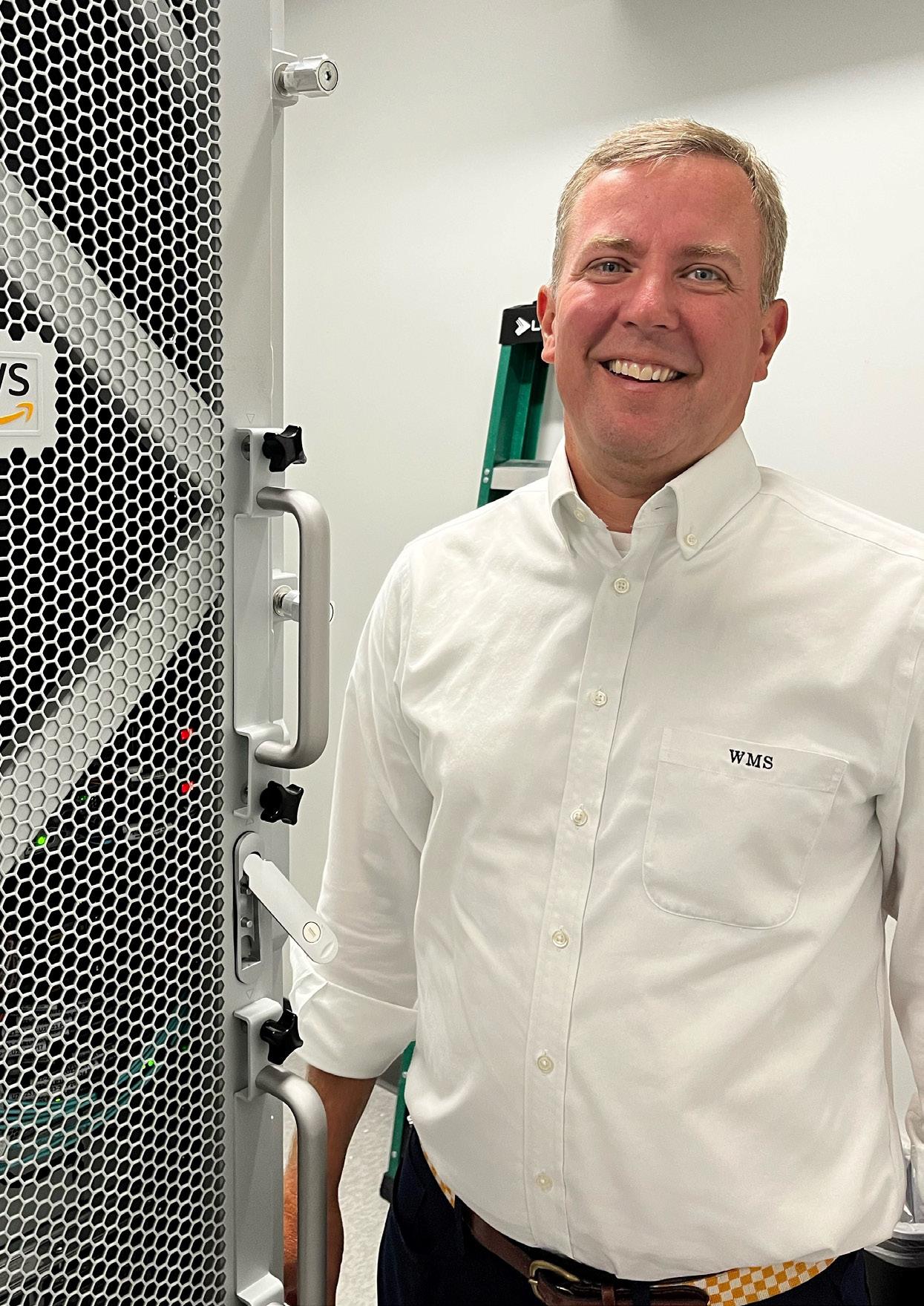
Walt Sirene is the R&D and PreSales technical director at SAP NS2. He describes himself as wearing two hats in terms of his role. “I run the presales organisation focused on our defence and intel clients. I also run our labs organisation, which is a Research and Development and sales-focused organisation that does a lot of collaboration with partners such as AWS and others to create and bring solutions that are unique to our clients and accelerate sales cycles.”
This unique positioning puts Sirene in two critical areas that oversee new developments - and the application of those developments in a commercial setting.
Sirene started off his career in the functional supply chain business for the US Federal Government. He attributes this experience and background as having given him a unique insight into the supply chain lens.
“I like to view things as raw material coming in, that you add some sort of value to it, and then you release a finished product,”
he says succinctly. “Having that lens and looking at things very simply allows me to look for ways to improve things. I'm always about improving things, making things better. And that foundation of the supply chain gave me a good start and put me on my career path into technology.”
SAP NS2 has been a leader in bringing innovation to leading government bodies in the US. Sirene, who started off his career as a government employee, knows only too well the challenges that occur within the confines of political establishments and has therefore been well placed to facilitate and manage projects that require more sensitivity and flexibility than most.
Recently, SAP NS2 helped implement a new set of processes for a US Department of Defense-related client. Sirene explains: “They had a problem with exposing all their data and models that they were making

across the enterprise. We partnered with them to create a unified data layer. This enabled analysts to go in, have a search and discovery capability of all the data, and model holdings across their agency so that an analyst in a certain area might not have known that a data set in another area was available - or a model in another area was available,” he says.
The project resulted in a streamlining of the department’s data flow and security. “Now they're able to see those data sets, and really it enhances the analyst's environment because they're able to do their job a lot faster. They're also able to get a lot deeper with their analysis and they have deeper findings.”
SAP NS2 cloud performance plays a major role in bringing digital solutions to companies globally. With its focus on cloud security in a growing, worldwide market, demand has never been so high - and is expanding exponentially, says Sirene. “Security is our middle name. We're really about cloud security. It is our largest market. It’s also our largest growth market,” he confirms.
Sirene explains that SAP NS2 provides SAP technology in a secure cloud-hosted environment. As part of this, the entity has also partnered with global leading business solutions providers such as AWS, to create a layered, integrated approach to secure cloud services.
“We partner with organisations like Amazon Web Services (AWS), take their baseline security and add additional layers of security that our customers require on top of that. This means they can run our SAP software products in a very secure fashion, and meet the needs of whatever requirements that they might have.”
Mr. Sirene is responsible for NS2’s R&D arm, NS2 Labs and the PreSales organisation. He and his team support R&D, technical sales and delivery efforts for clients across secure federal and commercial markets.
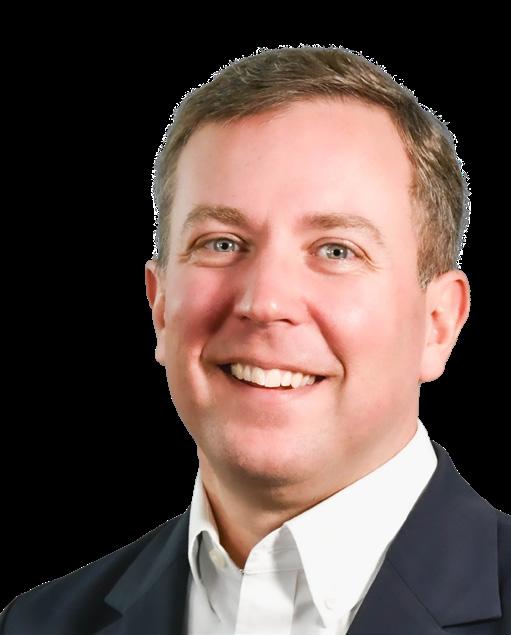
Prior to SAP NS2 Mr. Sirene spent 18 years at IBM in roles of increasing responsibility focused on the Intelligence, Defense and Federal Civilian markets. His tenure at IBM ended with a leadership role running the Intelligence Community account team focused on selling IBM solutions into that client space. Mr. Sirene started his career as a Federal employee working for the Tennessee Valley Authority.
Mr. Sirene holds a BS in Management, a BS in Logistics and Transportation, and an MBA from the University of Tennessee.
Data security, compliance and edge processing power are essential for tech development in the public sector. AWS, SAP NS2 and Verizon have the solutions
Private sector companies are rapidly adopting the cloud and rushing to migrate their data and applications into a global, distributed system. Similarly, public sector organisations across the world are looking to procure cloud technologies to accomplish their complex missions with limited resources. The rapid digitalisation of government services has transformed the way the public sector interacts and exchanges data with each other and with their communities. When it comes to the cloud, public sector organisations are increasingly turning to Amazon Web Services (AWS) to serve citizens more effectively, accelerate innovation and digital transformation, and further enable their missions.
“Government agencies and defence departments are increasingly using data to improve the quality of citizen service and mission outcomes,” says Dominic Delmolino, Vice President, Worldwide Public Sector Technology & Innovation at AWS. “These customers really want to take advantage of cloud technologies like artificial intelligence, machine learning and analytics for better insights and responses wherever their data is stored and processed.”
Data residency policies and guidance can require that data is processed and stored in an IT system that must remain within a particular country, state, or even city limit. This has led to a focus on edge computing, which allows clients to process data
close to the point at which it is originally generated and logged, which also helps overcome problems with low latency. AWS and SAP National Security Services (SAP NS2) jointly deliver solutions, helping government agencies and defence departments address data residency, compliance, and edge computing challenges with Verizon’s 5G networks.
Together, AWS, SAP NS2, and Verizon help government agencies and defence departments securely store and process data wherever the data needs to reside, in the cloud or at the edge. This enables rapid analysis of data to make critical decisions when every millisecond counts or data residency is crucial.
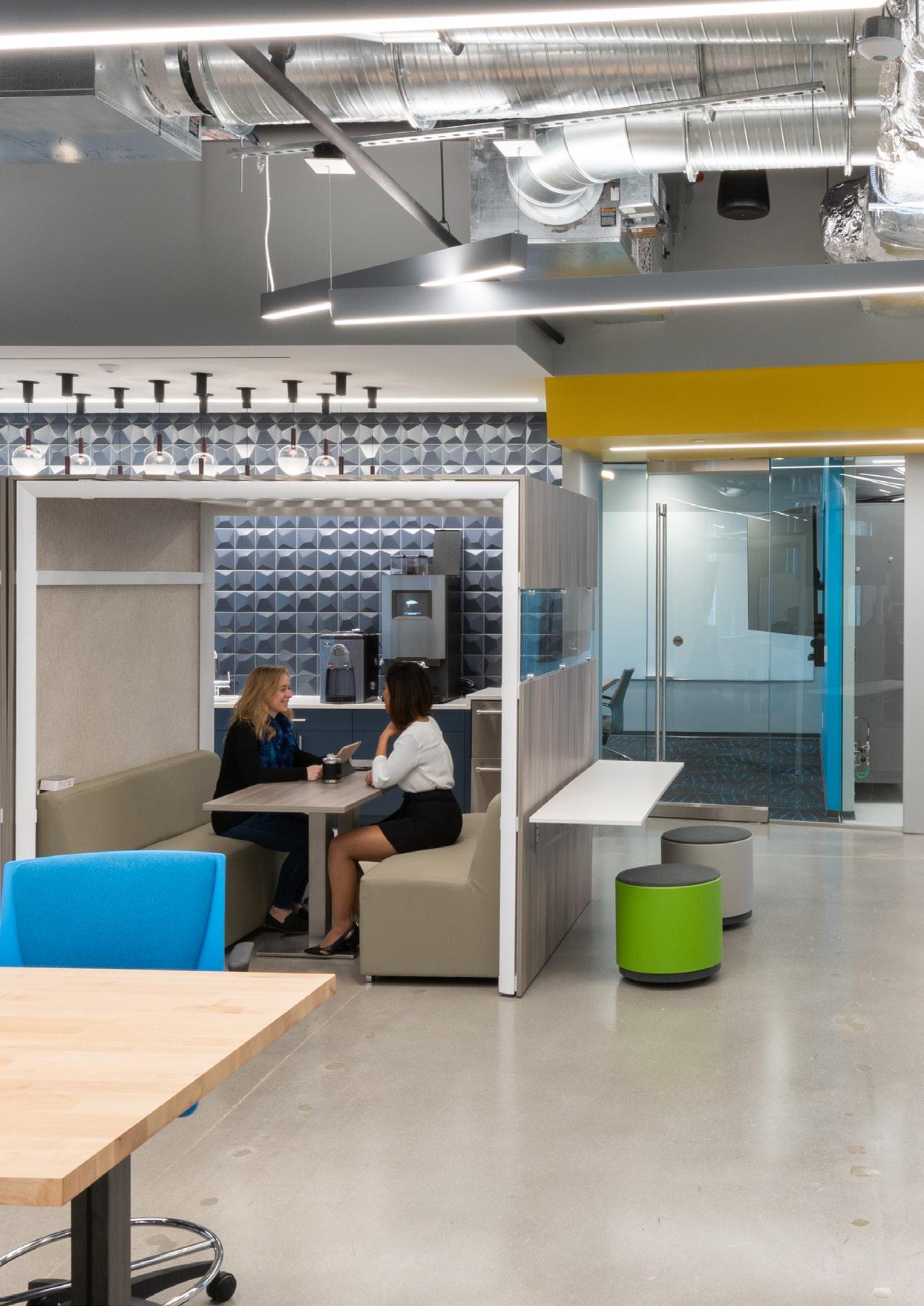
Sirene points out that each and every customer requires varying sets of security requirements. “We can meet the majority of those security requirements. Advanced security offerings are how we focus on enhancing our cloud performance for our clients.”
Such projects are commonplace for SAP NS2, with many of the organisation’s top tier projects revolving around data management and analytics.

Working with government entities brings a set of interesting challenges generally not found in the commercial/business environment. Government requirements are challenging, says Sirene, and SAP NS2’s approach works on the premise that governments can benefit from its experience and expertise.
“We can teach governments how to manage and analyse business and mission data in a very secure fashion, hosted on the cloud. SAP NS2 is all about is providing great data management and analytic tools using cloud hyperscalers like AWS, and then building upon the capabilities that they have and adding that extra security layer,” he says.
“AWS is the market leader in the cloud business, and it's our largest partnership. We have a great relationship with them”
WALT SIRENE R&D AND PRESALES TECHNICAL DIRECTOR, SAP NS2

“We want to be involved and part of the process early on when the government is thinking, 'Hey. I have a problem. I might need to fix that with technology.' And if we're able to get involved early on, then we're able to harness the power of SAP, which has a huge ecosystem of software,” Sirene explains.
If all goes to plan, the team is then able to pick different software components
to put together as a solution to meet customer needs. “If we're out far enough in front of a requirement, we can also apply Research and Development dollars against those needs to build a solution that's even more tightly aligned with government requirements. That’s good for us - and it's good for the end customers.”

While working with government bureaucracy comes with a unique set of challenges, the environment is opening up to change, Sirene says.
“I think that the government has been making a lot of improvements in allowing industry to get up and involved in the upfront requirements process, maybe not developing those requirements, but understanding those requirements. But I think we can, or the government can do better. And it's always better for industry to
“I think that there will be a really big need in the near future to help set a unified data layer and unified model layer”
get further and further upstream so that they can provide better solutions.”
Leading change in the digital ecosystem
SAP NS2 has an ongoing collaborative partnership with AWS (Amazon Web Services) and Verizon. AWS already has a global reputation in terms of cloud service excellence and is a subsidiary that provides on-demand cloud computing services. These partnerships have become integral to SAP NS2’s services in terms of security, innovation and customer reach. They are, says Sirene, a success driver for marketplace dominance.
“Complex opportunities come around and are typically done by multiple companies. That's why it's important to have partnerships like the ones we have with AWS and Verizon and others to provide great solutions to our government customers.

“I don't think we would be as successful as we have been without the partnership that we've had with folks like AWS.”
He goes on to describe how the rolling out of 5G as well as its integration and capabilities has been a major example of how the digital ecosystem can work together to create extraordinary results. “Verizon of course, provides a 5G network, and you're able to do lots of different things that you haven't been able to do wirelessly now. AWS has a great tool called the AWS Outpost, which is cloud computing on the edge. It's a great managed service that provides cloud capabilities on the edge in an on-prem environment.
“We can also host our software on the edge in the Outpost to carry out data analytics that is fed through the 5G network. That’s just one example of what we're investigating - and how we take advantage of the 5G environment in collusion with great partners.”

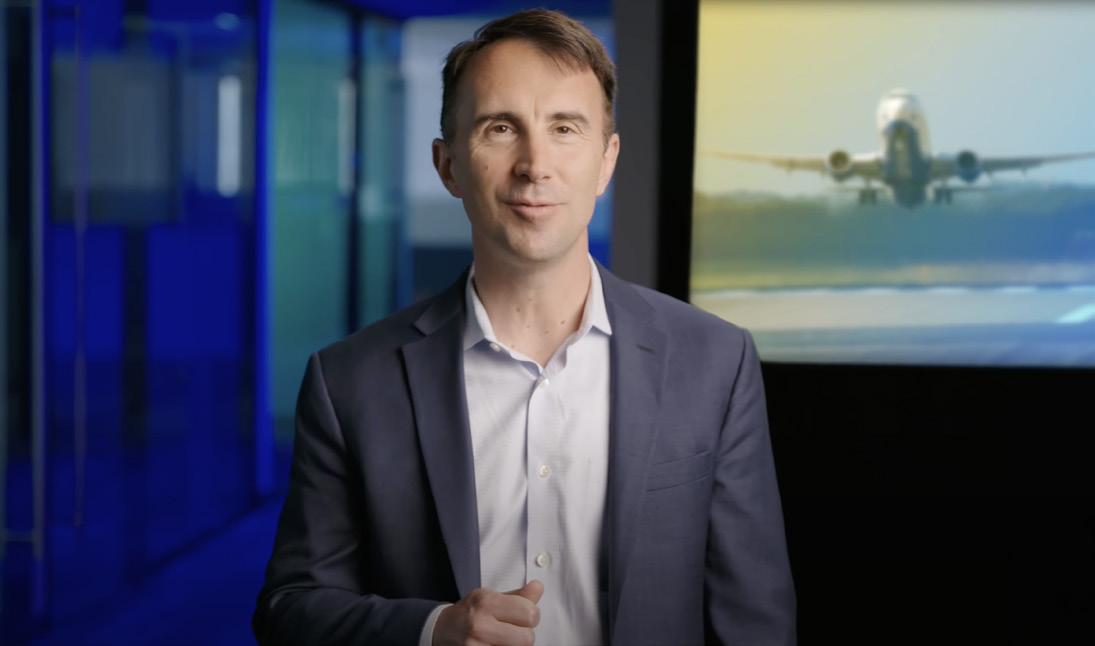
like to think of it is
coming in, that you add some sort of value to it, and then you release a
SIRENE R&D AND PRESALES
DIRECTOR,
He points out that no single entity could have achieved the seamless integration without the help of the others. “We couldn't have done it alone. I don't think Verizon could have done it alone. I don't think AWS could have done it alone. So it really shows the strong partnership that we each bring to the table.”
Working in such a symbiotic partnership with market-leading providers isn’t always so frictionless. But Sirene attributes the success of the collaboration to sheer market excellence.
“AWS is the market leader in the cloud business, and it's our largest partnership. We have a great relationship with them. It's very much mutually beneficial, and I think that's why the partnership works.”
AWS Outpost also provides solutions within the defence and intel space. It’s on-premise instances of cloud means companies can carry out complex actions close to their work location. It is this aspect, particularly, that has worked well for the DOD.
“If you think of the DOD, a lot of their work is out of the field. They have troops deployed, and sometimes they might not have the quick comms to a data centre that is back in the United States. They also might be way overseas. So, Outpost is a really great tool for adding additional capability to those type of clients.”
SAP NS2 is also collaborating on a pilot programme with the IoT, which is looking at how SAP NS2 could utilise IoT data on the edge to analyse and help the decision-making cycle faster and more towards the edge than the typical analysis cycle. “Outpost is going to be critical in that effort,” he says.
The idea is that the reduction in latency and the smaller distance the data has to travel increases security. “We believe that it would be much more secure. We're also starting to think through how we might be able to put on some of the extra security layers that we've built
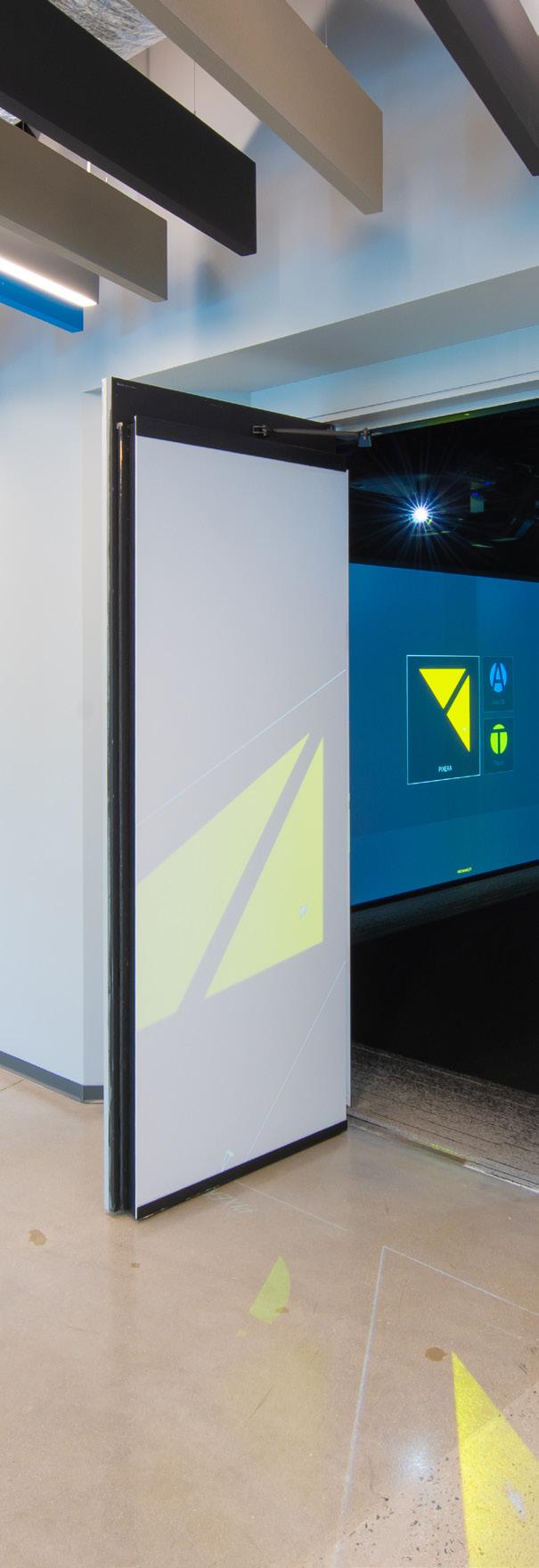
on our regular commercial and government offerings onto Outpost, to provide even further security or a better layer of security to those users of Outposts in the field.”
Even though SAP NS2 is at the cutting edge of innovation when it comes to cloud solutions and implementation, there is one area Sirene would like to expand upon to improve integration for the digital ecosystem.
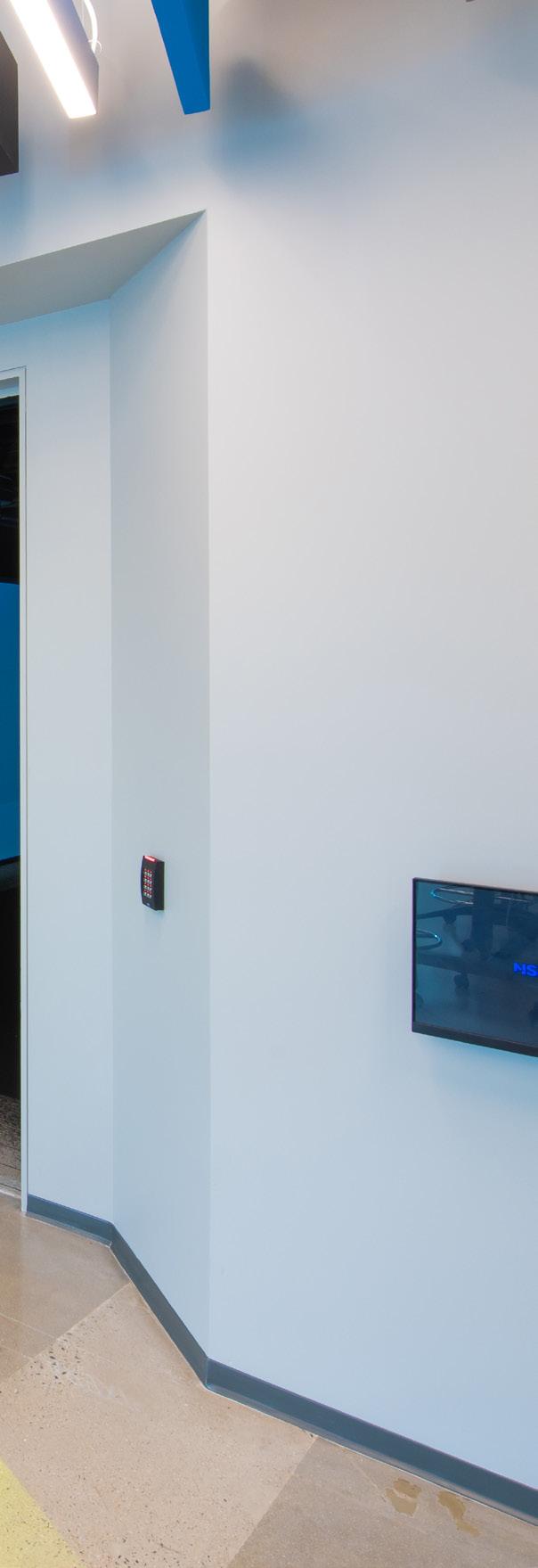
“Our clients are spending a tremendous amount of time, effort and money on building data sets and enhancing data sets, buying data sets, and then also analytical models. They're buying analytical models. They're spending a lot of time building or enhancing them, and they've forgotten that all these things need to tie together.
“I think that there will be a big need in the near future to help set a unified data layer and unified model layer so that analysts across or employees across an organisation can have access to the data that they need and access to the models that they need to do their job. A start would be maybe at an agency level, but I think that this could extend across government.
“There's different need-to-know security measures so not everybody can see everybody else's data. But there's some data that could be shared across the government. I think would really be helpful for all those employees across the federal space.”
He adds: “It could definitely give us an edge up on our competition, and it's something that I see as a little bit lacking at the moment. And I think that if we could turn back time and set those standards before we did everything rather than have it come afterwards, it would really improve technology today.”





As the automotive industry continues to evolve, Software-as-a-Service promises to deliver dynamic, up-to-date and personalised experiences to customers
WRITTEN BY: MARCUS LAW
The automotive landscape has undergone a rapid transformation in recent years.
While some continue to be sceptical about the immediate future of fully autonomous vehicles, advances in automotive technology have been made at breakneck speed.
And, with the dramatic increase in electric vehicles (EVs), the use of Software-as-aService (SaaS) in the automotive industry only looks set to increase, as vehicles become more and more connected.
Software will bring cutting-edge systems to support automotive manufacturers Latest automotive innovations depend less on mechanical ingenuity than on software quality, execution, and integration. Plus, as cars become more connected and technology improves, software updates can be developed and implemented to provide new functionality and features via SaaS.
For internal-combustion engines, software has enabled recent innovations, such as emissions-reducing stop–start technology. But for EVs, software is even more critical






A modern network must be able to respond easily, quickly and flexibly to the growing needs of today’s digital business. Must provide visibility & control of applications, users and devices on and off the network and Intelligently direct traffic across the WAN. Be scalable and automate the process to provide new innovative services. Support IoT devices and utilize state-of-the-art technologies such as real-time analytics, ML and AI. And all these must be provided with maximum security and minimum cost.
This is the power that brings the integration of two cloud managed platforms, Cisco Meraki and Cisco Umbrella. This integration is binding together the best of breed in cloud-managed networking and Security. cisco.com




and opens many more possibilities. At a time before the dawn of true Level 4+ autonomous vehicles, building high-quality experiences for consumers is critical.
“The advent of the fourth industrial revolution (Industry 4.0) means that

automotive manufacturers could bring cutting-edge systems and tools to support automakers in streamlining workflows, increasing product quality, and optimising production,” says Avneesh Prakash, Vice President – Mobility at Tata Communications.




“One example is cloud-based SaaS. SaaS solutions provide a real-time view of the production line and product quality, collecting data from any source to help automotive manufacturers stay ahead of the curve. Cloud-based SaaS solutions are significantly more agile, flexible, and scalable than traditional on-premise systems. This brings in a new age to the automotive industry, and a new meaning to connected cars and the ecosystem it's creating in the modern world.”
“The immediate benefit of such technology is that it’s opening a new channel to deliver dynamic, up-to-date and personalised in-vehicle digital experiences
“CONNECTED CARS WITH A DEDICATED SAAS PLATFORM OFFER A UNIQUE CUSTOMER EXPERIENCE WHILE ALSO BRINGING COST AND REVENUE ADVANTAGES TO MOBILITY COMPANIES, FROM OEMS TO SUPPLIERS, DEALERS AND EVEN TECHNOLOGY PROVIDERS”
AVNEESH PRAKASH VICE PRESIDENT – MOBILITY, TATA COMMUNICATIONS
to drivers and passengers,” adds Przemysław Krokosz, an Edge and Embedded Technology expert at Mobica. “Passengers travelling in autonomous vehicles will have more time to consume these services – whether they are for entertainment or productivity purposes.

“It is expected that a whole range of new applications will appear that bring mobility, autonomy and connectivity together,” Krokosz says. “This ranges from humanless delivery of goods, “robo-taxi” and “robo-hauling of goods” fleets, through to GIS data gathering for services such as automatic road quality checks and other nascent services.

“These softwaredefined capabilities will be dynamic to the point that the user experience can easily transition between different environments –be that the family car, a robo-taxi, mobile business hub, mobile media centre or even an elderly care platform,” he adds. “Connected cars with a dedicated SaaS platform offer a unique customer experience while also bringing cost and revenue advantages to mobility companies, from OEMs to suppliers,

“IT IS EXPECTED THAT A WHOLE RANGE OF NEW APPLICATIONS WILL APPEAR THAT BRING MOBILITY, AUTONOMY AND CONNECTIVITY TOGETHER”
PRZEMYSŁAW KROKOSZ MOBICA
dealers and even technology providers,” says Prakash.
“These benefits include an increased level of real-time insights provided into driver behaviour, in-car events, and enabling vehicle systems through SaaS integrations to recognise risky behaviours and respond appropriately, which helps to keep drivers safe.”
By making use of SaaS, manufacturers will be able to further innovate in the development of new vehicles. Ideas can be put to the test quickly and efficiently, and – if successful – can be scaled easily.
“On cloud-based SaaS manufacturing systems, all necessary programmes and applications are preconfigured, making the initial setup process simpler,” Prakash says. “This leads to saving time, as the user spends less time installing and configuring the programme than they would with conventional software solutions.
“SaaS would also improve driver experience by providing map context,



Driverless cars could result in a 20% increase in vehicle miles travelled, according to a study by researchers from the University of Texas. When automobiles become self-driving, humans will have more time to do other things while on the road, with technological advancements likely to determine the speed at which this happens. According to AT Kearney, self-driving technology may free up 1.9 trillion minutes of idle time for passengers by 2030.
optimal routing, and navigation features that take into account real-time traffic, driver patterns, and weather conditions. This will lead to an increase in driver convenience and arrival times.”
Changes could have dramatic sustainability impact With an increased global focus on sustainability in recent years, the environmental effects of utilising SaaS in the automotive industry could prove beneficial. “The SaaS approach promises huge savings in terms of the material cost and human effort when introducing a new service,” says Krokosz. “Considering that these services will be provided by dedicated cloud operators and their partners – using optimised resources, virtualisation and software-defined infrastructure – the economy of scale will limit the carbon footprint related to the provision of such services, compared with the traditional means of distribution.”
According to research by Morgan Stanley, today the overwhelming majority of a car’s value relates to the hardware – the chassis, the powertrain, interior seating and lighting – while software and applications will
Massive amounts of data moving between vehicles and cloud-based systems will only trend upward with autonomous vehicles, says Blackberry, as machine learning (ML) algorithms running in the vehicle are trained using big data sets via associated processing power in the cloud. Software-defined vehicles could generate between one to two terabytes of data on an average day of driving – highlighting the need to harness the power of the cloud.
of outdated and inefficient electrical/ electronic platforms,” Krokosz says. “Due to the electrification of the car industry, vehicle manufacturing will be simpler and costs will drop significantly – ultimately driving down vehicle prices. While this means lower margins on car sales, new revenues are expected to come from the digital services.”
collectively account for 60% of the value of a future self-driving car.
As vehicles transform to software-led, consumers are likely to purchase cars less frequently – instead choosing to pay for software upgrades over time.
“The traditional automotive OEMs have realised the value of cloud services and the need to invest in the radical modernisation

“SaaS solutions also understand how vehicles are used and keep track of data about them over their entire lives to maintain and improve vehicle quality, thereby optimising engineering and production, identifying problems and lowering maintenance costs,” adds Prakash.

As McKinsey points out, a selection of top automakers have already experienced wellpublicised security breaches. Hackers have proved their ability to access locks, brake systems, and dashboard displays remotely

via the cloud connections in several models. Security researchers demonstrated that they could connect to a vehicle’s drive-control systems via the infotainment interface, gaining access to powertrain, infotainment, and climate functions.
“Seamlessness and reliability require increased connectivity, and that comes at a price,” says Christine Caviglioli, VP Automotive & Mobility Services at Thales


Group. “The car today is a computer on wheels – luxury models incorporate up to 100 million lines of code –and is connected to a wide variety of systems and networks that enable it to run safely and efficiently.
“All these communications and connections are wireless, which creates increased exposure to the risk of cyberattacks, be they on the vehicle’s systems, the road infrastructure or drivers’ personal data. Recent years have seen a dramatic upturn in this type of attack – automotive cyber incidents increased seven-fold from 2016 to 2019.
“This is where cybersecurity plays a crucial role, not just in terms of protection along the entire value chain, but in allowing the full potential of connectivity to be realised.”

“THE CAR TODAY IS A COMPUTER ON WHEELS AND IS CONNECTED TO A WIDE VARIETY OF SYSTEMS AND NETWORKS THAT ENABLE IT TO RUN SAFELY AND EFFICIENTLY”

wish to be

A round the world, an incomprehensible number of children are suffering from illnesses that, in one way or another, significantly affect their lives and those of their families.

In the UK alone, there are tens of thousands of children living with lifelimiting or life-threatening conditions, with their loved ones having to face the almost impossible task of adapting to this new normal while maintaining a sense of positivity.
For many of these children, their childhood looks drastically different to how it did before. But, through the work of its significant volunteer base, Make-A-Wish UK seeks to offer a moment of respite and happiness to both children and their families. Make-A-Wish UK is determined to put issues associated with childhood illness aside and empower children with the opportunity to choose a wish that's unique to them.
This is a particularly powerful thing as the lives of many of these children are wholly dictated by their health needs; the wish creates hope, with the culmination inspiring
As Make-A-Wish UK continues to support ill children and their families, Sarah Watson explains how tech will drive the mission forward

happiness and positive memories for the whole family to cherish.
“We've got more than 43,000 volunteers around the world, and we've granted over 520,000 wishes worldwide,” says Sarah Watson, Director of Finance and Technology at Make-A-Wish UK.
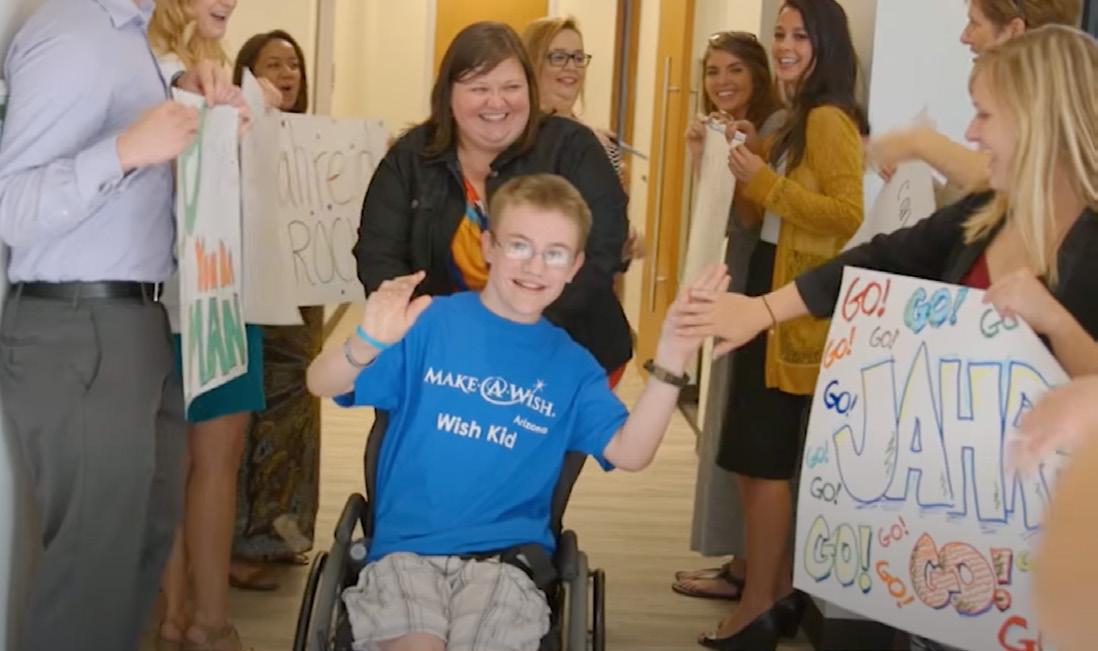
Right now, more than 63,000 children in the UK are eligible for a wish because they have a life-limiting or life-threatening condition, and the charity is dedicated to supporting as many of these children as possible, but sadly, as Watson explains, “the reality at the moment is that we can't reach all of the children that we need to”.
Dedicated both to her role and the families Make-A-Wish UK supports, Watson and her team are sharply focused on how technology can enable the charity to deliver more wishes in an efficient and cost-effective way.

“We are quite unique because, if every wish is as unique as the child that wishes for it, that's actually really quite hard for planning.
“From a tech point of view, the key thing for us is to really think about that real-time information – we need to look at how we make sure that the minute that a child wishes, we have the technology and digital products in place that can really send that ‘beacon’ out into the community to attract the resources needed to grant it, because as soon as that's in place, we can do that,” notes Watson.
“This is why things like gifts-in-kind are really important to us because, as a registered charity, when we commit to grant a child’s wish, we’re
Sarah Watson, Make-A-Wish UKmaking a financial commitment to the cash cost of funding that wish. So, if we don't have a strategy that allows us to access partner funding or gifts-in-kind, we're always limited by the amount of reserves that we hold,” she adds.
Gifts-in-kind are a kind of charitable giving in which, instead of giving money to buy needed goods and services, the goods and services themselves are given. For Make-A-Wish UK, this could be anything from virtual reality equipment and costumes to specialist cars and gaming consoles.

Sarah Watson is the Director of Finance and Technology with Make-A-Wish Foundation® UK. A transformative leader, Sarah is focused on bringing people and networks together to problem solve for maximum impact.

Previous roles have included Director of Finance and Operations for Social Investment Business, who have provided over £400m of grant and loan funding, and Head of Finance and Core Services for Cochrane, a global independent network of researchers, professionals, patients, carers, and people interested in health.
Sarah is an independent Trustee for the Royal College of Paediatrics and
I wish to have a gamingPC
Aiden, 7 Blood cancer


George was born with only half of a working heart. His wish to be a Ghostbuster, take a ride in an Ecto-1 car, and go ghost hunting was an imaginative escape into a world where the heroes are different and brave – just as he has had to be during three life-saving operations. It was also a positive reminder of all the things he CAN do, even when he can’t run around like his friends.
When Make-A-Wish shared George’s wish story in April 2022 to highlight some of the wishes waiting to be granted, Ghostbusters fans and communities from all over the UK rallied round offering to help grant George’s wish.
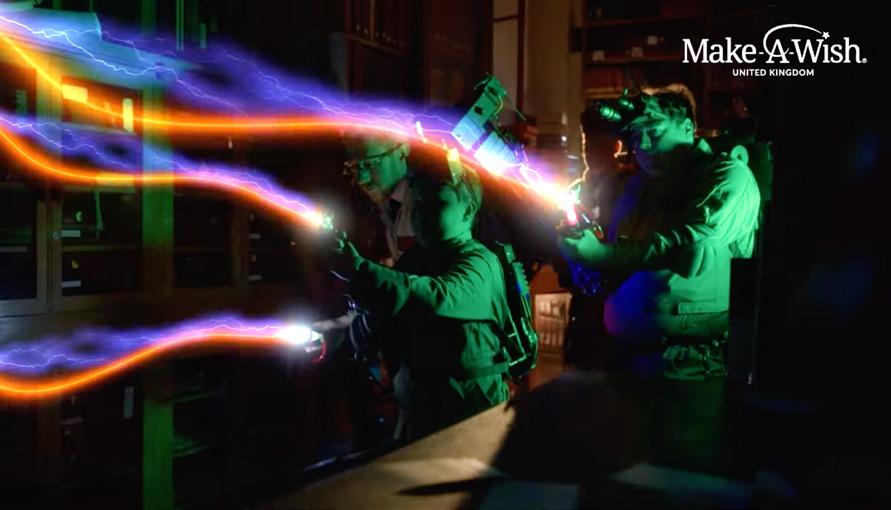
For example, Peter Cooper from Manchester, who runs Film Car Hire, offered to drive George in his replica Ecto-1 car, which was used in Sony’s promotion of the most recent Ghostbusters film.

George's wish to be a Ghostbuster is granted!
On top of gifts-in-kind, Make-A-Wish UK also receives funding from the general public and partners, enabling them to purchase different things to make a wish a reality.
Like all organisations, Make-A-Wish UK relies on money to fund projects but faces challenges like many not-for-profit organisations around fundraising do, and as Watson notes, because of this the charity is limited by what it can do.

“That's really where finance, governance, data and tech come together. It's about acknowledging the barriers that are there, making sure we've got the frameworks that keep us safe and secure from a governance perspective so that we do all the right things and record things in the right way,” says Watson.
To help with this, Salesforce provides MakeA-Wish with its main service delivery platform, giving the charity a 360-view of a wish.
“We also use that for our fundraising – it's the platform that we're really actively developing to get that real-time marketplace environment, which will allow us to connect our wishes directly to the resource that's required to put them together,” Watson explains.
SARAH WATSON DIRECTOR OF FINANCE AND TECHNOLOGY, MAKE-A-WISH UKI wish to be a Ghostbuster George, 8 Epstein’s anomaly
“It allows us to focus on the magic – not the admin – of a wish, so that's really important to us”

To marry its technology with its mission, Make-A-Wish UK applied to be part of JP Morgan’s Force for Good programme, which aims to use resources and technology skills to create sustainable solutions for nonprofit organisations.

The JP Morgan team helped the charity create technology and a user experience that is magical, inclusive and inspiring, aligning with the values of the organisation.
SARAH WATSON DIRECTOR OF FINANCE AND TECHNOLOGY, MAKE-A-WISH UK“We need to stay relevant, and we can only do that by connecting with companies who are operating in this space”
“With JP Morgan, we were able to utilise tech to help with the replacement of cash for gifts-in-kind with the help of an app. So, rather than asking donors to give us cash to fund a wish, they could instead donate a gift of absolutely anything – from a car to balloons to food, to all of the things that make up the component parts of a wish. Once the wish story is uploaded in Salesforce and we know what's needed to grant it through the creation of a wish design, that requirement is pushed out through a stock management system to the app to our donors and asks them to contribute,” says Watson.
“Strategically, it is just fantastic because, if you imagine it's almost this virtual promise into a pledge matched to a wish and the donor can see exactly which wish they're supporting, the condition of the child, why it's important. It's a really unique


“Gifts-in-kind are really important to us because, as a registered charity, when we commit to grant a child a wish, we’re making a financial commitment to the cash cost of funding that wish.”

wish to be an astronaut Aiden, 5 Rare heart condition
giving experience. It allows us to focus on the magic – not the admin – of a wish, so that's really important to us,” she adds.
By adding this technological solution to Make-A-Wish UK’s roster, Watson shares that JP Morgan is supporting the organisation in the best way possible: helping the not-forprofit to deliver on those promises made to children more effectively and with ease.
Technology is critical for all points of the wish-granting experience. One famously memorable wish was for a young boy called George who wanted to be a member of the Ghostbusters – a wish that went viral on social media.
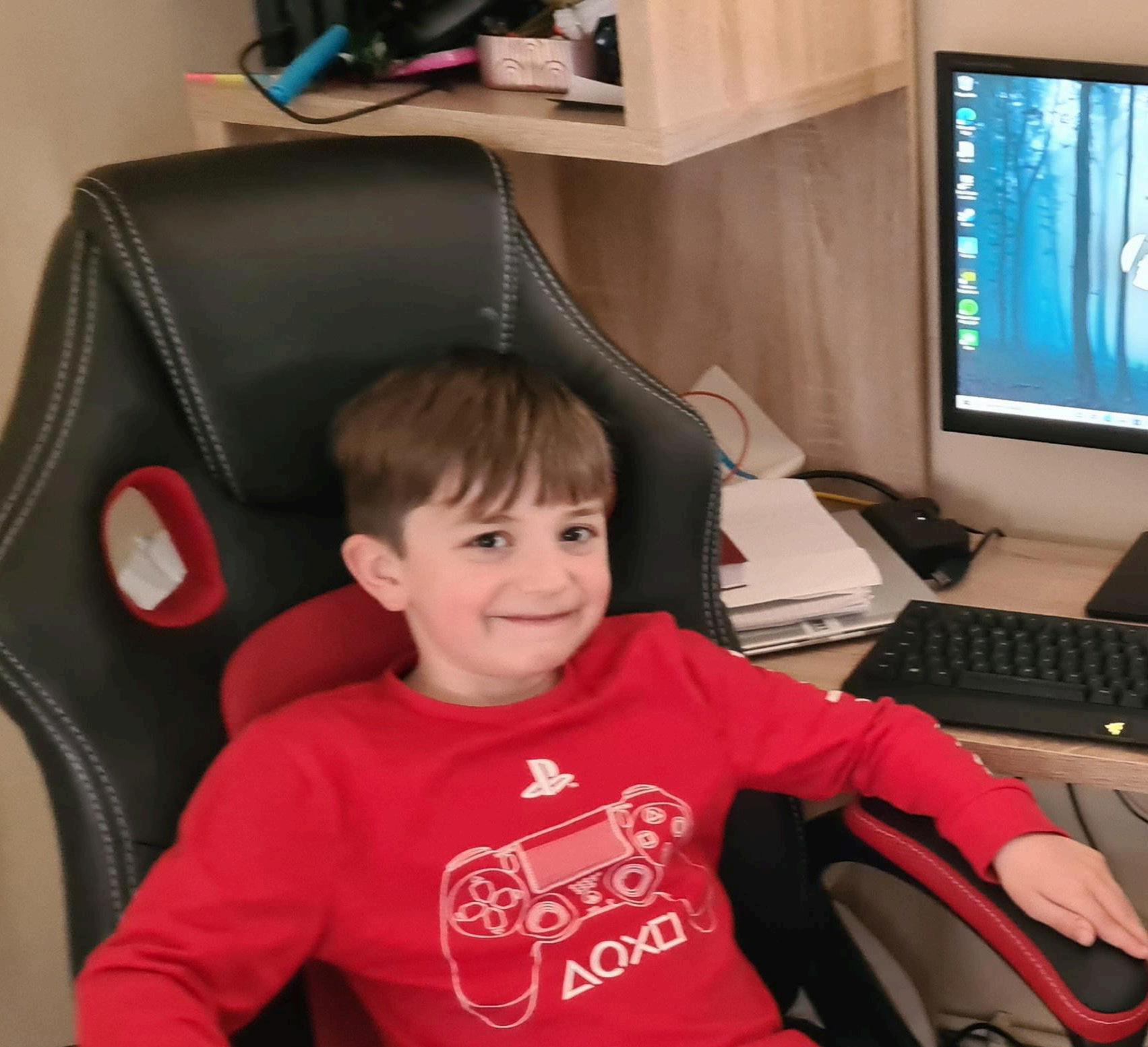
“When we talk about getting that message out about how people can help us, social
media is a really powerful tool, and the wish with George is a great example of that. It shows people what we do, but also encourages more support from the public. Also, by focusing on the gifts-in-kind, we really open up what's possible to absolutely everybody via social media. We want all of our children to benefit from the opportunity for people to donate in whatever way they might be able to,” explains Watson.
Equally, technology supports the execution of wishes, too, as Watson notes: “Many of our children are not able to participate in the world as other children are. They're not connected in the same way. Some of them aren’t at school and technology is their only window to the
wish to have a gamingPC
outside world, this is how they connect. They connect to their friends, and they connect to the outside world.”
“Often, their wishes are linked to technology because that is where their happy place is. That's the thing that gives them the escape from the treatment or whatever critical illness. And it takes away the barriers, they can be anything in that online space,” she continues.
Ultimately, Make-A-Wish UK knows that it needs to adapt to the changing, digitallydriven world we live in. Both in school and at home, children are exposed to the wonders of digital daily and are growing up increasingly fascinated by the world of technology.

“We need to stay relevant, and we can only do that by connecting with companies that are operating in this space and can help us to properly offer all that technology has to grant wishes. As a charity, we are always hugely grateful for additional support, and would encourage anyone interested in helping grant wishes through effective tech partnerships to get in touch,” comments Watson.
When it comes to selecting partner companies, Watson explains that Make-AWish UK is focused on ensuring partners are aligned with the non-profit's’ visions and values.
But it’s equally as important that MakeA-Wish is completely candid with partners regarding finances, as the not-for-profit company “doesn’t have the budget of organisations”, according to Watson.
“Value exchange – what's invested for what we achieve – is important for both parties because, very often, organisations will partner with us on a kind of corporate social responsibility basis or they'll offer discounted rates.
“The other thing we found, particularly with the partnership with JP Morgan, is that we need to be a good partner. If somebody working with us is on tight margins, or in the case of JP Morgan free of charge/probono we need to be respectful of their time because otherwise they're not going to continue to work with us,” she continues.
Another key player in Make-A-Wish UK’s partner ecosystem is Totem, an app development company that enables organisations to build inclusive and intentional cultures digitally, bridging the gap between teams working from home and in the office.
“In 2021, as a response to COVID-19 preventing our children from being able to be granted Disney wishes, A Disney Wish UK was created between Disney and Make-AWish UK Create, a new and unique Disney Wish Experience For Wish Children in the UK during the pandemic – The Walt Disney Company Europe, Middle East and Africa,” explains Watson.
“This wish ran over a number of weeks, with families staying for a rotation within this. The admin for this – booking activities and meals, for example – was a highly manual activity and, this year, we partnered with Totem to support us in building an app to make this not only an admin start option, but, more importantly, a real enhancement
Amber, 12 Batten disease

I wish to be aprincess
for our wish children and families. They can book activities and meals on the app, be sent reminders, build excitement through the use of video and QR codes at the wish book, and collect rewards.”
“Totem turned the app around in a really short time frame, and their attention to detail, including making families aware of the sensory impact of activities, has been something that we have been incredibly impressed with,” she surmises.

Additionally, Watson has to ensure that technology protects the families that share such sensitive information with them supported and helped by OwnBackup. The company has helped Make-A-Wish UK protect its data and safeguard itself from potential breaches or losses.
This is particularly important as the organisation has stringent GDPR processes in place.
“We take our responsibilities incredibly seriously in terms of the data that we can and we can't share. Also, the permissions that are given to us by wish families, because not every family wants any story shared actually, and that's fine. So being able to record all of that and make sure we treat our data as we need to and as we should, is
SARAH WATSON DIRECTOR OF FINANCE AND TECHNOLOGY, MAKE-A-WISH UK
“The reality at the moment is that we can't reach all of the children that we need to”

incredibly important and OwnBackup help us with that,” explains Watson.
“They've been an amazing partner. They've allowed us to integrate their backup solution into our Salesforce environment, which means we have full visibility over our data and ensure we regularly audit and back up the data stored in our Salesforce system.”
“That wasn't something that was possible before we began to work with OwnBackup. I mean, that's all you can say about when partnerships work, you make something possible that wasn't, before you entered into that. And that's what we've been able to do with them,” she adds.
Securing the future of Make-A-Wish UK with more investment in tech As each year passes, the Make-A-Wish UK team know how important it is to keep up with the changing world of business as well as childrens’ wishes. Watson notes how important

technology continues to be as the organisation improves its operations.
“My technology manager's catchphrase is #automateallthethings. But, in all seriousness, the more we can do with that, the more it allows us to increase our operational efficiency,” explains Watson.
Concluding, she adds: “We want to focus on how we build frugality, not rigidity. So, if we want to flip this to a marketplace environment, we need to create a vibrant community of activity that's centred around wishes and making sure that real-time information draws those resources to wishes.”
“That will enable us to grow the number of wishes that we grant, the community that supports them – whether that's active supporters and donors, whether that's through cash or gifts-in-kind – and, equally, partners.”

Businesses
will transform the way
boardrooms find the
work with
WRITTEN BY: GEORGE HOPKIN
While it may take many by surprise, that’s the fresh call to action among analysts paying close attention to how companies are – or aren’t – factoring artificial intelligence (AI) and machine learning (ML) into their data management plans and playbooks.
After years of reading sensational stories about the limitless potential of intelligent machines, stakeholders and C-suite, executives in particular appear to be confused about the best course of action to take. Commercial missteps and the total failure of some products have resulted. Experts say it doesn’t have to be this way.
“AI and ML has become crucial and necessary for nearly all businesses in every sector,” says Elliott Young, CTO, Dell Technologies UK. “In the same way that businesses have had to transform digitally and become digital-first, companies are going to need AI and ML to remain competitive. Those on the path towards this are already reaping the benefits of being able to make decisions driven by predictive analytics.”

But most boardrooms and bosses don’t fully understand the potential use cases for AI and ML. “Stakeholders often don’t know what to ask for in order to get the right benefits out of the technology,” says Young.“This means they don’t really know what their business could be missing out on.
“Likewise, leaders can be guilty of thinking that AI and ML sit siloed within a technology function, and that departments specialising in IT and tech will bring working AI, ML, and data strategies to them fully formed. This is unrealistic.”
This sense of corporate confusion has also been identified by Gartner, who say unrealistic expectations have led to poor decision making, disappointment among stakeholders, or outright failure for AI-related business products.
“Overhyped AI scares people and masks the real benefits AI can offer to humanity,” says Anthony J. Bradley, Gartner’s Group Vice President, Emerging Technologies and Trends Research. “This can lead to slower adoption, and even sociopolitical fear and government regulation that will stifle progress. There are real concerns over the appropriate and ethical use of AI/ML, but AI eliminating the need for humans is not one of them.”
Bradley also claims overhyped AI muddies the waters between human and
“Don’t believe the hype.”
machine intelligence, which can lead to misplaced efforts to automate humans out of the process. “It also stokes fears of machines replacing people rather than exploring the tremendous benefits of combining the two. In reality, human intelligence and machine intelligence are very complementary.”

The biggest challenge companies face is the depth and diversity of data across a wide range of platforms and systems, says Accenture’s Data Networks and Marketplace Lead, Prateek Peres-da-Silva. Alongside colleague Tyler Buffie, who works on Applied Intelligence within the company, Peres-da-Silva says a successful AI-data strategy is a lot harder to deliver than people might think – many companies still struggle to use existing data within a business, nevermind the deluge coming down the line thanks to AI/ ML technology.
“Overhyped AI scares people. This can lead to slower adoption, and even sociopolitical fear and government regulation”

So, what do companies need to do today in order to take control of their data, AI and ML? Peres-da-Silva and Buffie both say it is critical that stakeholders get the foundations right. This might include prioritising a cloud-based, AI-data platform and the corresponding checks to ensure the entire ecosystem is compliant for data management and governance.
Human employees shouldn’t be overlooked and will, in fact, play a crucial role in the development of a successful AI-data strategy, say Peres-da-Silva and Buffie. “Creating a positive user experience is critical for the adoption of your data and AI strategy. Each part of the organisation may be looking at the same data but through a different lens.”
Dell’s Young suggests business units need to work in collaboration with specialists to identify requirements and create solutions, while a dedicated AI/ML champion within each business unit is a necessity, as they can help bridge the gap between those with business knowledge and the data scientists building AI models.

“Those on the path are already reaping the benefits of being able to make decisions driven by predictive analytics”
ELLIOTT YOUNG CHIEF TECHNOLOGY OFFICER, DELL TECHNOLOGIES
IT and security departments need to continue ongoing work to manage data and mitigate against vulnerabilities, but now is also the time for all departments and business units to recognise their own responsibilities for helping keep data safe.

“Creating a positive user experience is critical for the adoption of your data and AI strategy”
PRATEEK PERES-DA-SILVA GLOBAL LEAD, DATA & INSIGHTS PLATFORM AND MARKETPLACE, ACCENTURE
As departments take on data governance as part of their own responsibilities, dedicated roles are required to ensure data management and governance is given the attention it requires, says Young.
“There may be a need for internal AI/ML data governance awareness courses as well as developmental plans for employees so that they come to understand their role and responsibilities. Some organisations have developed these in-house, while others

have partnered with industry-recognised organisations for wider recognition.
“Understanding data governance and how to use ML effectively is going to reach almost every department in every business.”
ML and AI models present their own, new ethical concerns that will have to be addressed. Some organisations remove so-called ‘protected characteristics’ –typically referring to gender, race, ethnicity or age – when importing data for processing by an ML algorithm, says Young.
“However, without that information, the machine could begin demonstrating unconscious bias in predictions based on patterns, which can then lead to harmful outputs and – in doing so – harm the protected characteristics that they were intending to protect,” explains Young. Hidden signals exist in data, so the final outputs require careful investigation and checking by a human. Businesses should introduce regular checks to any AI/ML model they are running for data processing.
One of the new roles for humans will be inspection and quality control over machines, particularly where bias is concerned, asserts Young. Humans will also be required to ensure ML models are deployed for the right reasons and not unintentionally being used in ways that could influence other aspects of the business in a negative way.
“Without these, it’s difficult to know whether a model is unintentionally creating bias or drifting,” he says. “It's important to understand that just removing sensitive data is not the answer, even if that might seem like the most obvious solution. Humans need to be on hand to intervene.”
 PRODUCED BY: KRISTOFER PALMER
PRODUCED BY: KRISTOFER PALMER






If you look back over the past decade, a number of transformative moments are dotted along the world’s collective timeline. From rapid technological innovation and the rise of social media to the widespread digitisation of industries, life nowadays is markedly different to that of just ten years earlier.
In the UK, this period is marked by change. A global recession in 2008 paved way for a prolonged period of austerity and had a domino effect on politics; the consequent 2016 Brexit referendum led to the UK’s eventual EU exit in 2020; the 2017 Grenfell Tower tragedy unfolded in front of our eyes, laying bare safety concerns for the most vulnerable in social housing; and life changed dramatically in 2020 with the COVID-19 pandemic, the economic, social and political fallout of which are still ongoing today. All in all, it’s been a pretty tumultuous decade or so.
Lucky, then, that as a devastating cost-of-living crisis looms, there are some good eggs looking out for those most in need: Notting Hill Genesis (NHG). One of the largest housing associations in London and the south east, it provides housing “right across the spectrum” of need, with a core mission to “build and maintain quality affordable homes, creating diverse and thriving communities”.
“The majority of our main function, in terms of volume, is on the social housing side,” establishes Rajiv Peter, the housing association group’s Chief Information Officer (CIO). “That's where people may pay a discounted rent to us for a good home, where they previously might not have had that opportunity.”
“We have a whole range of products. Some of them help you get into the housing market, so if you couldn't afford to purchase a home, you could instead buy part of the house and rent the rest. Then when you can afford it, more and more of that equity can be bought – or you could sell it and use your equity increase to buy somewhere else. That helps people get onto the housing ladder.”
It’s a noble cause to be aligned with, one that Peter feels honoured to help lead and support in his multifaceted role – not least because of the myriad ways the association positively impacts people’s lives.
Notting Hill Genesis’ evolution & defining social purpose
NHG itself has experienced a number of changes in recent years – namely, combining two well-established housing associations to form what we now know as Notting Hill Genesis. Yet, despite this evolution, the association’s overarching mission has remained the same: to “make a difference” to the lives of those in need and have “a visible impact”.
Increased visibility has been built into the housing process to cultivate connections and build “more responsive relationships with tenants”. Alongside this has been the development of a new commercial arm, introducing proprietary tech specific to the housing association sector that simplifies processes and communication.

But there are difficulties ahead as the world continues to witness extreme climate events and watch the Russian-Ukraine war from the sidelines. What’s more, the cost of living is rising at the fastest rate in nearly 40 years, “compounding and enlarging issues already in existence”, such as the affordability of food, energy and fuel and, by proxy, housing.
“The housing crisis is much more acute now,” states Peter candidly. “People might find it difficult to afford even the lower rents. But we’re always there to help our residents who are struggling to make use of the benefits that they're entitled to and so on, because a lot of people don't know how to get those services well enough.
“We are one of the few housing associations providing a service where there's a named person for each property.
If you live in one of our properties, you will know by name a person that you can speak to.” This means that any financial concerns can be speedily passed on and the appropriate help given, which will no doubt alleviate residents’ concerns.
To be able to counteract and deal with such situations, especially ones as uncertain as the immediate future, Peter emphasises
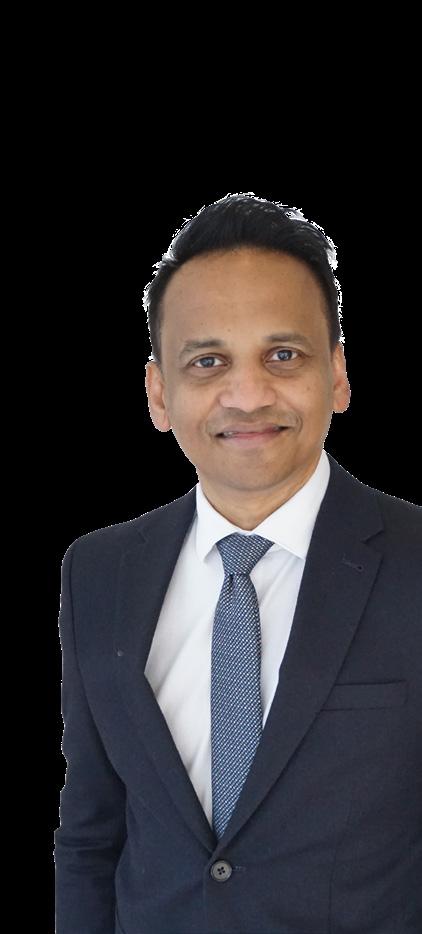
Rajiv graduated with an MSc in Information systems and stayed on at the London School of Economics researching the use of technology and democracy. Subsequently, he was part of the early local authority digitalisation projects working on behalf of the office of the deputy prime minister and various local authorities. The digital standards that he created were to be used mandatorily for English LAs for around eight years. In the commercial sector, Rajiv has been part of several tech startups, either as a supplier or as part of the start-up itself. After 15 years in the commercial sector and having done everything from setting up subsidiary companies offshore, to creating technical architectures as a consultant, to getting new software products out to market, Rajiv decided to go back to public sector and started at Notting Hill Genesis in 2017.

“This platform has been created by a housing association, for housing associations”
RAJIV PETER GROUP CHIEF INFORMATION OFFICER, NOTTING HILL GENESIS
Digital transformation is essential to the success of housing associations. By developing an effective digitalization strategy, housing associations can improve the livelihoods of tenants, all the while staying compliant and ensuring sustainability.



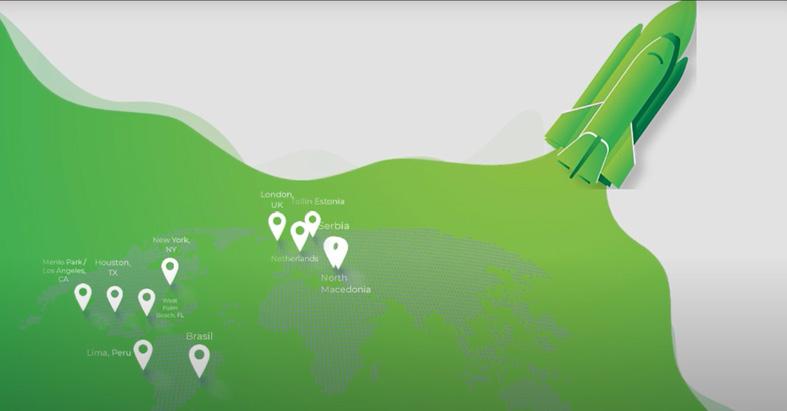
John Abadom, General Manager at IT Labs Group Ltd, shared the ways in which the company is working with Notting Hill Genesis
IT Labs is a leading international housing software development company helping social housing landlords to deliver their technology roadmaps through highperforming, purpose and process-driven software development teams.


In a time where technology is key to many business operations, John Abadom, the General Manager at IT Labs Group Ltd, explained how the company is technology agnostic: “Everything we do has a proactive intent for innovation. We understand a need for speciality and our teams of technology professionals are adept at creating scalable and efficient software solutions in a variety of industries.”
IT Labs relationship with Notting Hill Genesis (NHG) started through its CTO confession podcast series
when Rajiv Peter, who at the time was the Director of Digital Technology, was interviewed by TC Gill, who is CtO (Chief talking Officer) for IT Labs podcast
Speaking about various different kinds of engagements the company has with NHG, Abadom noted that one particular engagement that stood out was the NHG migration to SharePoint online.
“We facilitated a need for NHG to redesign their solution for making outgoing payments to customers and third parties from a standing start. Our scrum team helped NHG to analyse and design the solution, delivering an MVP within challenging timeframes. From this, the team has implemented a fully-fledged product that is meeting NHG’s business needs.”
With core values and goals such as integrity, excellence,
proactivity, innovation, and caring for its people, it is no surprise that culture is the number one priority at IT Labs. It is helping organisations around the world to develop SaaS-based or custom-built products in order to efficiently maximise sales, profits and growth.
Looking forward to the company’s partnership with NHG, Abadom concluded: “Our future engagement with NHG has no boundaries, as we are seen as their innovation lab. The future is bright, as NHG has created new ways of working within the social housing sector that’s improving customer experience and lives whilst saving money and time. IT Labs is proud to be helping NHG on its technology journey.”
MORE
• Notting Hill Genesis is the result of merging Notting Hill Housing Trust and Genesis Housing Association, a process that was announced in 2017 and completed in 2018.

• NHG’s 5-year digital transformation began in 2017, a result of the merger.
• NHG owns around 55,000 properties in London and a further 9,000 across the home counties and East Anglia.
• The association houses approximately 170,000 people in total.
• CIO Rajiv’s handpicked technology team has been a success, with a reported 97% staff satisfaction rate and low attrition.
• In 2021, NHG was named Best Business Partner of The Year by Spark! at their annual award ceremony due to the success of the Young Careers programme.
• At the G15 Ethnicity in Housing Awards 2022, which recognises Black, Asian and Minority ethnic people in the housing sector, NHG won a surprise UNIFY Special Recognition Award for going above and beyond in improving diversity.
• NHG also won a Bronze award in the 2022 Workplace Equality Index awards from Stonewall for its commitment to LGBTQIA+ inclusion at work.
“Now, they're doing much more complicated things and telling everybody else what they should be doing. It's been very transformational”
RAJIV PETER GROUP CHIEF INFORMATION OFFICER, NOTTING HILL GENESIS
the importance of one key thing: finances. “We don't know yet how energy prices are going to change in the next few months, and some people are already struggling. We will do everything we can, but we also have to make sure that we are financially robust as an organisation so we can find ways to help, and that's much more fundamental.”
That last point can’t be overstated. A non-profit social organisation, NHG is self-sufficient. Most funding comes from innovative entrepreneurial revenues and all finances are “wholly dedicated to the social purpose”.
Along with the provision of affordable houses, NHG is responsible for ensuring that tenants live in safe, environmentally-friendly housing close to amenities. Post-Grenfell, the safety of social housing has been under the spotlight – and to keep up to standard, money is required. It’s “a cycle”, says Peter, so balance is important.

“A lot of money that we have pledged is going towards projects improving the quality of our homes in terms of health and safety, and around bringing homes up to a better environmental standard.”
Since we last met with him, Peter has transitioned from Director of Digital to Group CIO – a role that, in his words, consists of three parts.
“One part of it is that I’m now one of seven Executive Directors for the group of companies, so I've got a more general responsibility towards that”
As such, residents’ safety is part of Peter’s purview, with the next two elements of his CIO role key to ensuring that.
“The second part is specifically about technology: I am the exec that’s responsible for the day-to-day running of all our technology, as well as its strategic and operational implementation, and the development of new
technology. The third part is that I’m currently in the process of setting up a new software company for the group to share the brilliant technology successes we've had with others in the sector.”
A housing association ecosystem built on universal tech Developing a commercial tech arm helps NHG meet its social purpose more effectively, while also “creating empowered technologists” uninhibited by “onerous”, multi-step legacy tech.

For Peter, this exciting phase is “generating innovation and problem-solving skills” among his handpicked tech team. This element of his role, working with his team to “make a difference through technology”, is his favourite part of the job.
“The biggest thing that has changed is the focus on technology; for the first time, technology is in our strategy as a pillar to achieve goals. When I started, technology
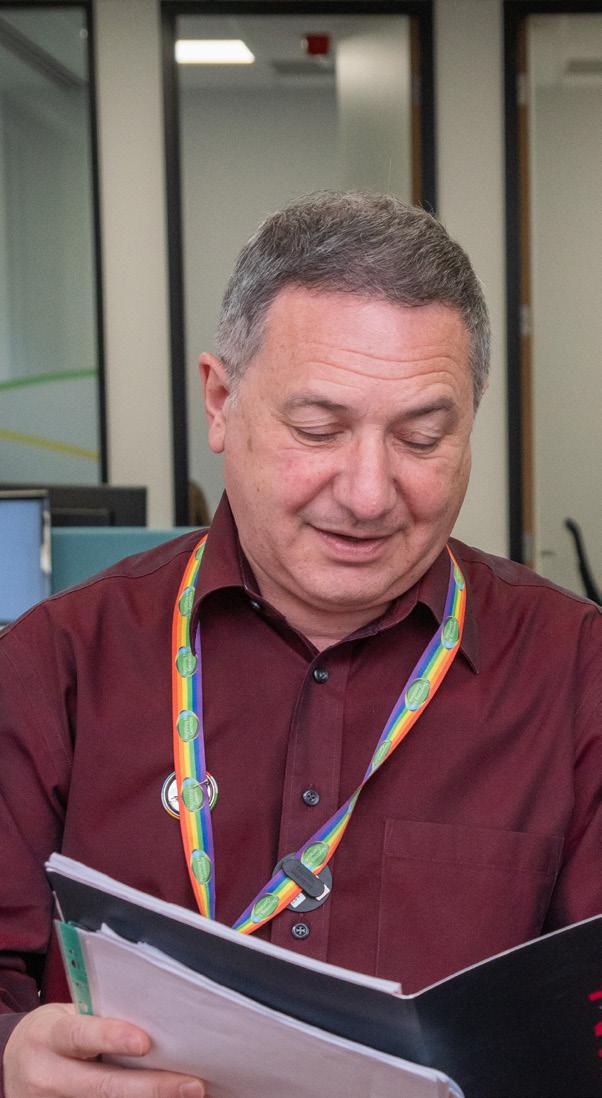
was seen as a cost centre rather than as a value centre.”
Today, however, the NHG team is firmly behind transformational tech in achieving its strategy, meaning that there’s “a digital element to all business plans, which has had a knock-on effect”.
“These are things that, generally, a typical housing association wouldn't be doing but we have done. Now, it seems like everybody else is looking to do the same things themselves.”

Peter operates with a ‘why rediscover and reinvent the wheel when you can collaborate?’ mentality, which feeds directly into the decision to form a commercial arm that focuses on the dissemination of technology-based innovations.
“As a sector, we’ll all benefit a lot more by collaborating. Everybody's starting to recognise that technology is expensive and complicated, so trying to do this alone is probably not sustainable. The idea behind this new company is that we will all pull in and share technology from a single place.”
A big driver of Peter’s is the notion of “getting the basics right” – do this, and the rest is much easier. In 2018, when the merger to form NHG occurred, a major concern all round was fundamental operationality. How could the new association serve residents effectively if it didn’t have the right tools, systems or functionality?
“We had over 200 disparate systems, each kind of doing the job but not efficiently. It was probably very good in the early 2000s, but it’s not what we expect today” he laughs. “My main strategy was to bring everything together as much as possible in one ecosystem. And we have literally just finished that mission, the last part of which was to move everything into the cloud.”
“I wanted the same simplicity and intuitiveness integrated into platforms such as Netflix”
NHG envisioned the type of “simplicity and intuitiveness integrated into platforms such as Netflix”. As such, they were initially on the hunt to buy such software, before realising that nothing of that ilk existed for the housing sector – they would have to build it themselves.
Bringing together and centralising systems of information into one, easy-to-access platform, Workwise reduces the amount of labour on the part of both staff and residents. The proprietary platform automates the allocation of different information while also providing tenants with a space to log issues and speak to their named contact, who will automatically be able to see any and all changes, conversations, and actions being taken in one location.

“Being in one ecosystem really helps us simplify some of those issues, making our environment much more secure at the same time as opening it up to the people that need it – like our local officers, who need that information out in the field,” says Peter.
Now that Workwise is in place, the organisation can focus on providing “a seamless, reliable, and more responsive service” for the residents it serves to generate “richer conversations and richer experiences”.
Transforming Notting Hill Genesis team into ‘changemakers’ Achieving a seamless service for residents has meant quite a lot of investment in change, both financially and culturally, since
starting the digital transformation process, “with unity a thread running through”.
Throughout this five-year process, Peter has been responsible for bringing teams together, “connecting, integrating and aligning tech with policies and staff culture”, and altering the perception of technology, while also training and supporting his tech team to become “changemakers”.
“They feel empowered. They feel a lot more confident than they were before,” Peter says with pride. “And to give you an example, when I first came in, I saw that one of the applications didn’t have basic security, so I showed them how to switch it in.
“But then, three weeks later, I went back and saw they hadn’t changed it. When I asked why, the response was that, as we didn't
make the software, a request had to be put in for the creators to make that change and then we just had to wait. The team didn’t believe they could do it themselves; they didn't feel like they were the changemakers, but the people in the middle who were not empowered to make that change.
“Now it's not a problem, they're doing much more complicated things and telling everybody else what they should be doing. It's been very transformational,” Peter explains.
As a result of this newfound confidence and feeling of empowerment among the tech team, the entire NHG workforce has embraced the role of changemaker – and this has fed into the organisation’s overall focus on customer centrality alongside a more proactive, hands-on approach.

“With our residents, you've got the homes and then you've got the local area, the community, the environment – all the things around those homes. We have to make sure that it looks appealing, that there are the amenities they need and space for them to socialise.

“At the moment, we have started a pilot that’s looking at all the void and vacant homes, getting them to a higher standard and saying, ‘This is the new standard’.
“Then for the communities themselves, we are doing work where we’re going to these estates, visually looking at the state of them and improving them. We've also got social organisations coming into those spaces and making them much more useful for the residents.
“Pretty much every month, if not more than once a month, the Executive Team spends at least half a day there listening to the residents, but also visually looking at the area and assessing whether we’d live there, and how we’d feel if we did. The CEO is the driver for this, and we’ve found it’s definitely helped.”
• Customer centrality - placing residents at the heart of everything
• Quality of homes - providing the best homes possible and increasing the quality benchmarks
• Customer experience - responsive, hands-on and comprehensive service
Looking to the future – data, democracy and collaboration
After an intense period of change, Peter is looking forward to seeing the fruits of his and his team’s labour in the lives of the people they serve, while avidly watching the future path of technology.
“It's been quite a heavy three or four years for us with the merger and integration, as well as the massive rush of programmes of work. Last year, we had around 70 projects and we completed 40 of them – some of which were pretty huge,” he says.
Next on the agenda is the sharing of Workwise among the housing community to create “one ecosystem for housing built on universal tech” – and this heavily involves the new commercial arm of the organisation. Data is also a core consideration of the future, alongside continued investment in housing projects.
“Now, we’re looking towards the data side. I want data to be done in the same way as we’ve done Workwise, available everywhere to everyone and to be a part of my team’s day-to-day decisions, which is not quite where it is currently. So that means not just investing in the technology, but also in education and training to build understanding around why we need to do these things to deliver a better service.”
Going on to discuss trends in tech, Peter highlights the security-related pitfalls of prolific data use. “I think cybersecurity is definitely a trend. We’ve seen organisations crippled when they’ve experienced cyber attacks.
“It becomes a different ball game when you start getting IoT devices and sensors in buildings collecting data. Data sets would be huge in terms of scale and there will be more places where you're vulnerable to being attacked, so how are we going to deal with that? How are we going to consider security as part of that?”

Peter also anticipates that the influx of younger generations of workers is going to elicit “different demands” as a result of a more focused education that encourages “specialisation over broad knowledge”. Combined with a move towards hybridworking, he believes that “management will need to adapt and compromise” to accommodate this next wave of employees.
While the near-future may be uncertain, there’s one thing of which Rajiv Peter is certain.
“The next few years are going to be revolutionary.”
“As a sector, we will all benefit a lot more by collaborating”


We look at 10 of the most influential Chief Digital Officers who are driving digital transformation and promoting digital strategies at their organisations
Dubbed “transformers in chief” by McKinsey, Chief Digital Officers are tasked with integrating digital into all aspects of the business, helping organisations drive growth through digital transformation and seizing opportunities of emerging digital technologies.
And, with 69% of boards having ramped up digital business initiatives in response to the disruption caused by the COVID-19 pandemic, for many organisations the role of the CDO with their data and analytics skills has never been more important.
Here, we look at 10 of the most influential CDOs who are driving their organisation's digital strategy.
As Global Chief Operations Officer and Chief Digital Transformation Officer, Moti Gyamlani is responsible for a number of support functions at Ericsson.



Before joining the organisation, he held a number of leadership roles at Airtel as well as board roles with e-Mobility Solutions and Indus Towers.
Gyamlani completed Executive Development Programs at Harvard Business School and holds an MBA from Thunderbird School of Global Management, Arizona State University, and a Bachelor of Mechanical Engineering from MIT, India.
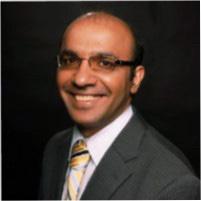 Bedi
Bedi
Chris Bedi joined ServiceNow in September 2015 and serves as the Chief Digital Information Officer. A firm believer in the role of IT as an innovator, he is a successful leader with a range of experience in IT, professional services, corporate development and HR. Prior to joining ServiceNow, he served as CIO of communications equipment company JDSU and held executive positions at VeriSign. He began his career at KPMG Consulting and holds a Bachelor’s degree in computer engineering.
Alan Triggs is responsible for Nokia’s IT and digitisation initiatives globally. In this role, he covers infrastructure for enterprise computing, networking, end-user services, and enterprise applications.

Currently based out of Finland, he is responsible for a number of digital transformation initiatives including a company-wide cloud transformation, the modernisation of core application systems, and the corporate data strategy.
Alan has held a number of leadership roles and has lived and worked in seven countries across Africa, Europe and the US.
Manish TomarAs Chief Information & Digital Officer at KPMG, Manish Tomar works to accelerate and enable adoption of digital technology to drive transformation across the organisation, deploying a multicloud ecosystem and rationalising KPMG’s application portfolio.
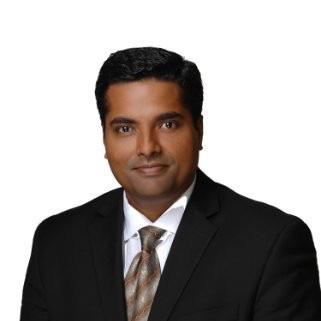
He previously served as Chief Information Officer at Grant Thornton LLP, accumulating 20 years of business and IT leadership experience. Tomar has a Master’s degree in business administration, a Bachelor’s degree in computer engineering, and is a graduate of Cornell University’s executive leadership programme.

“Manish Tomar works to accelerate and enable adoption of digital technology to drive transformation across the organisation”

The e2open connected supply chain platform provides the end-to-end visibility and collaboration you need to tackle unpredictability. Build trust and confidence with your channel, supply, logistics, and global trade partners. Take control of supply constraints through direct procurement and meet customer commitments in the face of disruptions and scarcity.
The connected supply chain. Moving as one™. www.e2open.com
E2open and the e2open logo are registered trademarks of e2open, LLC, or its affiliates.
Florian Roth has worked for SAP for the last 17 years, where he is responsible for the software development leader’s IT strategy and its execution, with a focus on deploying technological innovation and accelerating SAP’s cloud transformation.



Roth joined SAP in 2005, holding various executive and leadership positions across finance, service and support, and global business operations departments prior to his appointment at SAP. He is also a frequent keynote speaker and active advisor to political institutions.
As the Chief Digital Officer of BlackRock, Nilanjan Adhya collaborates with various teams to reimagine all aspects of digital experiences, create new digital innovations and accelerate transformation across the digital ecosystem.
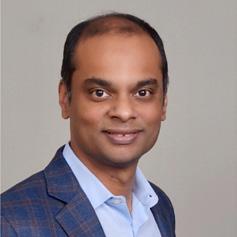
He has over 20 years of experience working at the intersection of technology, platforms, and people to help global organisations leverage new business models and drive growth.
Prior to BlackRock, he was the Chief Digital Officer of IBM’s Cognitive Applications Unit and Vice President of Digital Transformation.
Jen Felch drives the strategy, direction and delivery for Dell while also leading the transformation and adoption of digital technologies across the organisation.

Before joining Dell, she held a variety of engineering and leadership roles at Boeing, Parametric Technology Corporation and a collection of software startups.
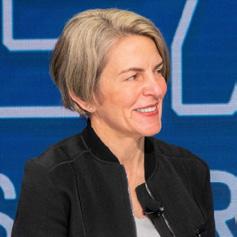
Felch has both a Bachelor’s and Master’s degree in Mechanical Engineering from MIT and is an alumnus of the Leaders for Global Operations Program at MIT –where she earned her MBA and Master of Computer Science.
A savvy, accomplished, business and technology leader, Leo Jiang is highly regarded for leveraging design thinking and innovation to drive record-breaking growth for global multinational companies including BT, Orange Business Services, and Vodafone, prior to joining Huawei.
A columnist for medium.com –a startup and data-driven investor – Jiang is sought as a corporate entrepreneur, and his key remit at Huawei is to build out Huawei startup ecosystems globally under the brand of Huawei Spark.
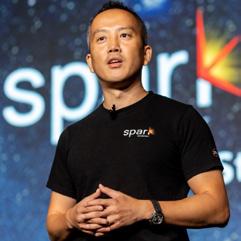
“ Felch has both a Bachelor’s and Master’s degree in Mechanical Engineering from MIT”
A systems engineer by training, Previn joined Cisco as Chief Digital Officer where he focuses on improving the workforce experience for Cisco employees.

Prior to joining Cisco, Previn served as IBM’s global CIO for four years, where he led a global team of over 12,000 IT professionals providing secure, global IT, at scale. He has cultivated a reputation for building design-led IT teams and prioritising the user experience, and has extensive experience reinventing desktop computing environments, creating industry-leading solutions for sellers and mobility programs, transforming IT infrastructure, and delivering productivity tools and Agile transformation.
Previn holds Microsoft and Cisco certifications, and while in college worked as an intern at the David Letterman show as well as the Conan O’Brien show.





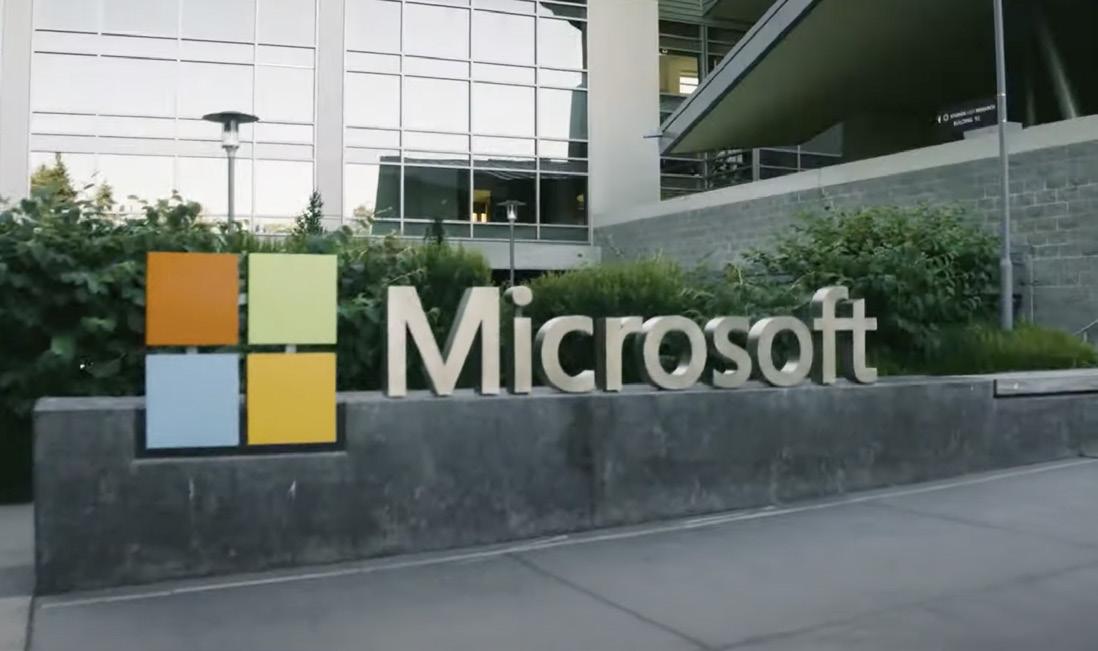
Born in London, Wright’s career has spanned both the United States and the United Kingdom, including roles as Chief Information Officer at BP and GE.
She took a secondment from Microsoft in 2017 and worked for two years as Chief Digital Officer (CDO) for the UK government's tax and customs department, overseeing the agency's digital transformation and efforts to simplify tax collection, before rejoining Microsoft in 2019 as its CDO.

As a leader in technology, she uses her broad platform to drive thought leadership – not just for the positive impact of digital transformation for business, but also for social, economic and environmental change.
Widely recognised for her work in advancing diversity in technology, in 2021, she was named the United Kingdom's most influential Black person, topping an esteemed list including Manchester United footballer Marcus Rashford, Netflix vice president Anne Mensah, and Oscar-winning actor Daniel Kaluuya.

 WRITTEN BY: GEORGE HOPKIN
PRODUCED BY: KRIS PALMER
WRITTEN BY: GEORGE HOPKIN
PRODUCED BY: KRIS PALMER


With well over a quarter of a billion residents and a capital city housing more people than London, Indonesia is a market primed for rideshare startups. These new arrivals are, however, overshadowed by one company that’s been instrumental to the nation’s development, synonymous with both taxicabs and technology.
Jakarta-based Bluebird Group celebrates 50 years in business this year. Beginning life as a startup in 1972, founder Mutiara Djokosoetono had a specific vision from the outset: to generate a culture that would fully embrace technology.
The company can point to a number of historic firsts – in the 1970s, Bluebird Group was the first transport provider with a call centre in Jakarta. And, making use of one of the earliest mobile tech platforms, the Group worked with BlackBerry’s parent company, Research in Motion, in 1997 to allow people to call for transport using the handset as a data device, rather than simply phoning in the call.
Today in 2022, the company is continuing this technological journey and heading off competition from more recent startup rideshare companies.
“We are a provider of taxi services, above all, so we make sure the clients receive a privileged service,” explains Andoko Wicaksono, CIO of Bluebird Group. “This starts with the ease of ordering a taxi, the promptness and cleanliness of the car, the courtesy of the drivers when they greet the customer, and more.
“In Indonesia, we are very famous on that front – for clean, honest and high-level service.”

Bluebird Group, explains how 50 years of technology built a world-class business

Bluebird Group puts people first with technology Wicaksono explains that Bluebird's modernisation plans place people firmly at the forefront. With more than 20,000 vehicles and drivers working for the company – in addition to millions of customers – people are an important part of its continued success.

“We are also committed to being secure by design; we’re always thinking about security, how it’s done, and how it works with policies and controls,” says Wicaksono. “Furthermore, we’re agile and committed to continuous improvement. We need to maintain the investment in our people, and the team has to embrace the job.”
Placing trust and reliability at the centre of Bluebird Group’s transformational plans, though, presents a challenge: finding the right balance between customer integrity and providing the best possible services.
“People should be able to trust us to handle their data in a secure manner,” says Wicaksono. “For example, when you submit data on our website or in our apps, we should handle the data correctly and not share it; if we move the data from different environments, we have to be secure.”
Bluebird Group already utilises cloud platforms for data storage, but it also has 40 physical sites across Indonesia that must be networked into the company in a secure manner.
“As you can imagine, there are a lot of challenges in managing communications between the sites – particularly the remote sites where communications' systems might not be as advanced as in Java,” explains Wicaksono. “So the priority is still security, even though we may sacrifice, for example, speed. But that isn’t that much of a sacrifice, as the infrastructure is improving.”
A passion for programming drives technology ambitions Wicaksono hails from a technology background – he co-founded London-based Switchlab, which focused on the R&D aspect of telecom technology, then went on to take a range of influential CIO
“All our taxis are equipped with IoT devices which, for example, monitor the fatigue of the driver”
ANDOKO WICAKSONO CIO, BLUEBIRD GROUP
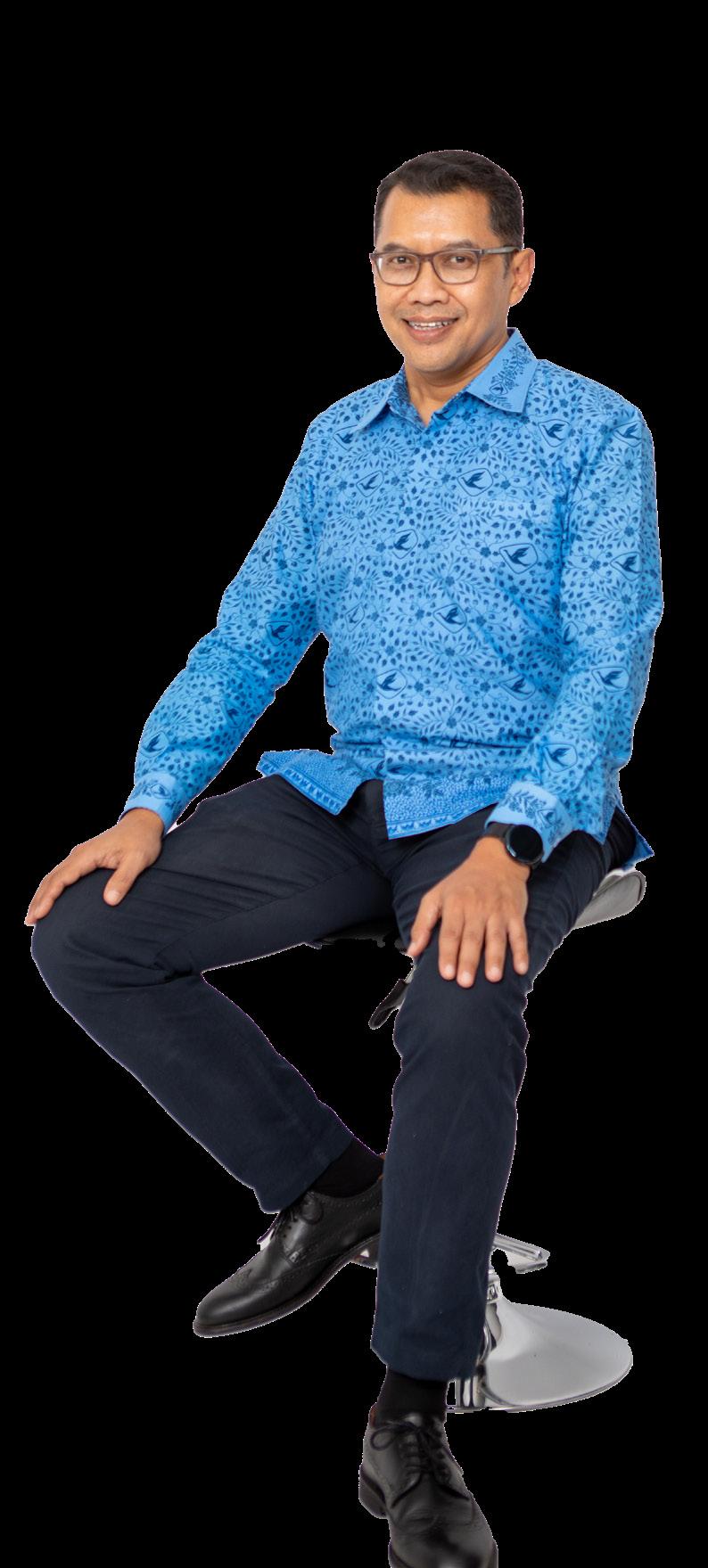
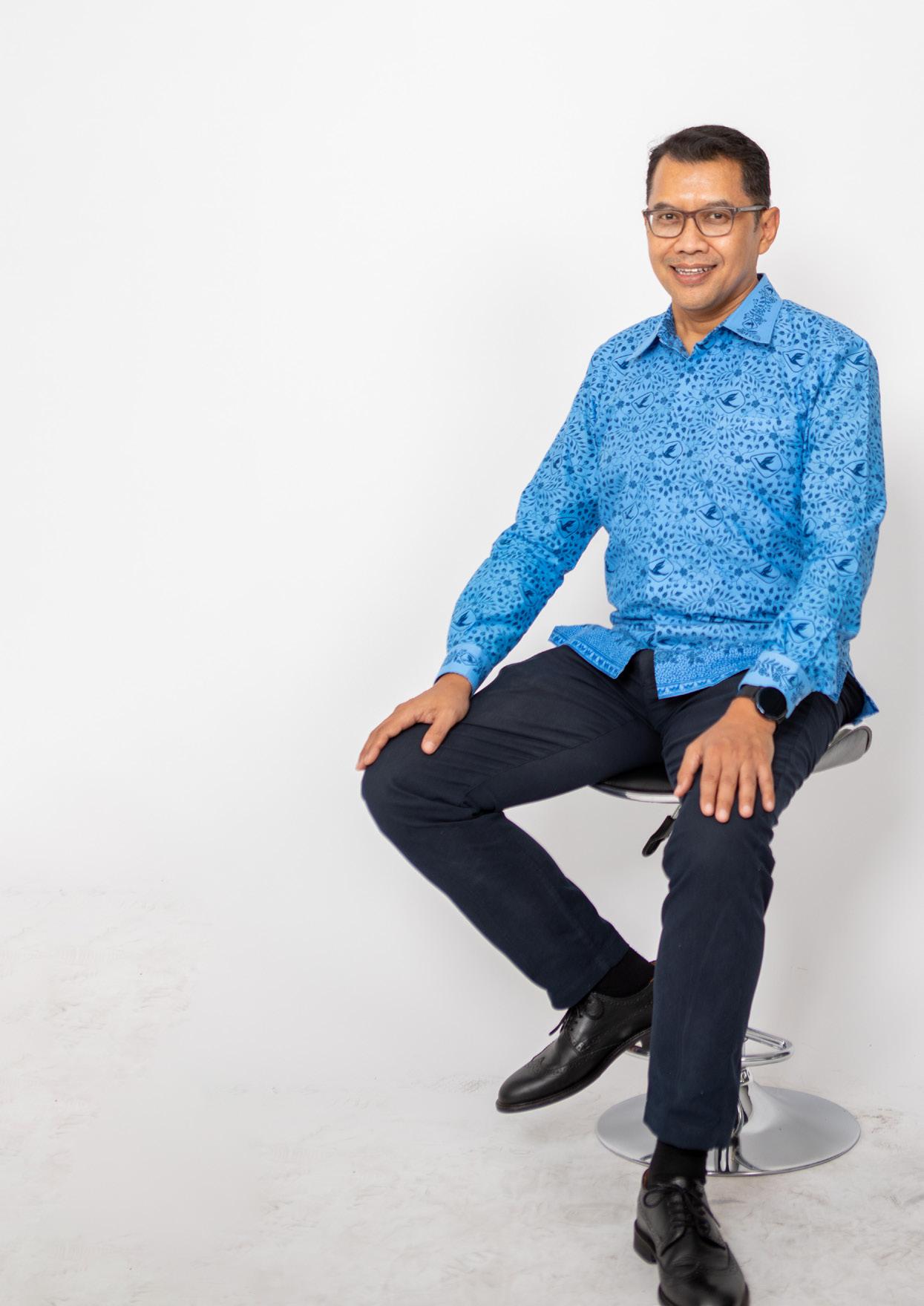
LOCATION: INDONESIA
PT Bluebird Tbk. (IDX: “BIRD”) is a public company in the field of passenger transportation and land transportation services which has 17 subsidiaries spread across 18 locations in Indonesia (Jadetabek, Cilegon, Medan, Manado, Bandung, Palembang, Padang, Pangkalpinang, Batam, Bali, Lombok , Semarang, Surabaya, Pekanbaru, Makassar, Balikpapan, Solo and Yogyakarta).
Bluebird is committed to providing safe, reliable and comfortable land transportation services with easy access for customers. The company's extensive distribution network includes more than 600 exclusive points in hotels, malls, central hubs, as well as a bold range of reservation channels. The expansion of accessibility is increasing with the presence of the MyBluebird application, which now has 20 new features and various transaction methods to support the ease and convenience of mobility.
Bluebird's business spans across several main pillars including regular taxi services (under the “Bluebird” and “Pusaka” brands); executive taxi service (under the “Silver Bird” brand); limousine and car rental services (under the “Golden Bird” brand); bus rental services (under the “Big Bird” brand); logistics services (under the brand “Bluebird Kirim”); shuttle service (under the brand “CitiTrans”) PT Bluebird Tbk. has been listed on the Indonesia Stock Exchange since November 5, 2014.

and CTO roles in telecom companies and startups, before joining Bluebird Group in June 2022.
And his love for technology extends beyond the office, as Wicaksono has built his very own home IT lab to test hardware and software, while having fun at the same time.
“I have a passion for robotics, so I have a number of small robots at home,” grins Wicaksono. “I also have a passion for programming on Python, so I have some Raspberry Pis to help with home automation.”
While the home lab initially grew out of Wicaksono’s curiosity about tech hardware and software, he found that it also helped to effortlessly maintain his excitement for programming and coding, despite the considerable demands on his time from other business areas.
“But family and friends don’t go in my lab,” says Wicaksono with another smile. “It’s my den.”
During a storied career, he’s faced his fair share of challenges – but one of the most significant came when he was compelled to understand a great deal more about the business processes required to keep a company on the road to growth.
“It’s always changing, always evolving,” says Wicaksono. “I’ve watched the process of seeing simple ideas grow into a sustainable business. Every day is different, and it’s a constant adventure.”
Wicaksono describes his leadership style as direct, leading by example; so, while he confidently delegates tasks for greater corporate efficiency, he still takes the time to lead projects in a hands-on way to inspire his team.
“For example, we had an emergency situation where our taxi dispatch system went down at three in the morning,” explains Wicaksono. “I quickly jumped on a conference call with the senior management team to discover the progress, then passed on the
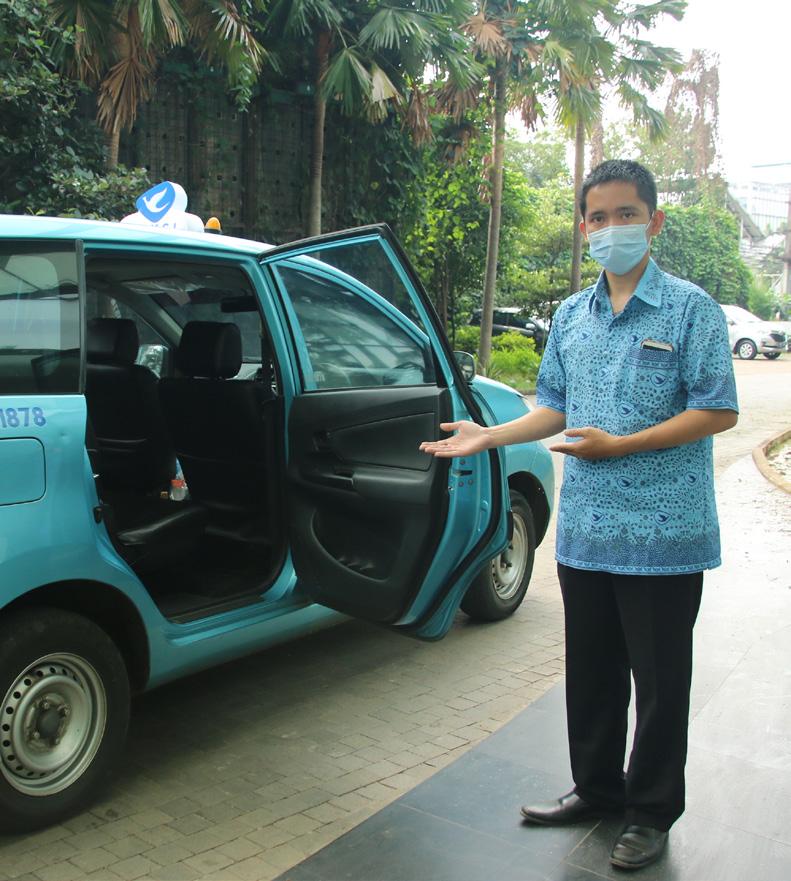
ANDOKO WICAKSONO CIO, BLUEBIRD GROUP
“In Indonesia, we are very famous on that front – for clean, honest and high-level service”
information to stakeholders and customers. When my team saw me working hard to fix this, it made them realise the importance of working hard on all of these issues.”
The challenges of taking tech into the boardroom
While Wicaksono may spend a lot more time in the boardroom than he did previously, he remains excited about technology and strongly believes it offers the solutions required by businesses looking to compete, survive and thrive.
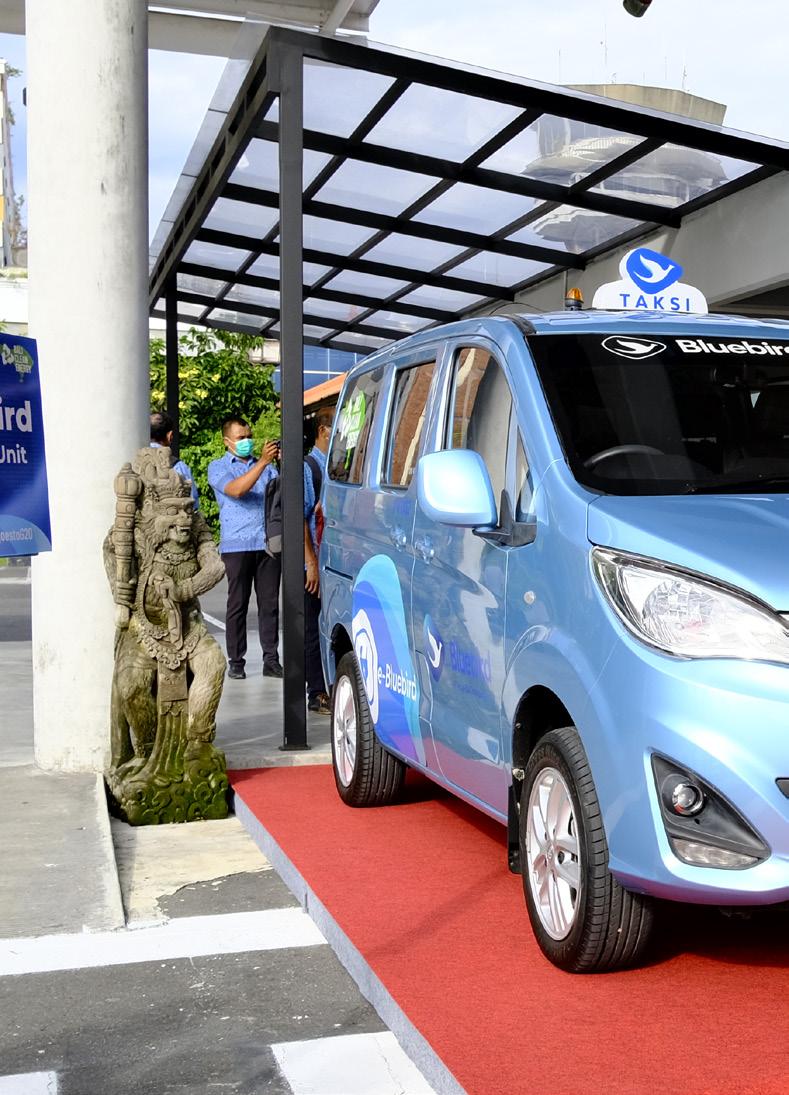
“AI and automation are liberating employees to perform higher-value tasks than before, which means a company can become more strategic, more creative and identify more ways to meet business goals,” explains Wicaksono.
“If you have some tasks that are freed up by using AI, people can be more creative via increased strategic tasks, rather than the routine tasks that will have been replaced by AI.”
But it’s not just employees who need to learn to love technology, says Wicaksono, considering it a worthy goal to ensure C-suite executives also know the important details of complex technologies.
“The ability to demystify technology is, I think, crucial for a CIO,” he states. “I must demystify the subject for other leaders to make sure that the business becomes a catalyst for tech adoption.”
This is important because more IT decisions are being made by business executives, rather than the IT department that may have had that responsibility in
ANDOKO WICAKSONO CIO, BLUEBIRD GROUP
“We are also committed to being secure by design; we’re always thinking about security”
the past. It’s right that IT purchases are made with business goals in mind, but these executives need to understand the technologies to be able to apply this to the right tasks and business processes.
“For example, a decision to have a CRM is not made by the IT team but, more often, by the marketing team,” says Wicaksono. “And I think this is a very good thing – now, we understand more about our customers. The employee at the front of the business is a leader of the business in their department and is unlikely to be part of the IT team.”
points of vulnerability, cybersecurity is a fundamental part of the company’s daily operations. Such measures have become a critical part of the business, preventing infiltration and data stealing from bad actors.
Other disruptive technologies – including artificial intelligence and edge computing – are being integrated into the company as and when required, according to Wicaksono.
“The exception is for the Internet of Things (IoT), which we implemented years ago,” he explains. “All our taxis are equipped with IoT devices that, for example, monitor the fatigue of the driver; if a driver shows fatigue, we can see that to then alert both the driver and the system itself, allowing action to be taken.”
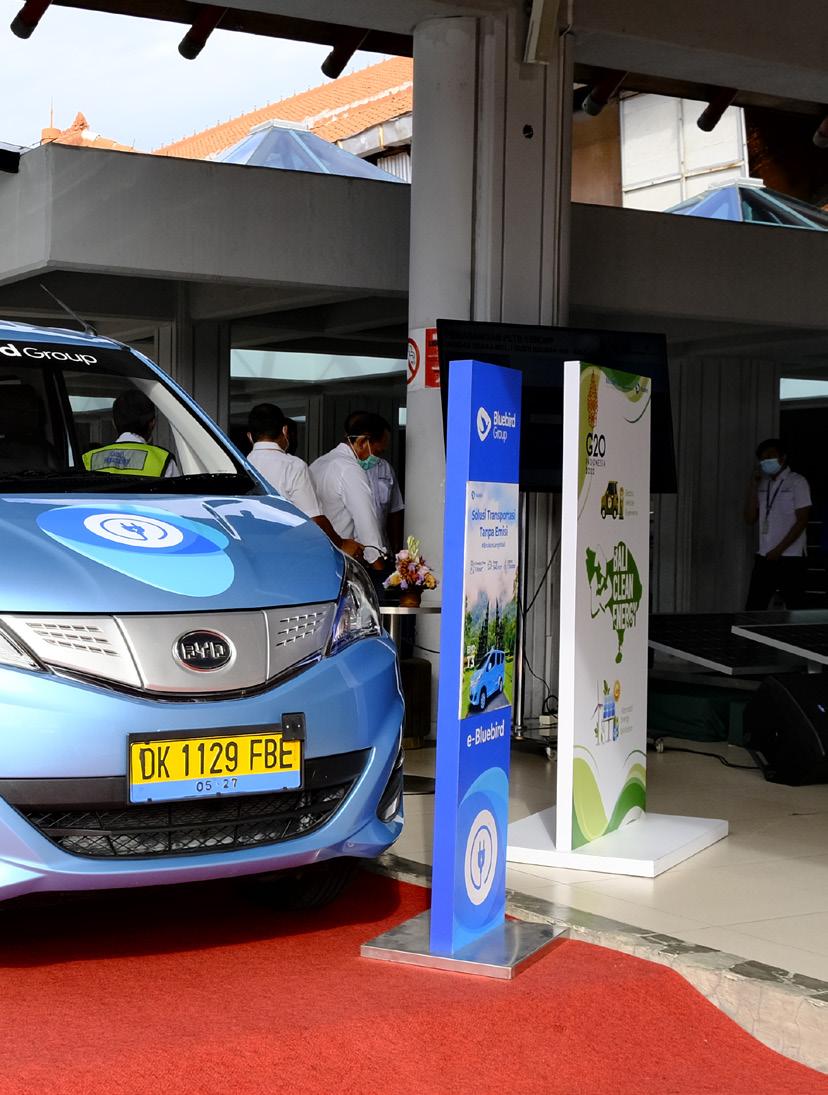
Customer expectation has never been higher in the transport and taxi sector. People are looking for personalised services alongside the ability to make bookings without speaking to a human support worker.
“One of the clearest advantages of digitisation that we’ve been able to implement are robust digital tools and strategies – and this will lead directly to increased customer satisfaction,” explains Wicaksono.
Bluebird Group engages with a range of partners in marketing, distribution and technology to aid in its mission. Technology transformation presents a new challenge: combining these multiple elements and the unavoidable complexity that results.
“It’s the end of the ‘one-stop shop’,” says Wicaksono. “One of the most important trends is to have specialties. Our preference is for partners that have a speciality in their own domain.”
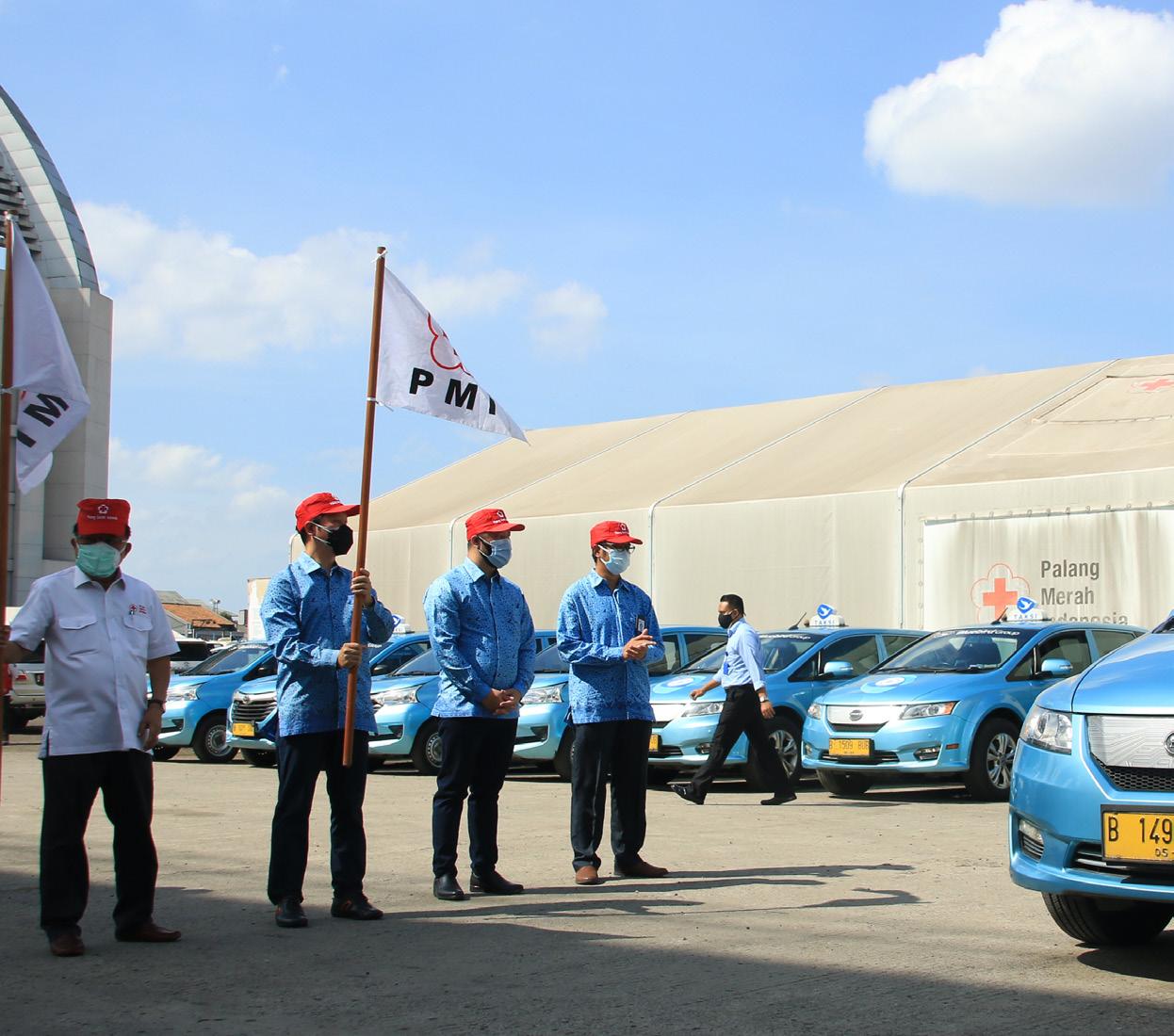
 ANDOKO WICAKSONO CIO, BLUEBIRD GROUP
ANDOKO WICAKSONO CIO, BLUEBIRD GROUP
“I’ve watched the process of seeing simple ideas grow into a sustainable business. Every day is different”
Andoko Wicaksono, CIO of Bluebird Group, on transport technology
BlackBerry’s AI software keeps malware at bay Bluebird Group knows the leading-edge security features in BlackBerrys’ mobile platform from the time they implemented Indonesia’s first taxi reservation BlackBerry app in 2011. Bluebird Group has continued this relationship, working with the Canadabased technology provider to combat cyber threats. “We are leveraging BlackBerry’s AI software to protect against and prevent malware, using enforcement of device policy,” says Wicaksono. “BlackBerry is a very valuable partner and gives us peace of mind while conducting business.
The next 12-18 months are going to present challenges – some of which will also be seen across various industries around the world, while others will be unique to the company or industry’s geographic focus.
“Here in Indonesia, we have new competition in terms of mobility and ridehailing,” he says. “There are newcomers here already; more will arrive in the next year and a half. But we already have a very strong foundation, and we’re looking to innovate with disruptive technologies in the future.
“Now, we are planning the next five-10 years. We’re very satisfied with the foundation we’ve laid down, but we’re not complacent; we need to be vigilant to meet future competition in the market as well as anticipate changes to regulations by the government.”
Electric vehicles and mobility-as a-service are the future Within his role as CIO, Wicaksono is also charged with keeping a close eye on emerging trends in the industry, identifying two that are of particular interest to Bluebird Group.
“One is electric vehicles (EV) and growing demand from the public that public transport should make use of EV to reduce greenhouse gas emissions,” explains Wicaksono. “We already have some EV electric vehicles in our fleet and that number is growing.”
The second trend is servitisation, where customers pay for a service rather than buy the equipment, and this is affecting all industries – including the taxi sector.
“Increasingly, people are using what is called mobility-as-a-service (MaaS) to meet their transportation needs,” he says. “MaaS operators will be the future, and that will be the same for us.”

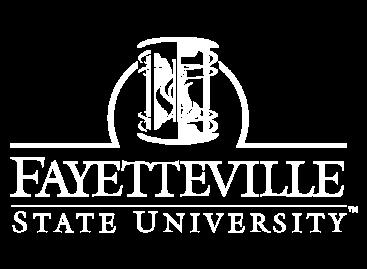
 WRITTEN BY: TOM SWALLOW
PRODUCED BY: TOM VENTURO
WRITTEN BY: TOM SWALLOW
PRODUCED BY: TOM VENTURO


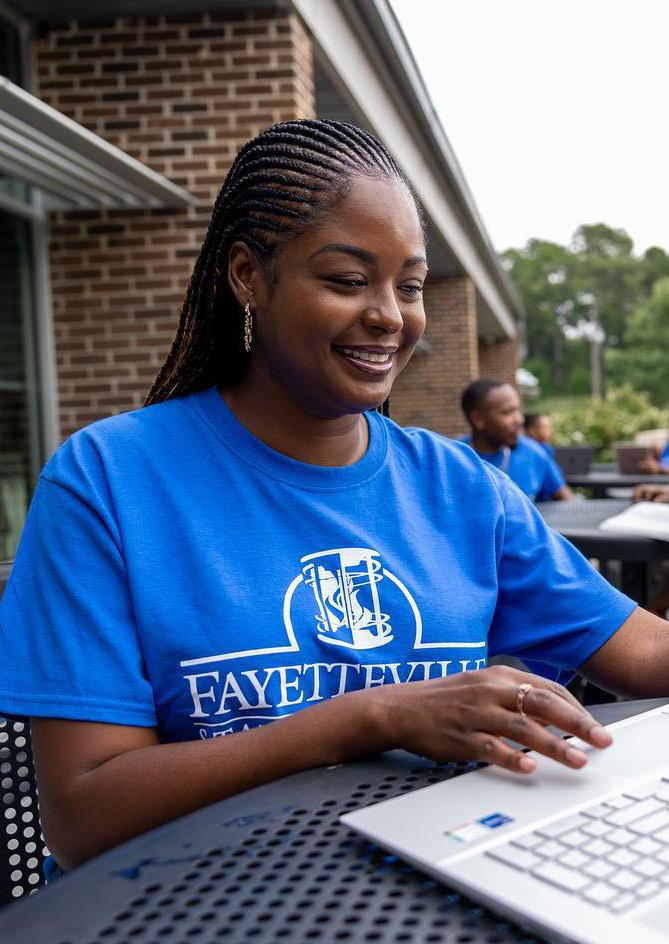
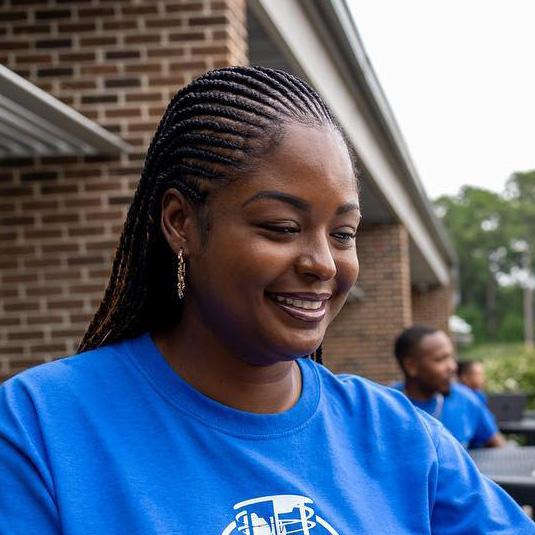
speaking, what are the main aims of a state educational institution?
Put simply by Fayetteville State University (FSU), it is to ‘provide students with the necessary education and resources to progress them into a career of their choosing’. In this day and age, the differentiating factor between adequacy and excellence among educational institutions is their ability to gain access to the right tools and services that, across any industry, enable the best possible outcomes.
FSU recognises this, striving for success on behalf of its students and driven by the passing of graduates into careers across various fields of expertise. But to achieve a higher graduate success rate requires a high level of education and a focus on applicable skills that will allow graduates to thrive in the work environment.
Not only is technology the tool that allows students to carry out their studies — particularly during times of disruption — but it equips them with a wealth of applicable digital skills, which are a basic necessity in our ever-increasing digital society.
So, who will set about procuring, testing, and rolling out digital products that enhance the student experience and set students up to prosper? As well as sharing a discussion about his time in the military, I was humbled to find out how the Vice Chancellor for Information Technology and Chief Information Officer at FSU, Dr. Hector

Dr. Hector Molina , Vice Chancellor for IT and Chief Information Officer at FSU, shares his experience transforming the institution with Adobe as its partner in digital solutions
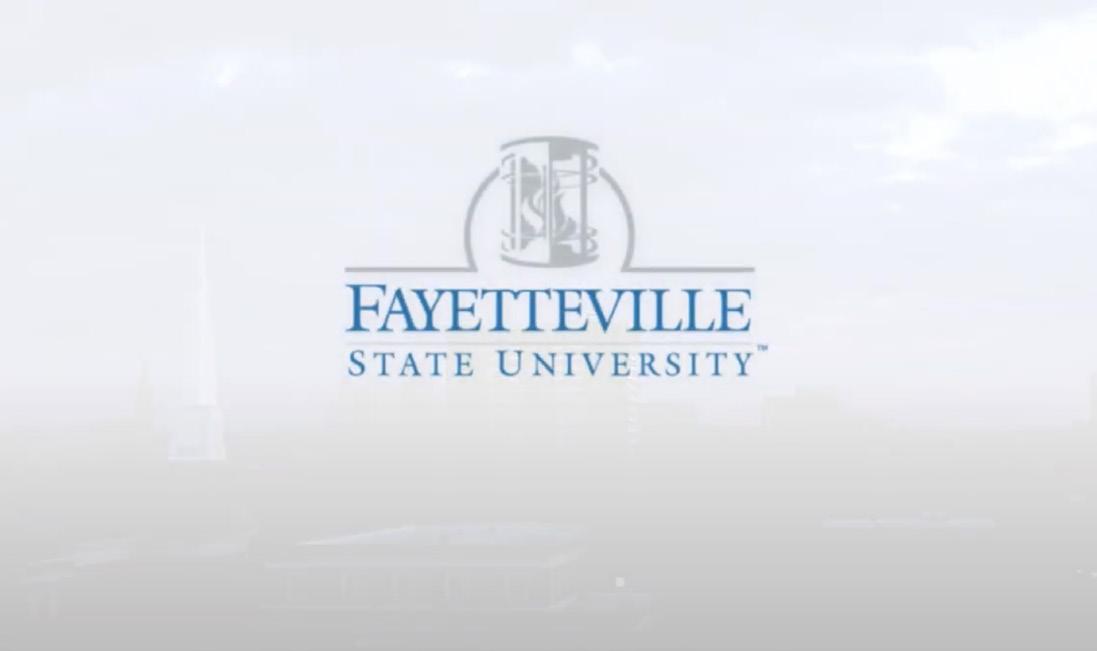 DR. HECTOR M MOLINA VICE CHANCELLOR FOR INFORMATION TECHNOLOGY AND CIO, FAYETTEVILLE STATE UNIVERSITY
DR. HECTOR M MOLINA VICE CHANCELLOR FOR INFORMATION TECHNOLOGY AND CIO, FAYETTEVILLE STATE UNIVERSITY
Molina, continues to be instrumental in facilitating the shift to digital for the benefit of the university, but, more specifically, for the students.
Since joining FSU in January 2022, Dr. Molina has welcomed the challenge of transforming the way the University operates to ensure that its student population receives excellent and equitable learning opportunities and are equipped for working life.
His first challenge as CIO was to tackle the problems arising from the COVID-19 pandemic—such as managing cybersecurity risks, ensuring student access to the right tools and technologies that facilitate student success, and the increased demand for learning resources and accessibility needs. Dr. Molina’s role at FSU makes him indirectly responsible for many of the functions both within Information Technology Services Division and across its University serving more than 6,800 students. This includes managing and updating the organisation’s digital infrastructure, securing students and professionals online, and formalising strategic partnerships to provide the right solutions for the university — not only to function, but to thrive.
Beyond the basic information technology (IT) activities, Dr. Molina explains that his role incorporates “how to strategise and help the university”.
“We’re finding that companies are coming up with creative ways to allow students to access the classroom from their living room”
LOCATION: NORTH CAROLINA, USA
EXECUTIVE BIO in both university and corporate settings, with extensive experience in project and portfolio management, instructional, and enterprise computing, as well as telecommunications. At Fayetteville State University he oversees the Information Technology Services (ITS) Division as well as sets IT direction and coordinates infrastructure and service delivery across the University. He is responsible for IT units that support enterprise applications, enterprise data, research support, teaching and learning, user support, infrastructure, communications, and information security.
Dr. Hector Molina is a visionary and goal-oriented IT leader with demonstrated experience in planning and implementing cutting edge information technology solutions to address University opportunities. Dr. Molina brings 26 years of experience in the field of information technology and has a diverse background
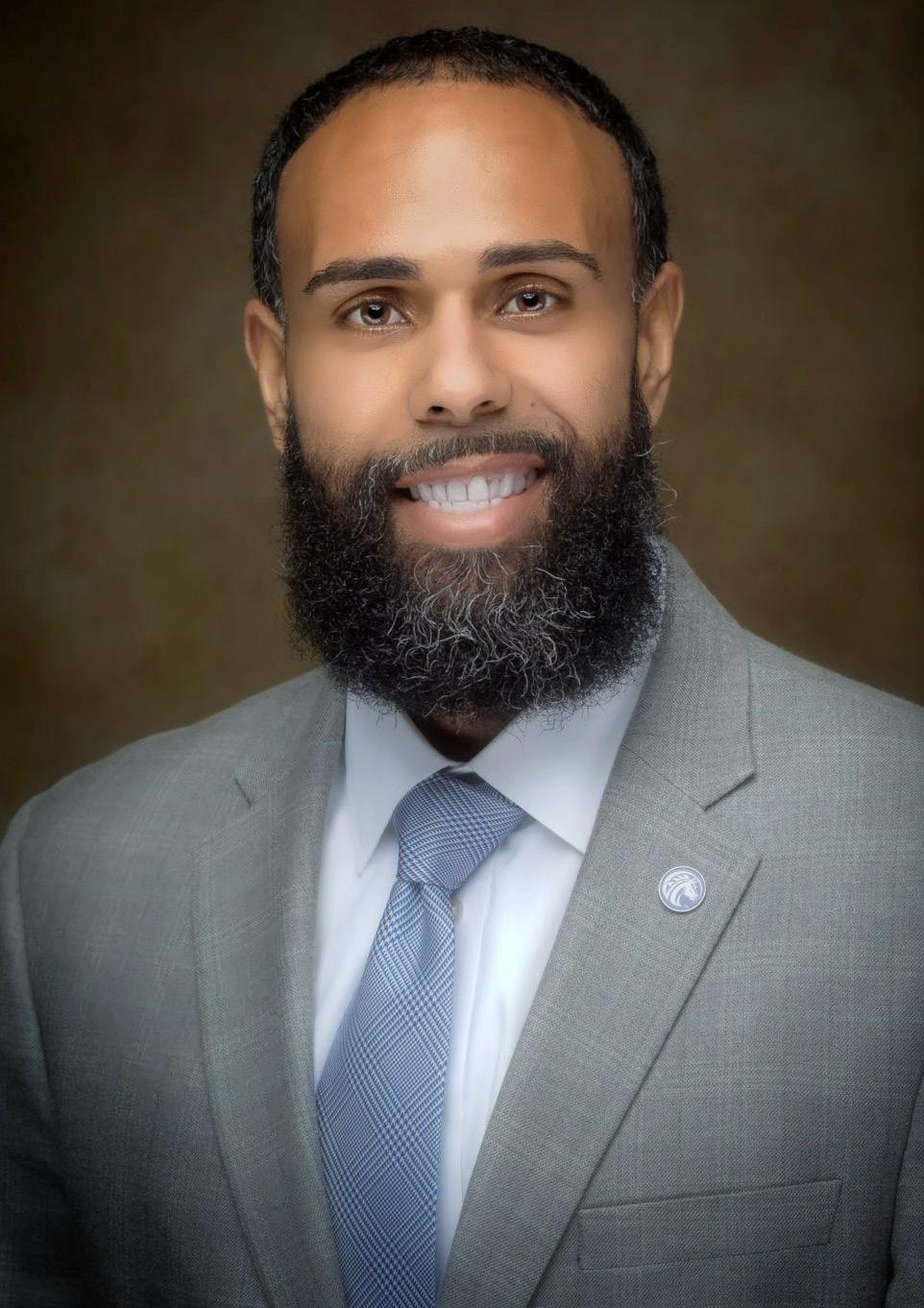




Fayetteville State University is the latest campus to join Adobe’s Creative Campus programme, which ensures students graduate equipped for a digital world.
A historically overlooked campus is the latest to benefit from an initiative from Adobe which is ensuring students graduate equipped for a digital world. Fayetteville State University (FSU) is the fourth Historically Black College and University (HBCU) to become an officially designated Adobe Creative Campus, which helps prepare students to be digital global citizens, says Todd Taylor, a Pedagogical Evangelist at Adobe.
“We know students are on their devices, and so often those things are done just for transactional purposes or entertainment purposes,” says Taylor. “The idea is that these very important technologies need to be part of the curriculum. “What Adobe allowed us to do is elevate the digital literacy of our students,” says Dr Hector Molina, Vice Chancellor for IT and CIO at FSU. “Adobe Creative Campus’ designation has really allowed us to level up what we offer our students.”
Other institutions have already embraced the benefits of the Creative Campus - and Taylor is looking forward to seeing how FSU students use the tools available. “The partnership between FSU and Adobe is just beginning and we’re off to an amazing start,” Taylor adds.
“Maybe they’re interested in career branding portfolios, or maybe they’re interested in creating media content for the metaverse. Regardless of their major, or their career path, becoming a digital communicator is something we know everyone needs in today’s economies and cultures.”
It’s an exciting time to be partnering with campuses like FSU, who realise how essential this is for their students’ progress, Taylor concludes.
“It’s great to see FSU, a historically overlooked and under-resourced campus, now get these kinds of opportunities to really create meaningful careers and pathways to careers for their students. “We have a long way to go, but this partnership between Fayetteville State and Adobe is a great place to start.”
“I really do believe that IT should be a trusted partner. I don’t think that people should look at IT as just a utility; we are really here to push the campus forward.
“My daily job is to make sure that the IT staff have what they need to be successful, but are also forward thinking about what our campus is going to need from a technology perspective,” he explains.

The keyword throughout the entire discussion is ‘success’, which is something the team has ingrained in every decision it makes on behalf of the campus. But, like many organisations over the past few years, FSU has seen shifts in the way staff and faculty desire to work and students wish to learn. Dr. Molina also explains that COVID-19 reshaped the university’s interactions with students, requiring a digital approach to delivering lectures, resources, and course delivery to allow for flexibility.
But digital learning in the eyes of FSU is no new concept. Dr. Molina explains that although COVID-19 influenced wider use of technology in education, the sentiments towards it were already there among many higher education institutions.
“We’re almost at the tail end of the pandemic, and I think it has changed students’ perception on receiving a college education,” Dr. Molina says. “We had online learning before the pandemic and a lot of universities put some emphasis on that, but it really changed. A lot of students are making their decisions based on those technology capabilities and whether a university can provide them that same experience on or off campus.”
This is where student retention comes back into the conversation, with digital adoption heralded as one of the key enablers of success in light of this trend.
Secure and inclusive access to digital Aside from this, the IT team must also take into account the issue of student retention. It’s a problem that not only plagues the university, but, more importantly, hinders the progress of potential graduates. While lecturers and professors are the first pointof-contact for alumni, without inclusive digital tools, teams are unable to deliver the curriculum in ways that cater for individuals with varying capabilities and education levels.
“A lot of our students come from Tier I or Tier II counties, which are the lower economic counties in our region. So, many students have limited skills, which could hinder their progress at college or university level,” says Dr. Molina.

“Student retention, then, is a really big deal. We have to figure out how to keep them past their freshman fall semester, right into their spring semester and onto graduation.”
This is one of many challenges that creates an exciting environment for the IT team — in the eyes of their CIO — as there are continual opportunities to develop current processes and meet the needs of an everchanging digital environment. “Finding solutions for those various problems is what excites me,” says Dr. Molina.
Strategy is where the CIO’s head operates best and, to meet the needs of such a large
“We’re almost at the tail end of the pandemic, and I think it has changed students’ perception on receiving a college education”
DR. HECTOR M MOLINA VICE CHANCELLOR FOR INFORMATION TECHNOLOGY AND CIO, FAYETTEVILLE STATE UNIVERSITY
campus, it’s crucial for Dr. Molina to understand how all activities are carried out before he can look at “how to improve our networking infrastructure, whether you’re talking about the physical wire that you plug into devices around campus or even wi-fi”.
This is where a focus on cyber threats is crucial. Dr. Molina and the team double-down on FSU’s approach to cybersecurity to ensure all devices that are used both on or off campus are secured to the best of the team’s ability. Securing the campus is only partially achieved through the intervention of the IT team; it also requires the continuous education of the campus constituents.
Other services that are generally underrated by the masses must be maintained by FSU’s IT team to the

functionality of the hybrid classroom environment. Reliable wi-fi coverage and adopting programs that are more compatible with student devices help make their education more accessible, limiting any potential challenges.
“Investing strategically in solutions that allow accessibility, regardless of where our students, faculty and staff are, allowed us to pivot pretty easily,” Dr. Molina explains.

One of the main conversations to be had — and one of the main reasons why FSU has been successful in its digital transformation — is around its partnership with Adobe, the provider of Creative Cloud solutions. While many would see Adobe Creative Cloud as a solution solely built for ‘creatives’, application of the product
range has really supported FSU’s adjustment to increased digital application. Talking to Dr. Molina on the subject, he articulates just how critical the partnership was to the formation of the university’s Creative Campus, and how the team defied convention to provide access to Adobe products to enhance student employability.
While the university itself has its own initiatives in place to provide students with programmes, such as paid internships, Adobe’s Creative Cloud helps them to develop the skills to communicate in a business environment. This, according to Dr. Molina, gives them an edge, enabling them to produce sharp, professional-looking reports, presentations and other forms of media on software that is used by professionals.
“What Adobe allowed us to do is elevate the digital literacy of our students,” says Dr. Molina. “Letting them use the tools and develop skills to create change and communicate content that’s applicable to the future, but then also applicable to the industries they’re targeting.”
“Adobe Creative Campus’ designation has really allowed us to level up what we offer our students. We’re always looking for those tools that really, no matter what discipline they’re in — whether it’s business, humanities, or nursing — they can confidently use those tools. Those skills are going to translate beyond graduation. Beyond our campus.”
The project shows the adaptability of the Adobe suite and how one of the leading software developers can mould its products to suit various applications in both professional and educational environments.
As FSU takes care of its students’ futures, the university itself will undergo a significant transformation of both its physical infrastructure and an extension of its Adobe partnership, alongside other efforts to adopt digital solutions. In summary, ensuring the background solutions are in place to meet the requirements of students in the digital age.
“We’re finding companies are coming up with creative ways to allow students to access the classroom from their living room. I expect to see this trend continue to grow. Where in the past it may have been unheard of to hone specific skills digitally, we’ll see how that evolves.”

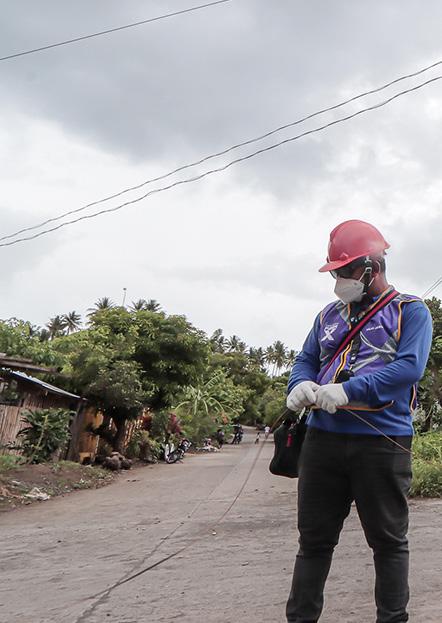 WRITTEN BY: MARCUS LAW
PRODUCED BY: JAMES BERRY
WRITTEN BY: MARCUS LAW
PRODUCED BY: JAMES BERRY


Converge has completed quite the feat. In just a few short years, it has built one of the most extensive fibre networks in the Philippines, providing a world-class digital experience for both residential and enterprise customers.
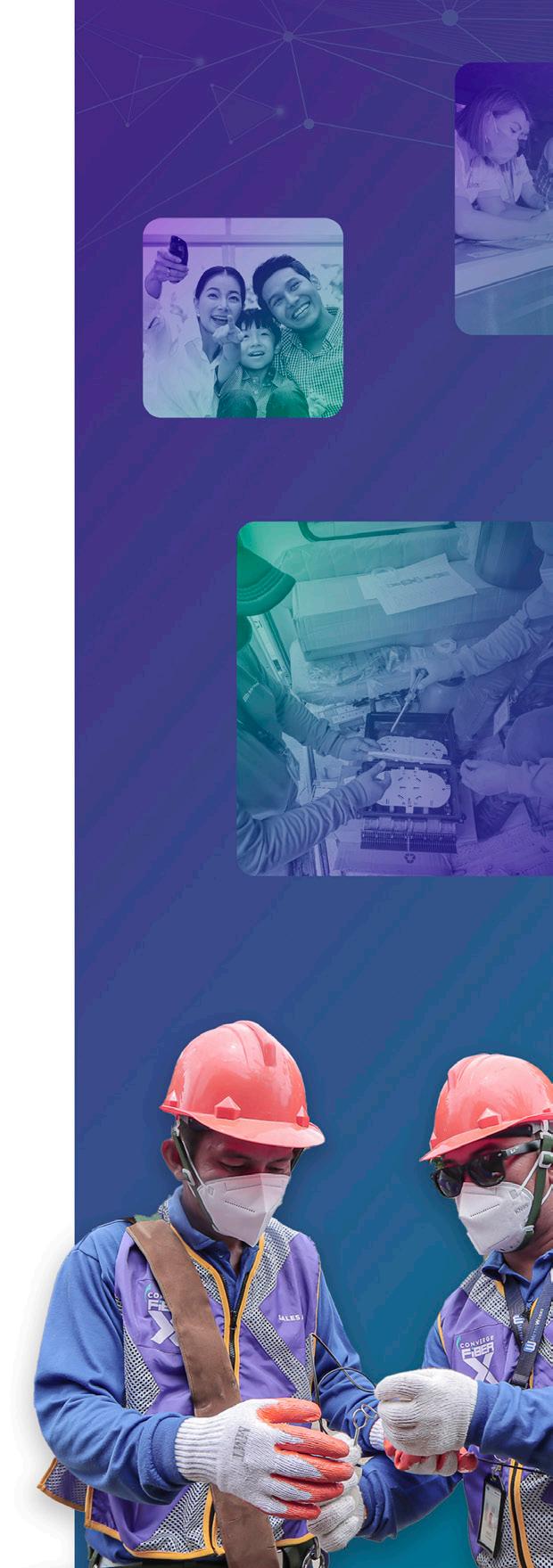
Founded by Dennis Anthony and Maria Grace Uy in 2007, Converge became the first IT solutions company to run an endto-end pure fibre internet network in the Philippines, with over 560,000km of fibre optic assets nationwide.
In a true David and Goliath story, the business has grown from operating in Pampanga to operating in nearby cities, provinces, and municipalities, to operating nationwide, and in 2020 was part of the second largest ever IPO on the Philippine Stock Exchange.
From working in his uncle’s supermarket – where he first learned about technology – and selling Betamax tapes, Converge Co-Founder and CEO Dennis Anthony Uy is now on a life-long mission to fibre power the Filipino nation.
“I migrated to the Philippines when I was very young,” he explains. “I faced many barriers; I didn’t even know how to speak or write in English or the native language.
“At a young age, I was always tinkering and repairing things like air-conditioners and refrigerators in the supermarket. There, I learned about technology. This continued all the way to my high school days when I would
Since it started rolling out its own fibre optic cable network in 2016, Converge now has one of the most extensive fibre networks in the Philippines.
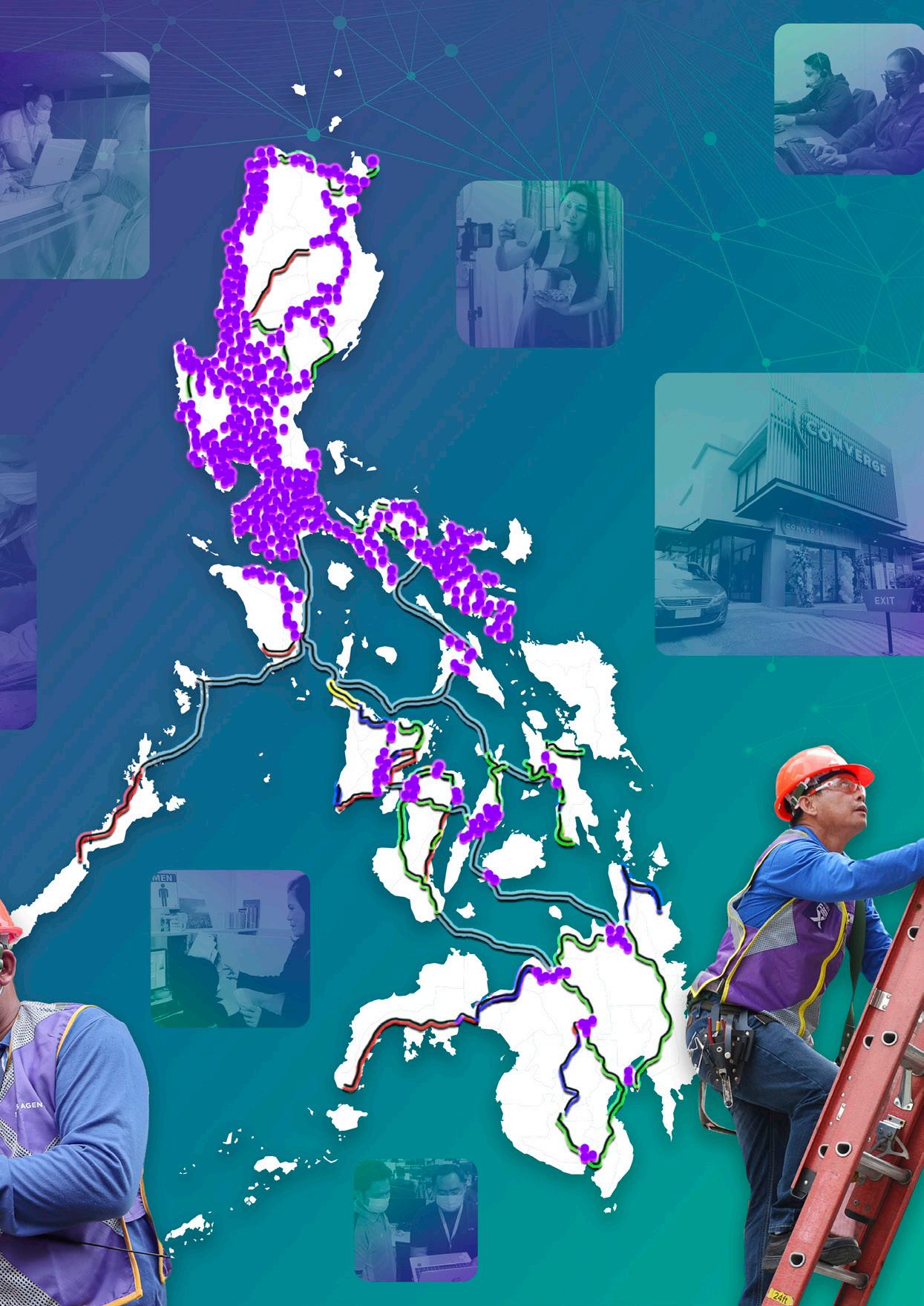
enrol in vocational courses in computers, refrigeration, and air conditioning services.”
At the same time, he was flexing his entrepreneurial chops selling and renting Betamax videos, while also selling computers.
“When cable arrived in the 1990s, I knew the Betamax era was coming to an end,” Uy says. “I sold my Betamax tapes and got into cable.”
After the Mt. Pinatubo eruption in 1991, he set up the Angeles City Cable Television Network (ACCTN). “People thought I was crazy,” says Uy. “The city and the nearby Clark Air Force Base were blanketed in thick ashfall; major bridges were destroyed, the economy collapsed, and the Americans departed.
“But I saw a business opportunity. At the same time, I felt the need to provide people with news and entertainment to lift their spirits.
“Soon, the Internet came to Pampanga. I got into prepaid and dial-up internet. Then, because I had my cable TV infrastructure
in place, I offered internet access through cable technology.
“At this point, I made the decision to stick to one type of technology, and I knew that fibre would be the best choice. Fibre is not a passing trend in technology. Even back in the 90s, I knew fibre was the future.
“In 2016, we launched Converge. The rest is history.”

Among the different types of broadband, fibre is the best-in-class option, with speed that surpasses copper and mobile technology, Uy says, and fibre-to-the-home lines coming in at 1Gbps.
“With copper technology – whether DSL or coaxial – the upload is a whole lot slower than the download, and not suited for workfrom-home that we’ve been doing a lot these days,” he adds.
“With the pandemic exposing the need for high-capacity and high-speed internet that

wireless broadband can’t meet, we launched an aggressive expansion plan and the pandemic further accelerated the demand for fibre internet.”

As the largest and fastest-growing pure-play, high-speed fixed broadband company in the Philippines, Converge dominates in a market that is severely underserved and presents a blue ocean opportunity, adds Converge Co-Founder Maria Grace Uy, who serves as the company’s President.
“We are the first to run an end-to-end pure fibre internet network in the country, providing Filipinos simple, fast, and reliable connectivity,” she says. “Aside from broadband services, Converge also offers
INDUSTRY: TELECOMMUNICATIONS
LOCATION: PHILIPPINES
As the head of one of the country's leading internet providers, Converge CEO and Co-Founder Dennis Anthony Uy's vision remains deeply rooted in serving Filipino people and making connectivity affordable and accessible for everyone.
Starting in the cable business with Angeles City Cable Television Network, Uy, alongside his wife Grace, soon began acquiring other cable TV providers in Pampanga, and evolved ComClark into Converge ICT Solutions Inc, incorporating the company in 2007.
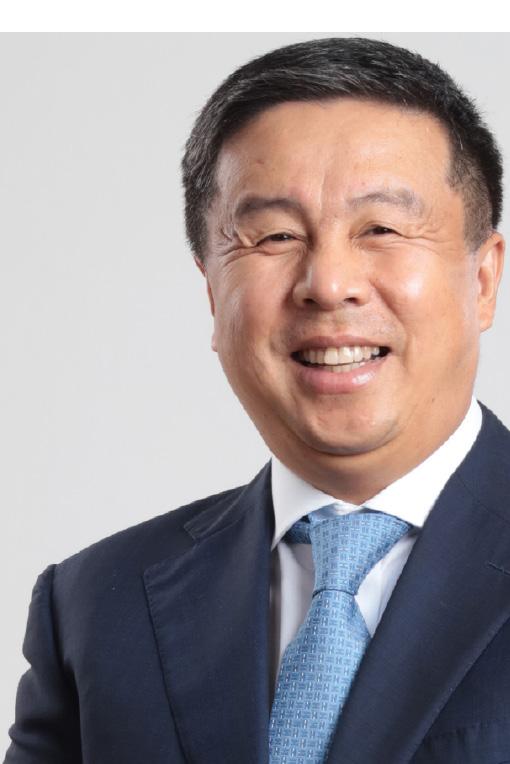 DENNIS ANTHONY UY CEO AND CO-FOUNDER, CONVERGE
DENNIS ANTHONY UY CEO AND CO-FOUNDER, CONVERGE
A game-changer and a futurist in his field, Uy has garnered the Master Entrepreneur Award at the 2020 Asia Pacific Enterprise Awards (APEA), and won Entrepreneur of the Year Award at the 11th Asia CEO Awards (ACA) that same year. In 2021, he was again awarded the Master Entrepreneur at the 2021 APEA Regional Edition, and was named among PeopleAsia Magazine’s ‘Men Who Matter’ in June 2021, recognising futureready entrepreneurs, leaders, and artists.
“
FIBRE IS NOT A PASSING TREND IN TECHNOLOGY. EVEN BACK IN THE ‘90 s , I KNEW FIBRE WAS THE FUTURE”
an integrated data centre and network solutions services.
“Converge has over 560,000km of fibre optic assets nationwide, which is one of the most extensive and newest fibre networks in the Philippines. With this fibre-powered network, Converge provides absolute premium, world-class digital experiences for both residential and enterprise customers.”

The Philippines has one of the lowest broadband penetration rates and some of the slowest internet speeds in Asia. “This is despite the fact that our population is extremely young with some of the biggest internet users in the world,” Uy states.
“Against this backdrop, we founded Converge with a simple vision in mind:
INDUSTRY: TELECOMMUNICATIONS
LOCATION: PHILIPPINES
Maria Grace Yao Uy is the Co-Founder, President, and Chief Resources Officer of Converge ICT Solutions Inc. Prior to this position, she was the Chief Financial Officer and Executive Vice President of ComClark Network and Technology Corp., and the Angeles City Cable Television Network.
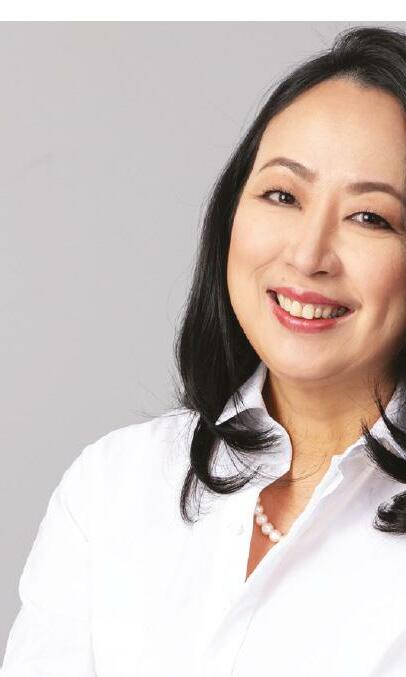
After notching the 16th place in the Certified Public Accountant (CPA)
Licensure Board Examination in 1989, Ms. Uy secured a management role at IBM Philippines. Following seven years under her belt at IBM, Ms. Uy served as CFO and VP at Savers Mall in Pampanga.
Already with a foot in the IT industry, Ms. Uy founded ComClark Network and Technology Corp. with her husband, Converge CEO Dennis Anthony Uy. Together, the couple gradually scaled up ComClark from providing cable television requirements to delivering ICT and broadcast solutions.
With ComClark having evolved into Converge ICT Solutions Inc. in 2007, Ms. Uy now leads and manages all aspects of financial planning and resource allocation as Chief Resource Officer. As President, Ms. Uy steers the overall strategic direction of the company as it progressively expands its reach into the broadband industry.
provide high-speed broadband at an affordable price point, accessible to everyone and anyone in the country,” she adds.

“We deployed over US$1bn of capital to-date to build one of the most extensive end-to-end fibre networks in the Philippines. Our network currently reaches nearly half of the households in the Philippines and serves nearly two million customers nationwide.”
In a capital-intensive business, Converge’s growth was a story of David and Goliath.
“We had to put in everything we’d built over the years, so we trusted our instincts and reinvested in the business,” Uy adds. “Each year, we slowly continued to grow from operating just in Pampanga to operating in the nearby cities, provinces and municipalities.”
The COVID-19 pandemic showed the importance of fast, reliable internet connection to many people, Uy says. “Everything happened very quickly. There was a surge in demand, so we set up additional customer service units to attend to applications and customer inquiries.
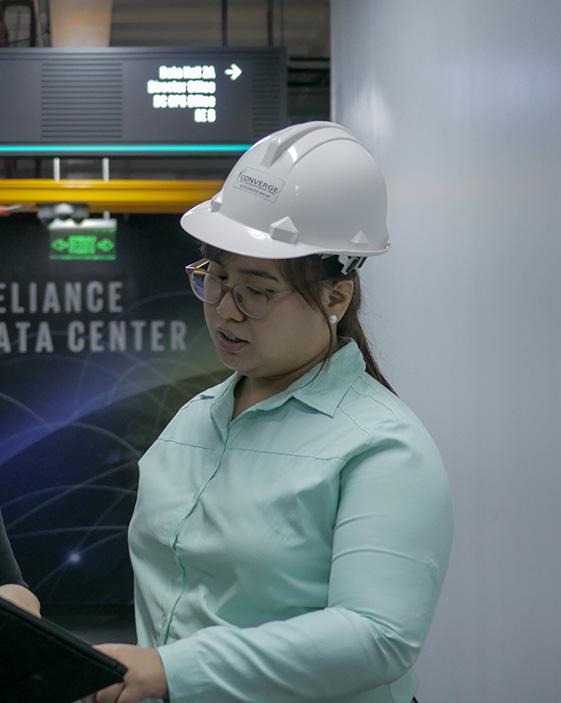
“At that time, we were also planning for an IPO,” she says. “With the tremendous growth of the business amid the pandemic, we wanted to secure our five-year capex plan.
“With the funds raised in the IPO, we were able to roll out our fibre broadband network nationwide very quickly.”
With a goal to reach the unserved and underserved, Converge ensured the network was able to reach the whole country. “We saw the tremendous demand of Filipinos quarantined at home for broadband, so we acted quickly,” explains Uy. “We wanted to connect as many people as possible in the fastest possible time.”
“WE FOUNDED CONVERGE WITH A SIMPLE VISION IN MIND: PROVIDE HIGH - SPEED BROADBAND AT AN AFFORDABLE PRICE POINT, ACCESSIBLE TO EVERYONE AND ANYONE IN THE COUNTRY”
MARIA GRACE UY CHIEF RESOURCE OFFICER, CONVERGE
In 2020, Converge embarked on a nationwide expansion of its network to make broadband available to unserved and underserved communities, completing its nationwide backbone in November 2021.
“The Philippines is an archipelago, so connecting our islands would mean a combination of subsea and terrestrial cables,” explains Jesus Romero, Converge’s Chief Operations Officer.
“The existing infrastructure back then either did not have enough capacity or was uneconomical to use. So we took a more pragmatic approach.
“No one really wants to spend billions to build another submarine cable backbone, but we did what we needed to do,” Romero says.
Access to the national fibre backbone of other players came at a cost that was higher than the acceptable threshold. As
a result, Converge had to take on the capitalintensive fibre roll-out nationwide, helping make broadband more available, and at a cost lower than alternative offerings.

“Our data shows that more than 90% of our subscribers are first-time fixed broadband postpaid users,” adds Romero. “This means that we are making fixed broadband more accessible now to people who did not have access to it before or were using alternative methods to connect to the internet.
“And now, we have completed our National Digital Highway and are present on every major island in the Philippines.”
As the new player on the block, the pressure is high to offer something different, Romero acknowledges.
“We decided early on that the network is the product,” he adds. “And that is our endto-end pure fibre network. We’re the only operator in the country that can claim that.”
“ WE ARE MAKING FIXED BROADBAND MORE ACCESSIBLE NOW TO PEOPLE WHO DID NOT HAVE ACCESS TO IT BEFORE OR WERE USING ALTERNATIVE METHODS TO CONNECT TO THE INTERNET”

Mr. Romero was appointed as Chief Operations Officer of Converge ICT Solutions Inc. in February 2016. He oversees and manages the company’s day-to-day operations, covering revenue generation, customer experience, product development, and organic growth initiatives through partnerships. Prior to joining Converge, Mr. Romero held senior leadership positions spanning all aspects of operation from Globe

Telecom, DTSI Group, ComStream Corporation and Hughes Network systems. He has led market entry, growth and transformation in the areas of Telecommunications, Systems Integration and IT services.
Mr. Romero received a Bachelor's degree in Electronics and Communications Engineering (“B.S.E.E.”) from the De La Salle University in Manila, the Philippines in 1984.
Converge has signed definitive agreements with Singapore-based Keppel Midgard Holdings Pte to participate in the BiFrost Cable System, which runs from Singapore to the United States and will boost its international bandwidth capacity. The business also boosted the international network capacity by an additional 1.3Tbps in the C2C cable system, making its submarine cable configuration fully redundant.
“Converge was the first in the industry to deploy Nx 400Gbps capacity per wavelength over its DWDM network,” says Romero. “The fibre backbone has been upgraded and we were once again the pioneer in using 800Gbps per wavelength technology, making sure transmission of data is fast and has high capacity.”

Partnering with TCS Philippines, Converge embarked on a digital transformation initiative that covered several areas in the organisation from billing, operations, finance.
“We are proud and excited to partner with Converge in their digital transformation journey,” says Shiju Varghese, Country Head, TCS Philippines. “We share their commitment to excellence and sustainability, and we are confident our deep domain knowledge, expertise in digital technologies, and portfolio of solutions in innovation and intellectual property will help Converge to transform their businesses and translate their aspirations into reality.
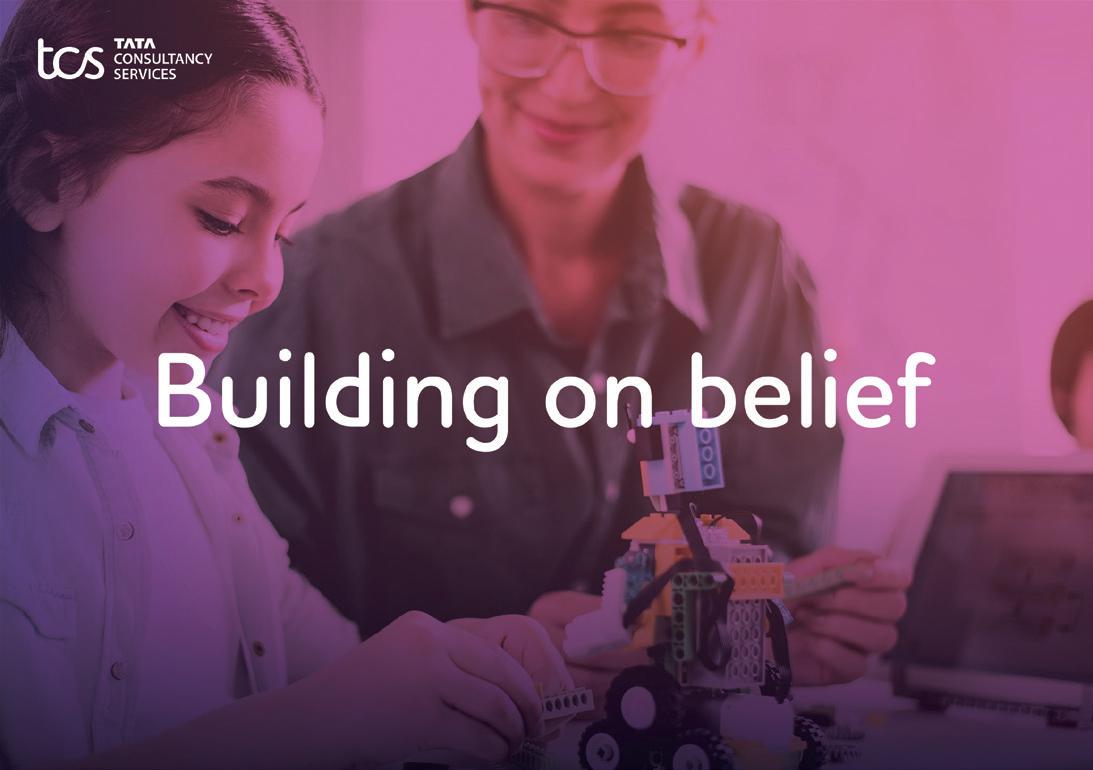
“This is what we do at TCS – help organisations realise their beliefs and make an impact in their communities.”
“When we started, fibre didn’t exist on the scale that it does now,” adds Romero. “We were the first to offer unlimited bandwidth – no data caps – through fibre. After this, the industry followed suit.”
Along with removing the data caps and offering users symmetric speeds, Converge was in no short supply of innovation: offering Time of Day fibre broadband plans, allowing customers doubled speeds at the
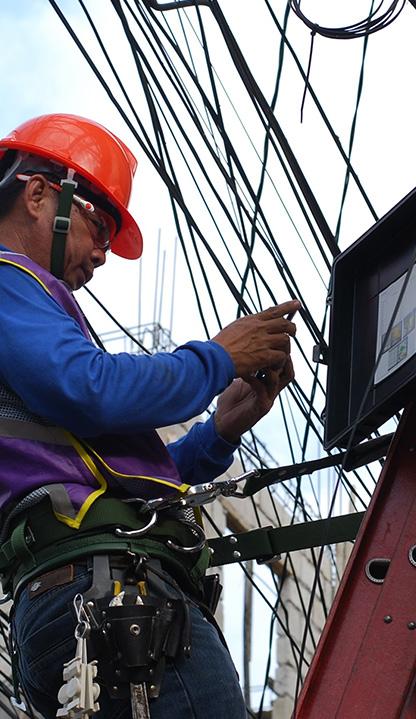 JESUS ROMERO COO, CONVERGE
JESUS ROMERO COO, CONVERGE
time of the day they need it most. This, Romero says, remains unmatched in the industry.
“Because we have the best network, we can then offer the best products to our customers,” he explains. “Recently, we launched our Gamechanger packages, which are specifically designed for gamers and gaming enthusiasts.
“These aim to deliver high bandwidth, high prioritisation with low packet loss, low jitter, and low latency.” The plans also come with free high-end gaming routers thanks to a partnership with ASUS Republic of Gamers, which began in 2018.
Converge is also continuing to innovate to address the evolving needs of enterprise customers. It launched flexiBIZ last year for the SME Segment and, under Converge Workplace, partnered with SweldoMo to develop an automated HR and payroll system, while also launching HOMEBASE, targeting the Small office, Home office (SoHo) segment.
“ WE WERE THE FIRST TO OFFER UNLIMITED BANDWIDTH –NO DATA CAPS –THROUGH FIBRE. AFTER THIS, THE INDUSTRY FOLLOWED SUIT”

Mr. Azada is Chief Strategy Officer of Converge ICT Solutions, Inc. He leads the team in identifying, developing, and executing key strategic initiatives to drive corporate performance. Prior to joining Converge as its Chief Strategy Officer, Mr. Azada was the Consulting Managing Principal and a Management Board member of PwC Philippines, and a Partner of PwC’s South East Asia Consulting Practice.
Mr. Azada started in PwC in 1996 as a consultant, undertaking transformation
projects in the telecommunications sector. He was assigned to PwC’s Hong Kong unit from 2001-2014, progressing through the ranks and holding increasingly responsible positions. Mr. Azada led strategy and business transformation projects for clients across Greater China and Southeast Asia, with emphasis in the sectors of information communications and telecommunications.
Mr. Azada holds a Bachelor of Science degree in Industrial Engineering from the University of the Philippines Diliman, and a PgDip in Business Administration (with Merit) from the University of Durham, UK.
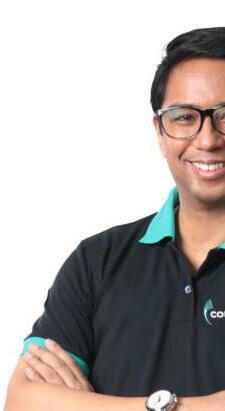
The business has declared its own sustainability commitments, highlights Benjamin Azada, Converge’s Chief Strategy Officer, who says minimising environmental impact is also highly
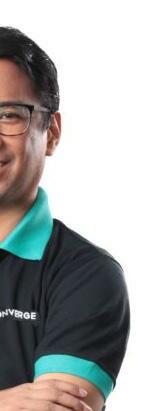
“We have decided that we should go above compliance and not only care about our financial performance, but also our environmental and social impact,” he explains.
“As an internet service provider, we have a mission to connect the unserved and underserved areas in the country with the needs of the Filipino people,” Azada adds. “By doing so, we want to ensure that we conduct our business while building trust with

our customers, upholding good governance, caring for our people and pursuing greener operations to minimise our negative environmental impact.
“Our ESG projects are focused on these guiding principles and include improving network resiliency and reliability, applying leading practices on compliance to applicable laws and regulations, fostering a culture of learning and development for our people and continuous execution and exploration of energy and waste management projects.”
This commitment was particularly important in the worst of the COVID-19 pandemic, when having a reliable internet service provider had never been more important.
“As most of our customers transitioned from traditional to hybrid or a work/business from home set up, having a strong digital highway to serve our customers' internet needs is critical,” comments Azada. “Thus, by having world-class economic, environmental, social, and governance commitments and practices, we are making our subscribers proud to be associated with a company that is not just customer-centric, but a business that creates a meaningful impact on the communities we serve and the environment in which we operate.”
